
- Switzerland
- The Netherlands
- National Parks
- Affording Travel
- Photography
- Responsible Travel
- Worldschool
- Wanderlust Guides
- Travel Planning
- Work with Us

Europe , Travel
How to travel europe like a pro: 50 europe travel tips you need to know before you go.
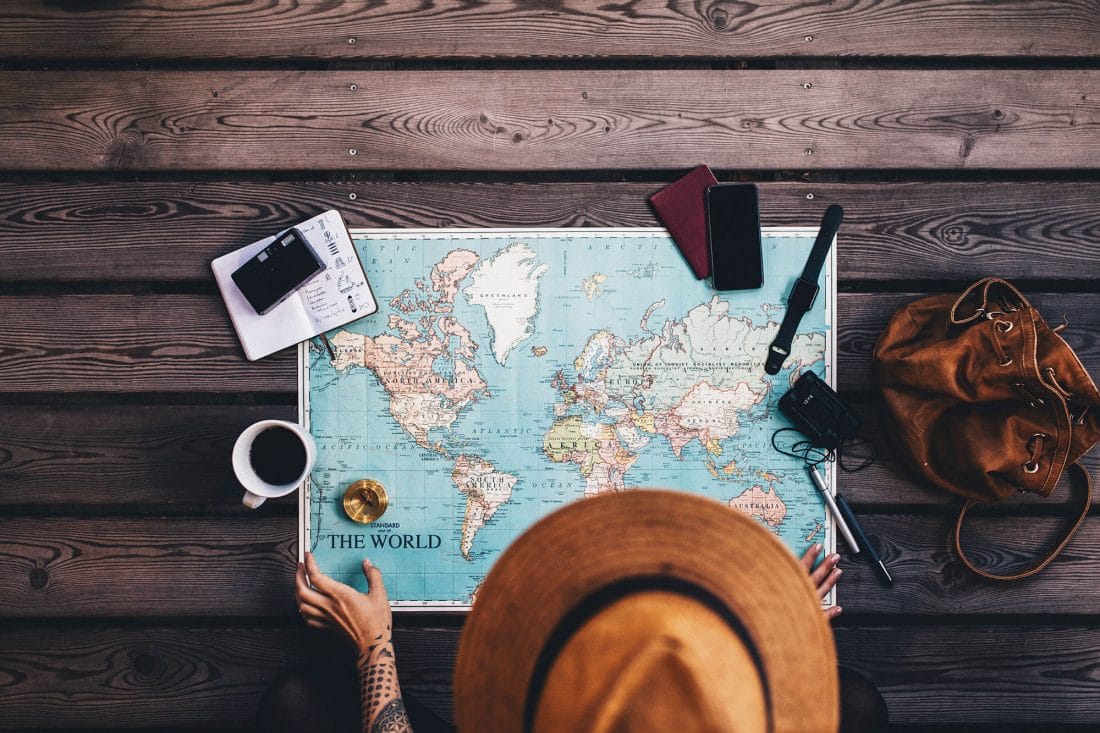
Before you go to leave, be sure to read these 50 essential tips for traveling to Europe that you help you travel Europe like a pro!
Europe travel tips: 50 things you should know before going to europe.
Europe is my favorite place to travel. Despite having traveled extensively around the world, it’s still the place I return to again and again. We travel Europe at least once a year, and even lived there for an entire year!
But you don’t have to stay for an entire year to get a feel for this amazing continent. Even just one week in Europe at any of these incredible destinations is enough to make you fall in love!
There are so many incredible places to go in Europe with so many different countries and cultures to explore without actually traveling very far! Traveling through Europe can seem a little overwhelming if you’ve never been before, so I wanted to share a few things you should know before going to Europe. This will make your first visit much more enjoyable.
If you’re traveling with kids, be sure to read these 10 tips for taking kids to Europe.
1. Budget for Your Trip
Before you even purchase tickets to Europe, sit down, like a responsible adult, and plan a budget for your trip to Europe. Make sure it’s realistic and make sure it’s something that you can afford right now. While I love to rack up credit card points by using them on travel, it’s important to be reasonable. The good news is that Europe can be done fairly inexpensively, in fact, we actually spent less money traveling Europe for a year than we did staying home!
How much does it cost to travel Europe?
That answer really depends on how many people are in your party, what style of travel you like, and how budget you’re willing to go. You can travel Europe cheap if you’re smart about it, but I would plan on $1,000/person for each week just to be safe.
The cheapest way to explore Europe is to plan ahead and shop around for the best deals on accommodation, transportation, and airfare because there are tons of Europe travel deals out there on the internet! If you want to know how to travel Europe cheap, you can read about how we actually spend less money living there for a year than we did at home.
Be sure to read my guide to planning financially for a vacation, which includes a Europe travel budget calculator so that you can find out just how much your trip will cost.
2. Save for Your Trip
Now that you have your budget set in place for visiting Europe you can start saving! These are some easy ways that I save money for travel. You don’t need to turn over your whole paycheck, but you’ll need to make saving for travel a priority so you don’t go into crazy debt to be able to afford it. Credit cards definitely have their place and can be useful for earning points, but be sure you pay it off each month! If you can’t afford to do so, maybe don’t spend it. This is why having a travel fund is so important. When those travel deals pop up you’ll be ready to jump with your special savings!
3. Check Europe Travel Visa Requirements
Americans traveling to Europe won’t need a Visa to travel to most countries on the continent. Europe travel visas are a little complicated, but you can learn more about them here. If you’re looking to stay in Europe for more than 90 days, read this.
Beginning in 2023, US citizens and citizens of other previously non-visa countries coming to the EU will now need a ETIAS Visa. Read here for what that means for you.
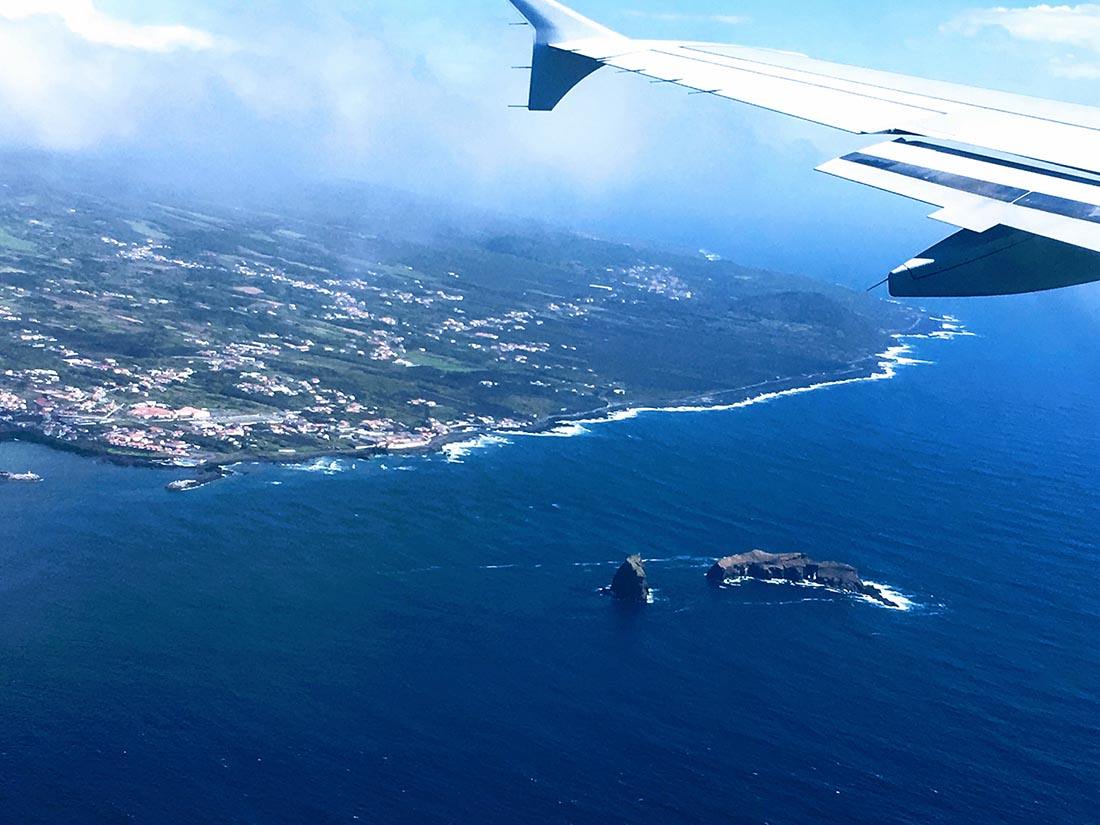
4. Buy Flights Early
You can usually get the best deals to Europe by booking early. Start keeping an eye out for cheap flights as early as possible. Read my guide to finding cheap flights to be sure you’re getting the best deals!
5. Read Books About your Destinations
Once you decide where you’re going in Europe, find books to read about it. I don’t mean guide books, although those can be great. I love these ones. I mean books, both fiction and nonfiction, that tell a story set in Europe. It can make your trip so much more meaningful when you have some connections.
You can read this awesome list of 100+ books organized by continent that will inspire you to travel.
6. Pack Light
Pack light, especially if you’ll be traveling around Europe and taking public transportation. There’s nothing more frustrating than trying to haul heavy luggage around on trains! I promise!
Make a packing list, then take less than you think you’ll need. If you’re going to Europe for more than one week, pack for one week, then plan on washing and/or re-wearing what you’ve brought. There’s nothing shameful about washing your laundry in a tub or sink or even spending some time with the locals at the laundromat! It could be an adventure!
If you want to wash your own clothes more efficiently, consider getting one of these awesome laundry wash bags that make laundry day way easier and more fun!
7. Bring Melatonin to Beat Jetlag
Consult your doctor before taking any medication. I am not a doctor, but this is what works for me. I buy the gummy melatonin (because I have kids) and take it with me every time I travel. Sleeping in a new bed is hard enough, but add a 6 hour time difference once you’re in Europe and it’s all over! When you’re ready for bed, take about 3-10 mg of melatonin which will help you shift your internal clock. Melatonin is an over the counter sleep aid and can be purchased at any drug store or grocery store. I really like this one because it tastes delicious and is 5mg (a good amount for adults) and this one for kids or smaller people since it’s only 2.5 mg (which is hard to find in stores).
Be sure to pull down the shades and make it as dark as possible. I like to use this amazing eye mask to achieve complete darkness! I love that it leaves space for your eyelashes, which is a huge selling point for me! And yes, it does look like a bra for your eyes!

8. Don’t Try to See it All!
This is probably one of my best Europe travel tips! T raveling to Europe for the first time will be so exciting and you’re going to want to see as much as you can. Europe is filled with so many bucket list destinations screaming to be visited! Unless you’re staying in Europe for a year, don’t try to see it all in one trip! Europe is huge and each country is so different. Just one city could honestly keep you busy for a lifetime!
Even though it’s so easy to travel around Europe, don’t spend all of your time on a train, plane or car! Plus, just more reasons to come back right?! I would stick to 2-3 cities in one visit depending on the length of your trip. The best way to travel Europe is slowly! Take your time, you can always come back.
If you only have one week, these 20 One-Week Europe Trip Itinerary Ideas will help you decide which cities to visit.
9. Book Your Accommodations as Early as Possible
Once you know where you’re going in Europe you can book your accommodation. The sooner you book your accommodation in Europe the better! You’ll have more options and lower prices.
We like to use this website to easily search for our desired accommodations. I like it because you can enter specific parameters like hotels with pools, good for kids, a certain number of beds, etc.
Also, consider using VRBO instead of staying in a hotel. It can significantly increase your savings! Staying in a VRBO also allows you to see your destination as the locals do.

10. Learn How to Travel Around Europe
Before arriving in any city, be sure to do some research and learn how to get around using public transportation or a rental car. Each city has its own rules that can be complicated to say the least. Using public transportation in a foreign country can be a great way to experience cities like a local but can also be intimidating. Be sure to do your research ahead of time so you know how to use each public transportation system. If you’re going to London, read my guide to getting around London here and my guide to train travel in Italy here .
11. Travel Europe by Train
I think the train is the best way to travel Europe!
Train travel in Europe is an efficient and inexpensive way to get around within the countries and between them. You may want to consider getting a Rail Pass train tickets . When you travel Europe by train, be sure you know the rules for each country.
If you’re going to Italy, read about how to use the train system in Italy here.
12. Get an International Drivers License
Be careful when renting cars in Europe that you check to see if an international drivers license is required. Obtaining one is quick and easy. You can make an appointment at any AAA. You’ll need 2 pictures of yourself and your drivers’ license. Read this to learn more.
13. Call Your Credit Card Company
Before leaving for your trip to Europe, call your bank and/or credit card company and tell then where and when you’re traveling. I can’t tell you how many times I’ve had my card put on hold from forgetting to do this!14 . Take a Credit Card, Debit Card, and Cash
In Europe they have this thing called “Chip and Pin” that the US hasn’t seemed to catch onto for some reason. Because of this, your credit card might not work sometimes, so be sure you have a debit card and/or cash on hand.
15 . Have Cash with You
I recommend using an ATM to withdrawal the local currency as it will use your bank’s exchange rate, which will most likely be lower than the foreign transaction fees of the currency exchange booths at the airport.
You’ll also want to have cash as some places may not accept cards. This is especially true for many gelaterias in Europe! You want to be sure to have cash for those important things like gelato!!! Some small towns in Europe may not even accept cards at restaurants, so you’ll want to have a decent chunk of cash hidden away.
16. Know About the Currency of Each Country
When I went to Europe as a little girl, before the EU was formed, every country had a different currency. It was really fun to collect the coins, but a nightmare when you were road tripping through Europe!
Now, most countries in Europe use the Euro, but some countries still use their own currency. Here is a list of countries who use the Euro:
- Netherlands
All other European countries that don’t use the Euro use a local currency. You can see a complete list here.
17. Leave the Majority of Your Cash in the Hotel
While it’s important to have cash available during your trip to Europe, you don’t want to be carrying around hundreds of Euros/Pounds/Franks/etc. every day. Leave the majority of your cash in your hotel room or Airbnb. Be sure to put it away so it’s not visible.
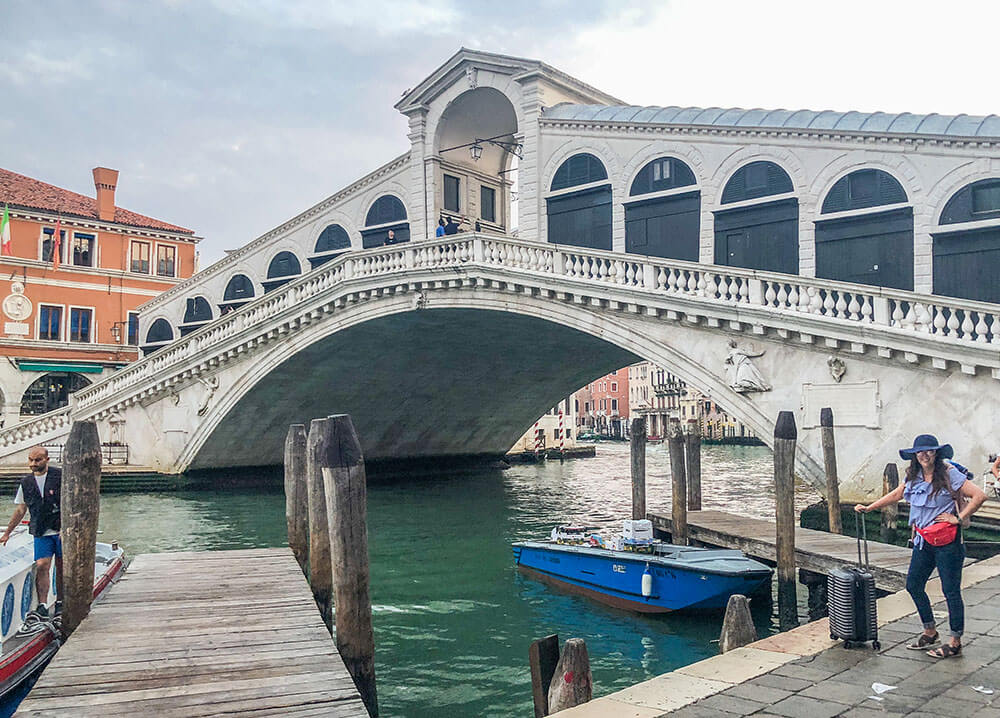
18. Wear Your Cash
I like to carry cash close to me in one of these carriers or in my favorite travel accessory ever… a fanny pack (bum bag for non-Americans). How did I ever live from age 10-30 without one of these?! Why did I stop wearing them? They’re literally the best invention!
I own several, including this beautiful one from Fawn Design , but I love these ones as well, and they come in 12 different colors. They are a perfect size to put your phone and wallet in. I even have this larger fanny pack that actually holds my Sony camera! I like it because you can turn it into a purse if you feel so inclined, but honestly, why would you want to?! Everyone get on the fanny pack train with me ok?! Please!
19. Spend Your Coins
I’m not used to pulling out coins to pay for things in the US unless I’m buying gum! But in Europe you’ll be getting a lot of 2 Euro coins that add up quickly. Be sure you spend your coins as well as your cash. Also, if you’re exchanging any leftover currency at the airport before you go home, they do not accept coins! I usually give my kids all my leftover coins to go to town at the airport gift shops!
20. Know How to Stay Safe
This is probably one of the most important travel tips for Europe.
Europe is pretty safe in general. But just like anywhere in the world, it is best to be on your guard and be away of risks and threats around you. Be especially careful in highly touristy areas where there are large crowds in small spaces. I highly recommend wearing a fanny pack instead of a backpack. And if you have a backpack, don’t keep your wallet in the front pocket where it’s accessible to pickpockets.
Don’t walk alone at night down dark alleys. Basically, take the same types of precautions that you’d take at home.
Also beware of scammers asking for you to sign a petition, mothers with children asking you for money, or people posing as train company employees offering to help you buy tickets. These are pretty well-known scams around Europe, so just keep an eye out and know what you’re up against.
21. Travel Insurance Europe
It’s always a good idea to have travel insurance when you travel to Europe. I think the best travel insurance for Europe is World Nomads. They are a reputable company that has been around for a long time. You can check their rates here. I also really like Allianz because kids are free! You can check their rates here.
22. Register with the State Department
For safety reasons, it’s a good idea to register your location and dates with the State Department. Especially if you’re travelling alone in Europe. It’s easy and only takes a few minutes. If anything were to happen, the Embassy would know to find and help you! You’ll see why I feel so strongly about this in my next tip…
23. Always Carry Your Passport
I feel like this is a highly debated topic, but I’m just giving you my personal opinion. We keep our passports with us at all times in Europe. We were in Paris on the day of the attacks a few years ago. If anything had happened to us it would have been essential for us to have our passports, especially if we couldn’t get back to our Airbnb. You just never know what could happen and it’s always better to be prepared for anything.
24. Book Attraction Tickets in Advance
With travel becoming more and more popular and overtourism becoming a real problem, popular attractions like the Eiffel Tower, Vatican, London Eye, and Colosseum require advanced booking or you risk not being able to visit them. This happened to us on one of our visits to Paris with the kids and it was a total bummer. You can book almost any attraction in Europe here , including skip-the-line tours.
25. Don’t Over-Plan
While it’s important to plan out your trip, especially for major attractions, be sure to leave some unscheduled time in your European itinerary for downtime and also for wandering aimlessly, which is one of my very favorite European vacation pastimes!
26. Get Off the Beaten Path
Definitely visit those top sites that you’ve been dreaming of seeing (there’s really no comparison to the Eiffel Tower), but don’t be afraid to get off the beaten path a bit and explore some alternative destinations and sites around Europe. With over 15 million tourists each year, Europe can get crowded, especially during peak season. Don’t be afraid to leave the tourists’ path and try something new and different.
27. Stay Connected Abroad

I don’t know about you, but I literally cannot live without my phone. It’s not because I’m addicted to technology (ok maybe I am) But seriously, maps, UBER, etc…so hard to live without those things, especially when traveling! Stay connected by either getting a local SIM Card (most airports will have kiosks where you can rent or buy one, or you can just buy one online here ) or use a Portable WiFi device like Skyroam.
Also use Express VPN. Learn more about why you need a VPN here.
28. Learn a few words of the local language
Knowing just a few words in the local language can be hugely helpful. Just knowing how to say please, thank you, yes, no, and excuse me can be crucial. Lucky for us language-lacking Americans, most people in Europe’s city centers will speak passing English and be able to understand what you’re saying at least. The farther out from the cities you get, the more difficult this becomes. You’ll also want to be sure you have the Google Translate app installed on your phone with the languages of the European countries you’re traveling to.
29. Wake Up Early
This may seem basic, but it’s probably one of my best Europe travel tips! Make use of those early morning hours and wander the streets before the rest of the tourists descend. This is especially true for Venice, Paris, and Rome, which can be magical places in the morning light. It’s the only time you’ll be able to experience these cities without the hoards.

I like to wake up around 5:30 or 6 and walk out the door right around the time the sun comes up, which will vary depending on the season you visit. Then we usually have an early lunch and go back to our Airbnb or hotel for a rest during the hottest and busiest hours of the day so we can recharge, and go out again around 3 or 4 for more exploring. Then we have dinner after the sun goes down to take advantage of all the daylight hours.
30. Shop at the Grocery Stores
One of my favorite things to do when visiting Europe is to shop at the grocery stores! I know it seems really silly, and non-vacation-like, but I get pretty sick of eating out and I love to discover the different products in foreign countries.
If you visit Paris, Monoprix is my favorite store. In London, I love Marks & Spencer. At these stores, you can also usually find premade salads, sandwiches, and pre-cut and packaged fruits and vegetables which make for really convenient picnic food or just a meal on the go. It’s also a great way to save money while traveling in Europe.
Pay attention to the opening hours because some shops close in the afternoon for lunch and a nap!
31. Shop at the Markets
Be sure to spend some time shopping at the local markets around Europe. You never know what you’ll find. Most markets are not just a touristy thing to do, but places that locals come to get their weekly or daily groceries. Try something you’ve never tried before. You never know what you might fall in love with. Some of my favorite European foods are ones that I’ve tried at a market. Check out the best European markets here.
32. Know How to Find Authentic Restaurants
When you’re looking for a great authentic and affordable place to eat in Europe, get AWAY from the main tourist attractions at least several blocks before considering anything.
Avoid places with pictures of food and a million things on the menu and no prices. Good restaurants will have only a small selection of food and no pictures!
Look for locals! If you don’t see a lot of tourists eating there, but it’s packed with locals, then you’re good!
33. Be Aware of the Coperto
Be aware of the coperto , which is basically a charge for sitting down to eat. Some people in Venice have recently been scammed and charged several hundred dollars for the coperto! It’s rare, but just beware and don’t be afraid to ask. Most menus will have the coperto price listed in really small print somewhere.
When eating out in Europe you may have to be a little more forthright with your waiter. Only in America do the waitstaff check on you every 5 minutes! Since tipping is not as expected in Europe as it is in the US so you won’t receive the level of butt-kissing that you may be used to. Don’t be afraid to signal them for attention if you need something and you’ll probably need to ask for the check when you’re done.
If you’re visiting a pub in the UK, you’ll need to order your food at the bar, then find a seat. We’ve learned these lessons the hard and embarrassing way, so please take my advice!
34. Know About Tipping in Europe
Tipping is pretty expected in Europe, but not the 15-20% like in the US. It’s hard for me to let this one go, but the customary tip is usually the small change if you’re paying cash. I’ll be honest I still leave a pretty good tip, especially if I had a great waiter who was patient with me and walked me through the menu and made suggestions. If you can afford it, I think it would make someone’s day to give a good tip, especially if they’re deserving, however, it’s not required or expected.
If you’re paying for dinner with a card, you’ll most likely need to bring cash for a tip! The card machines in most restaurants in Europe do not allow for you to leave a tip on your card.
Also, when paying with a card, your waiter will bring the card machine to the table. This is something I wish they’d do in the US as well. I don’t like the idea of someone walking off with my card!
35. It’s OK to Drink the Water
Most of the water in Europe is safe to drink from the tap. In most restaurants, you will not be given tap water without asking for it, especially if you’re American, but don’t be afraid to ask!
If you’re skeptical about drinking the tap water you can always order bottled water or use a filtered water bottle or life straw.
36. Eat at McDonald’s
I know…this seems like the most ridiculous bad-tourist thing to do! But eating at McDonald’s in Europe is a really fun experience. Every country has its own spin on the fast food chain. France has Croque Monsieur, Italy has mozzarella sticks, etc. Plus, my kids tell me that the toys in a Happy Meals are better in Europe…in case you were wondering!
37. Take a Bus Tour
Take a bus tour. Taking the HOHO bus (hop on hop off) on your first day in a new city can be really helpful. It allows you to get a good overview of the major European cities quickly so you’ll be prepared to take it on by foot!
38. Take an UBER Tour
Many cities in Europe offer UBER tours where you can book a driver for an hour and they will take you around the city. It’s great to have a local who drives the city for a living taking you to all their favorite spots. We did this in Rome and it was one of our favorite experiences!
39. Take Free Walking Tours
Many European cities offer free walking tours, which can be a great way to learn about a city. We like to use Guru Walk . Be sure to tip your guide well since your tour was free!
40. Rent a Bike
Renting a bike is a great way to see areas of Europe. I love biking in Paris especially. You can also book bike tours that provide a guide.
41. Book Airbnb Experiences
In an effort to be a more sustainable traveler, we’ve started doing more and more Airbnb Experiences that benefit the locals rather than larger tour companies. If you’re looking for a really authentic experience with a local, book a tour or class through Airbnb. We have done cooking classes, food tours, and photography tours through Airbnb and they’ve all been great! It’s a great way to connect with a local and really enrich your trip.

42. Visit Museums
No one does museums better than Europe! Maybe because there is so much history there, they seem to be masters at preserving and displaying artifacts and also making it really fun and educational at the same time.
Take advantage of the many museums in Europe. If you’re traveling to Europe with kids, they will especially benefit from this as they are free in most museums. Don’t be afraid to try the smaller lesser-known museums, as well, as these can be real hidden gems. Check out the awesome museums just in London here.
43. Attend Theater or Concerts
Take advantage of all the culture and talent in Europe. It can really enrich your experience to see a show or a concert. We love seeing shows in the west end in London, ballets in Paris, operas in Vienna, and orchestra concerts in Venice!
44. Take Advantage of Free Activities and Sites
Keep an eye out for free things to do in Europe. Many of the sites are free and looking for activities that don’t cost you a thing can help you branch out and try new things!
45. Know How to Use the Restrooms
Many European bathrooms will charge you to use them. Some cities, like Paris, have little toilet huts (I don’t know what else to call them) in the city center that require some coins to enter. Other bathrooms will have turnstiles to enter the bathrooms, others will have a bathroom attendant who collects your money and keeps the bathroom tidy.
There are all sorts of restroom situations in Europe, so just be prepared for anything and always have coins on you. I’d say the average bathroom fee is 50 Euro cents.
46. Keep a Travel Journal
When I was little and taking my first trip to Europe, my grandma made me keep a travel journal. I hated it! But now, of course, I look back on that journal and love reading it! Keep a small, simple journal with you and write about each day. I love this travel journal because it has writing prompts included.
47. Talk to the Locals
The best way to get to know a destination is to get to know its people. Don’t be afraid to talk with the locals. Learn their stories. They have probably lived in the area for a long time and can tell you the best places to eat and spend time. We’ve made some lifelong friends that we still keep in touch with this way.
48. Be a Responsible Tourist
Overtourism is becoming a real problem in Europe. With so many tourists visiting each year, cities are getting more and more crowded and more and more polluted. When you travel to Europe, be responsible. Remember that you are a guest in another country. Please behave as if you were visiting a distant relative. Don’t litter, don’t be too loud or obnoxious, and respect their rules.
Also, be mindful of the environment. Limit plastic usage by bringing a reusable water bottle from home and avoiding plastic straws. You can learn more about sustainable travel here.
49. Volunteer
If you find an opportunity to volunteer when you travel through Europe, this can be a great way to make an impact and a memorable way to spend your trip. Check out JustServe.org for volunteer opportunities around the globe.
50. Expect Problems and Roll with the Punches
Expect problems on your first trip to Europe. It’s only natural that not everything will go to plan. For as many times as I’ve been to Europe, I have yet to have one trip go smoothly. One time I almost got robbed, another time a Taxi driver drove off with ALL my bags, once my husband missed a train while I had 4 little kids and all the luggage.
Traveling is just like life. There will always be hiccups along the way, but this makes travel exciting and memorable! The hiccups are all part of the experience. The trick is to enjoy the ride and make the most of any situation. Don’t let the setbacks ruin your trip.
BONUS 51. Have Fun!
I hope this one is a given. It’s nearly impossible not to have fun while traveling in Europe. Now that you’re armed with all these tips, I hope you’re ready to book your flights!
Do you have any other tips for visiting Europe? I’d love to hear them! You can get in touch with me via Instagram of Facebook.
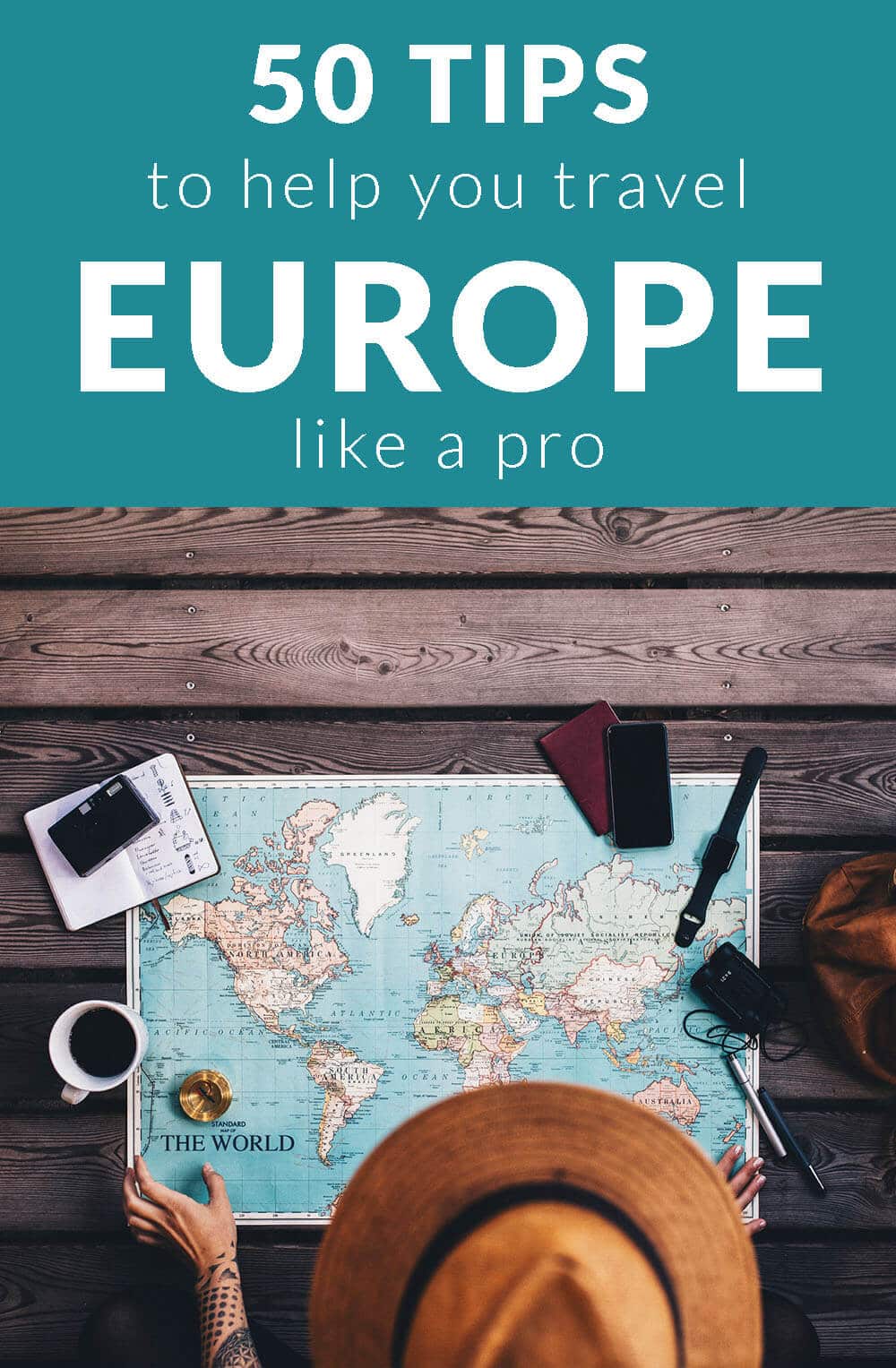
Practical Tips for Booking your Trip
Book Your Flight s and Car Find a budget airlines by using Skyscanner . This is my favorite way to search for flights because they crawl websites and airlines around the globe, so you always know you’re getting the best deal. Learn more tips for finding the best flight deals here. For cars, I like to use Rental Cars because they have good filters and its easy to search for multiple companies.
Book Your Accommodation My preferred way to stay around the world is VRBO . I find it usually gives you a unique local experience in any destination. If you want to stay in a hotel, use Booking , as it consistently gives the cheapest rates for guesthouses and hotels. I use them both all the time.
Always Get Travel Insurance Travel insurance protects you and your family against illness, injury, theft, and cancellations. It’s peace of mind in case anything goes wrong. I never travel without it. I’ve been using World Nomads for the last few years and love how easy it is to use. I have also used Allianz . Compare rates to see which is best for the coverage you need.
Looking for ways to save money on travel? Check out my resource page for the companies I use for traveling! I share everything I use to save me time and money.

Wanderlust Crew

100+ Europe Travel Tips for First Timers & Must-Knows Before You Go
Last Updated: November 6, 2023
*FYI - this post may contain affiliate links, which means we earn a commission at no extra cost to you if you purchase from them. Also, as an Amazon Associate I earn from qualifying purchases. Check out our Privacy Policy and Disclosure. for more info.
Headed to Europe for the first time and trying not to cry?
I get it. You’re probably a hot mess of emotion right now. Between the excitement of ticking off bucket list moments and the anxiety of getting pickpocketed or (possibly worse) getting side-eyed by cool European youths, there’s a lot of potential for stress carbs and sheer overwhelm.
Don’t worry though – I have all the Europe tips you need in this post to keep those first time jitters at bay, and ensure you’re fully prepared for your big European adventure.
So, what are some must-knows before you travel to Europe for the first time? Read on for a full of my best Europe travel tips, after over a decade of travelling around/living on this gorgeous and delicious continent.
NOTE: As an aggressively apologetic Canadian, I must first clarify that these European travel tips are written from a North American perspective, and there are some culture shocks that (while seemingly basic) can really confuse a 1st time visitor, so… yes, this is just me covering all the bases. Enjoy!

Save this list of Europe Travel Tips for Later!
You’ll be very glad you did.
Europe Travel Planning Tips
Let’s start with some planning-related Europe tips to help you with flights, booking hotels in Europe, choosing dates, the best times to visit Europe, etc. to get you from armchair travel to your real-life dream trip.
Steal my step by step guide to planning a trip to Europe from scratch
This post is full of random Europe travel tips, but if you are looking more for step by step guidance, be sure to check out my step by step guide to planning a Europe trip.
Also be sure to check out my free Europe trip planner book , as well as my free International Travel Checklist for a list of things to do before you travel abroad.
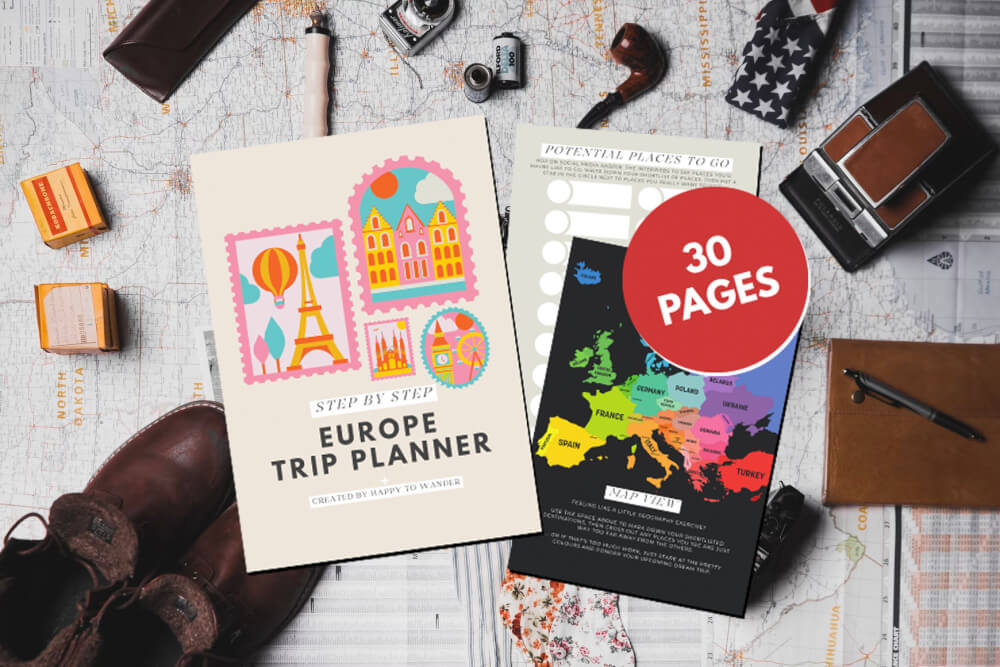
Avoid peak travel times
If you have the luxury of flexibility, I’d avoid visiting Europe between mid-June to the end of August.
Simply put, this is when prices and crowds are at their highest, and (depending on where you go) temperatures during this season can reach a point of salty, sweaty discomfort.
Instead, consider going in the Spring , Fall or Winter!
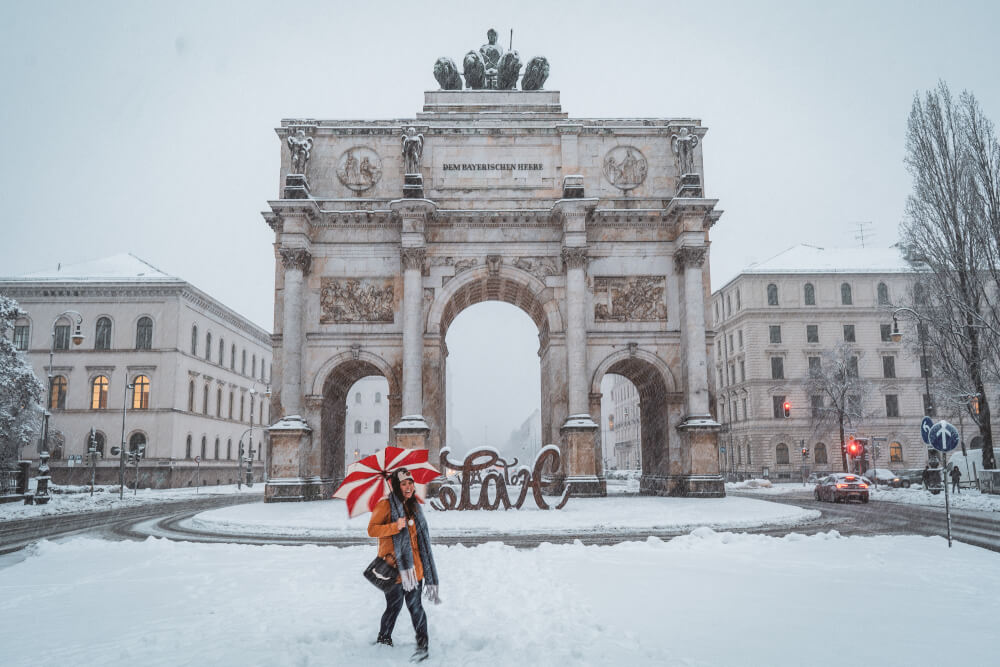
Avoid European holidays
In addition to avoiding North American holiday periods, be sure to also consider popular European school holidays too.
Generally, speaking longer European school holidays will take place during Easter/Christmas, a very popular time for European families to travel around the continent too.
Yes, Europeans can be avid tourists too. Don’t forget that!

Go for Christmas markets!
Okay, this may be a direct contradiction to what I said above, but one exception I’d make for “peak season travel” in Europe is going to Christmas markets.
This is one of the most magical times to visit Europe, and if you plan your visit for earlier in the season (late November, rather than close to Christmas), you’ll usually be able to avoid the bulk of the crowds.
Here are my top must-knows for visiting Christmas markets in Europe if you want to learn more.

Consider getting a travel credit card
I’m going to level with you: no matter how you plan it, even if you stay in hostels and subsist solely on hummus and bread scraps, you will end up spending a lot of money on your Europe trip.
… so you might as well try to reap as many rewards from it as possible!
Getting a travel rewards credit card before booking all your hotels and flights is one of my favourite underrated Europe travel tips.
There’s a million options out there, so I’ll leave the research/choice up to you, but just make sure you’re booking everything on a card that maximizes the amount of benefits you get.
For me personally, I have the Amex Platinum , which yes has a really high fee but at least for the first year it’s super worth it because you get travel credits, travel insurance, lounge access, and most importantly, enough bonus sign-up points to get you a roundtrip flight to Europe from North America! It’s not for everyone, but definitely worth looking into.
Bonus sneaky point hoarding tip: Travelling with friends? Especially if they don’t collect points of their own, offer to book for everyone, then have them pay you back. Whee – free points without needing to spend all the money!

Get a Wise card
If you’re not interested in getting a travel credit card, a handy and free alternative I can highly recommend is a Wise card.
Having a Wise card allows you to “send and spend money around the world at the real exchange rate”, avoiding hidden fees in the process.
It is SO handy for travel, because you can use it for over 150 currencies around the world, and you even get 2 free ATM withdrawals per month with it overseas.
And because your card is linked to your Wise account, you can simply load it up with a minimal amount of money so you don’t have to risk your normal credit/debit cards while walking around.
You can use my referral link here to transfer your first $500 fee-free.
NOTE: I’ve also had a good experience with Revolut when I lived in Germany, but they don’t offer services for Canadians so I can no longer use them.

Focus on one or two countries for shorter trips
Unless you have a lot of time to work with, I would recommend getting to know one or two countries well rather than trying to visit too many countries in one go just for the sake of checking them off your list.
While travelling between European countries can be affordable and quick, hopping around too much can be a sure recipe for burnout and time lost commuting.
Plus, the more you see of one country, the more you’re able to get more off-the-beaten path and find spots you hadn’t heard of before!
Check out my list of 1 week itineraries for Europe if you need inspiration.

Learn all about the Schengen Area
An important must-know for all first time visitors to Europe is that border-free travel doesn’t exist across the continent (as is commonly believed).
Rather, border-free travel apples only between countries in the Schengen Area, this group of 27 countries (accurate as of 2023):
- Liechtenstein
- The Netherlands
- Switzerland
When crossing borders outside of these countries, you will need to clear passport control as normal.
Understanding this distinction will help you plan how long you can stay in different countries, as well as Europe in general, and give you some insight into logistics like when you’ll need to clear passport control, and which visas you might need for where.
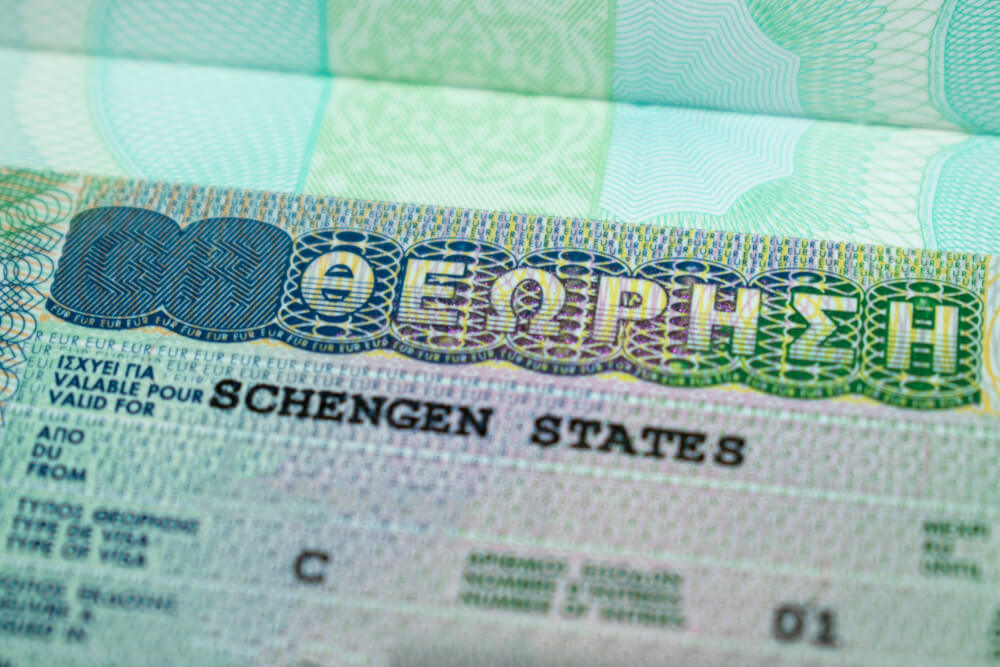
Use your understanding of the Schengen Zone to legally stay in Europe longer
For most tourists, the maximum amount of time you can spend in the Schengen Zone is 90 days out of 180 days .
Simply put, if by the time you leave, you can look back on the past 180 days and say you stayed less than 90 days total, you’re good.
BUT if you want to stay in Europe for longer than that amount of time, you can utilize your Schengen Area understanding to stay longer, simply by including travel to non-Schengen countries.
For example: Let’s say you can only spend 90 days in the Schengen Zone, but you’re allowed to spend 180 total in the UK. You can easily make your European trip longer than 90 days by adding time in the UK, Ireland, Bulgaria, Romania or any other non-Schengen country.

Consider more off-the-beaten path destinations
Another benefit of visiting non-Schengen countries is they’re often lesser visited, and filled with some truly amazing hidden gems.
For example, I’m a HUGE fan of Bulgaria. (Here are some of the coolest things to do in Bulgaria that you probably haven’t heard of.)
While I totally understand the desire to see the most popular and best-known destinations on your trip, sometimes visiting these lesser known spots can bring amazing surprises that end up being the highlight of your vacation!
Of course, there’s a middle ground too – you can easily get the ‘best of both worlds’ by combining a hugely popular destination with some side trips to other lesser known places in the same country. These posts might help with that:
- The Best Places to Visit in England (Besides London)
- The Best Places to Visit in France (Besides Paris)

Offset pricey destinations with more budget-friendly ones
If you’re hoping to visit Europe on a budget, but still have some pricier destinations on your bucket list (e.g. Switzerland, Norway, Sweden, Iceland, UK, Germany, etc.), then a great way to cut costs is to round out your itinerary with more affordable stops (e.g. Bulgaria, Romania, Poland, Montenegro, Lithuania, etc.)
This of course makes more sense on longer trips where you’ll be covering a lot of ground, but just remember than some European destinations are MUCH rougher on the budget than others, so mix it up if you’re looking to give your wallet a break.
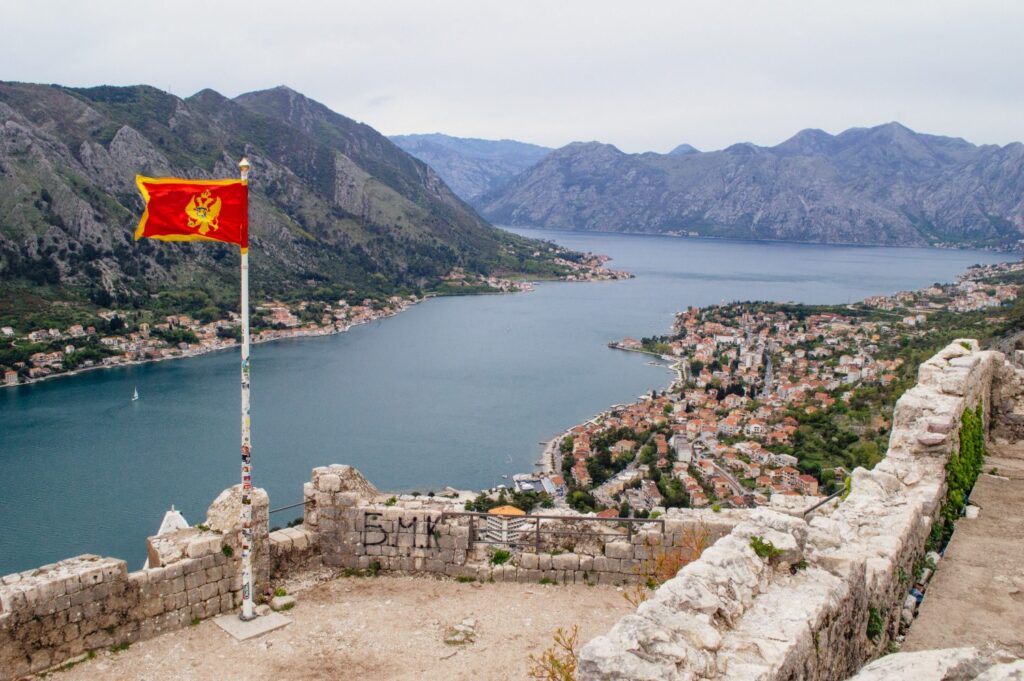
Alternate between busy and chill destinations
On a similar note, you should make sure your Europe trip itinerary also includes a mix of busy and relaxed places.
One of the biggest mistakes I made during my first backpacking trip was I crammed SO many huge cities into my itinerary, one after another.
But when your itinerary is nothing but European heavyweights like Paris, London, Amsterdam, Rome and Florence… yikes, you’ll be sightseeing your eyeballs off daily with zero chance for breaks.
So, here’s a very important Europe travel tip when planning your itinerary: try to space out the “big” cities with chiller destinations, maybe nature or beach breaks so you have time to rest up before sightseeing like the Energizer bunny once more.

Learn the tricks to getting cheap flights TO Europe
Not sure how to get the best flight deals for your big Europe trip? Be sure to check out my guide on how to get the cheapest flights to Europe .
I promise it’ll save you hundreds of dollars, if not more.

Take advantage of free stopovers
Certain airlines have a free stopover program where you can have a long layover for no extra cost, meaning you get two destinations for the price of one plane ticket!
Here are some Europe-based airlines that offer this:
- IcelandAir: Free stopovers in Reykjavik for 1-7 days
- Iberia: Free stopovers in Madrid for 1-6 nights
- TAP Portugal: Free stopovers in Lisbon and Porto for 1-5 nights

Steal my step by step process for finding the best hotels
If you’re overwhelmed by the prospect of booking all your own places to stay, I have just the resource for you.
Here’s how to find the best accommodation in Europe every time.

Book hotels far in advance
And if you don’t have time to check out my whole step by step process, then here’s the #1 piece of Europe accommodation wisdom I can give you: book your hotels as soon as possible.
In many of Europe’s most popular destinations, good value accommodation books out quickly, so your biggest defense against outrageous prices and poor quality hotels is booking early.
Even if you’re not going in peak season, you never know when an unexpected event (e.g. a big concert, sports game or conference) will send hotel prices soaring, so the sooner you book, the better.
I know that committing to a hotel early can feel scary, but if you use Booking.com , you can find hundreds of hotels that offer free reservations and free cancellations up until a certain point.
I’ll often hop on Booking.com to make a placeholder / “just in case” reservation in the early stages of my planning just to ensure I have a Plan B in case prices skyrocket.

The European hotel star system is different to North America
I grew up with a North American hotel system where 5* meant opulent luxury and 1* meant run for the hills, unless you want to lose your kidneys.
The star ratings in Europe are a bit different. Instead of stars coinciding to quality on a scale of 1-5, the stars actually correspond to a checklist of amenities/requirements.
SO, you can get some amazing 2* properties that are simply smaller and don’t really have things like a spa or pool, while also finding crappy 4 or 5* properties that have that rating just because they’re big and have amenities like fitness centers and valets (i.e. many chains).
Learn more about the criteria for star ratings here.

Avoid airport hotels unless flying in or out
Tempted by a cheap hotel deal near the airport? Run.
Unless you are flying into your destination late and need a place to crash or are flying out early in the morning, do NOT book a stay at any airport hotels.
With Europe travel, you want to ideally be close to the sights or at least in a scenic neighbourhood, not next to a motorway. Adding in the time and cost of commuting to/from the city centre, it’s rarely worth it so keep that in mind the next time you’re tempted by the siren’s call of an airport Ibis.
Learn the options for free accommodation in Europe
Hoping to find places to stay for free in Europe? There are indeed options for that!
Here are a few ways you can potentially find accommodation for free:
- Couchsurfing: Crashing with someone within a community of travellers where people offer to host each other in their homes free of charge
- House Swap: Trading homes with someone (like in The Holiday). Many sites facilitate these exchanges, including HomeExchange and Kindred
- House and Pet Sitting: Looking after someone’s house/pets in exchange for free accommodation. One of the most popular platforms for this is Trusted Housesitters
- Workaway: Volunteering your time/services in exchange for accommodation

Don’t forget travel insurance
I personally believe that travel insurance is a must for every trip. Trust me, the peace of mind is worth the cost!
Click here to check rates with WorldNomads.

Make sure you’ll have Internet access
This tip goes without saying, but if you’re old school and prefer to travel without Internet, don’t.
Really, as romantic as it is to disconnect during your travels, having an Internet plan for your phone is crucial. It allows you to navigate with Google Maps, use translation apps, do research on the go, etc.
Without it, your trip will be infinitely harder. No joke – some places these days even require you to have data to scan menus!
Luckily, roaming within the EU is free, and it’s wayyyy cheaper than what we have in Canada.

Download helpful apps before you go
On that note, once you have a data plan set up, you can take advantage of all the helpful apps for Europe travel available.
Some of my favourites include…
- Omio : Great for comparing and booking transport options (including buses, trains, and flights) from Point A to Point B.
- Google Translate : A must for translating signs and menus if you are in a country where English isn’t the main language
- Splitwise : Helpful for tracking expenses split between friends, great for minimizing awkwardness when dealing with trip finances
- Too Good to Go : Perfect for buying discounted meals at the end of the day to save food from going to waste

Download TripIt to keep track of all your travel bookings
Speaking of helpful Europe travel apps, another one I can recommend is TripIt.
This app works like magic to organize your hotel bookings, flights, tickets and all in one place… the best thing is, it does it automatically through scanning your inbox for confirmation emails.
If you’re planning a long trip with multiple stops, hotels, modes of transport, etc. to worry about, then TripIt is a great tool for organizing everything in one neat place.

Ensure you have proof of onward travel
“Proof of onward travel” is a very important consideration that many first-time travellers forget about.
In sum, it’s proof that you’re leaving your destination before your visa or allowance expires.
Usually this proof is provided in the form of a ticket back home, or a ticket elsewhere to prove that you’ll be leaving at some point.
A lot of people dismiss this requirement as a myth, but trust me: it’s not.
I was once almost barred from boarding a flight to Germany because my return flight was after the 90 day Schengen Zone allowance, and I didn’t have proof I would be leaving the Schengen Zone before the 90 days was over. I intended to spend some time out of the Schengen Zone to ensure I never overstayed, but they demanded proof… so yes, they do check!
Want to learn more? I have a full article if you want to read more about proof of onward travel and my experience lawyer-ing myself out of that (very awkward) situation.
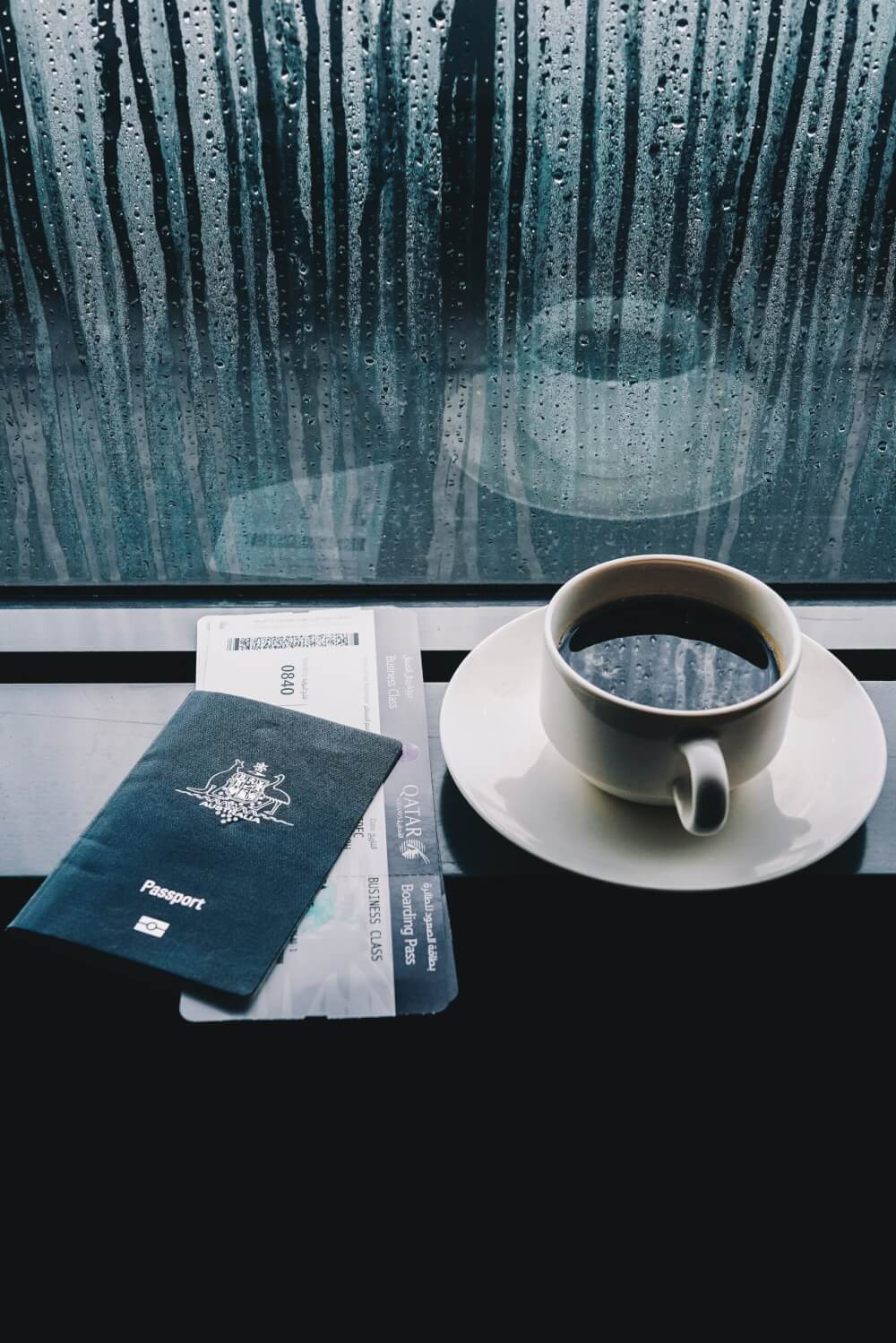
Steal my pre-made itineraries
Lastly Europe travel planning tip: I know that making itineraries can be exhausting, but luckily there are Type A laptop gremlins like me who adore doing it.
So, here are some itineraries for you to steal in case you need them:
- My 1.5 month Western Europe backpacking itinerary
- My 40+ one week in Europe itineraries
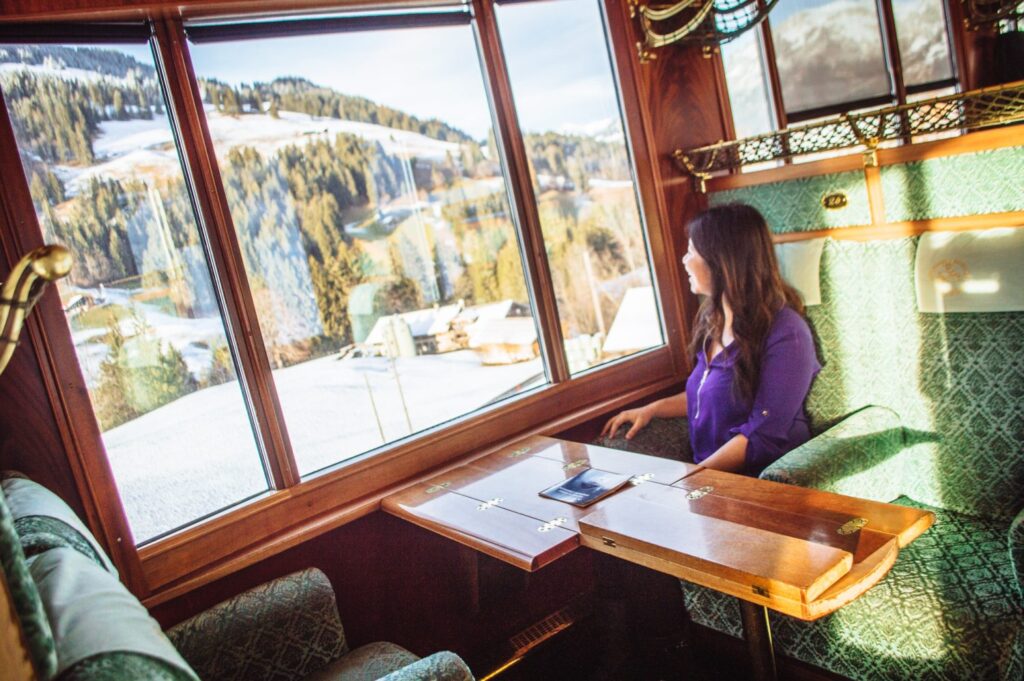
Europe Travel Tips for Transport & Getting Around
Getting around Europe can be really daunting for a first-time visitor, so here are all my best Europe tips related to transport and getting from one place to another.
Public transport is abundant and amazing
Don’t be afraid of using it!
I’m always shocked when I hear travellers who think that they’ll need to rent a car for their Europe trip.
Oftentimes, you really won’t need to, especially if you’re mainly visiting big cities.

On that note…
Avoid renting a car
Unless you are doing a trip that focuses heavily on natural sights or smaller remote villages, odds are you won’t need a car.
Public transport (as I mentioned above) is a solid option, and involves a fraction of the stress often unleashed by car rentals.

… But beware of hidden costs if you do rent a car
When it comes to car rentals in Europe, often the first price you see isn’t indicative of what you’ll have to pay in the end.
Some hidden/additional costs might include…
- Age or nationality based surcharges
- Additional driver fees
- Multiple country fees
- Extra miles
- Extra insurance
- One way fees
- Tolls/vignettes
So if you still want to rent a car, here is a post to help you figure out how much renting a car in Europe really costs .
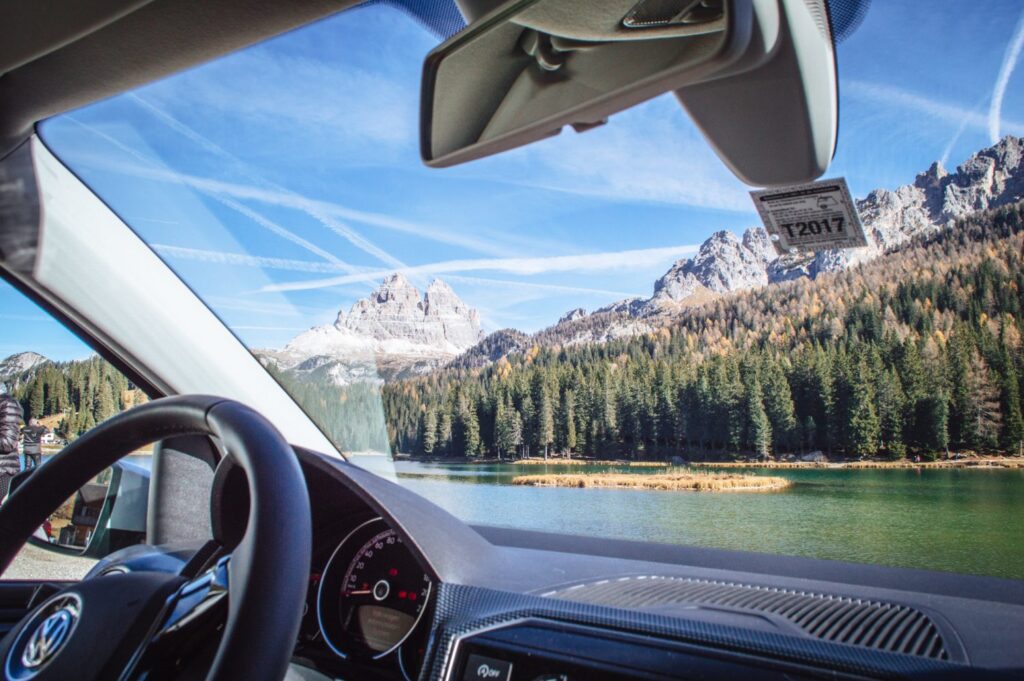
Renting a car? You might need a vignette
One of the pains of car rentals is the additional fees. In many European countries, you need to pay for a vignette (a sticker you put on your car) to use their motorways.
In Switzerland for instance, this costs 40 francs… and yes, you need to make sure you have the vignette BEFORE you drive into the country, as there are automatic scanners at the border that can pick up your details and send you a ticket later (which we learned the hard way).

Do a lot of research before committing to a Eurail pass
Many first time visitors to Europe think of a rail pass as the cheapest option, but very often, booking your train tickets in advance will work out to be cheaper than a Eurail pass, especially if you aren’t taking that many trains and don’t need full flexibility (i.e. you are okay to book the trains advance).
Eurail passes can be great value, but not always. If you need help figuring out whether they’d make sense for you, read my full Eurail review for more details.
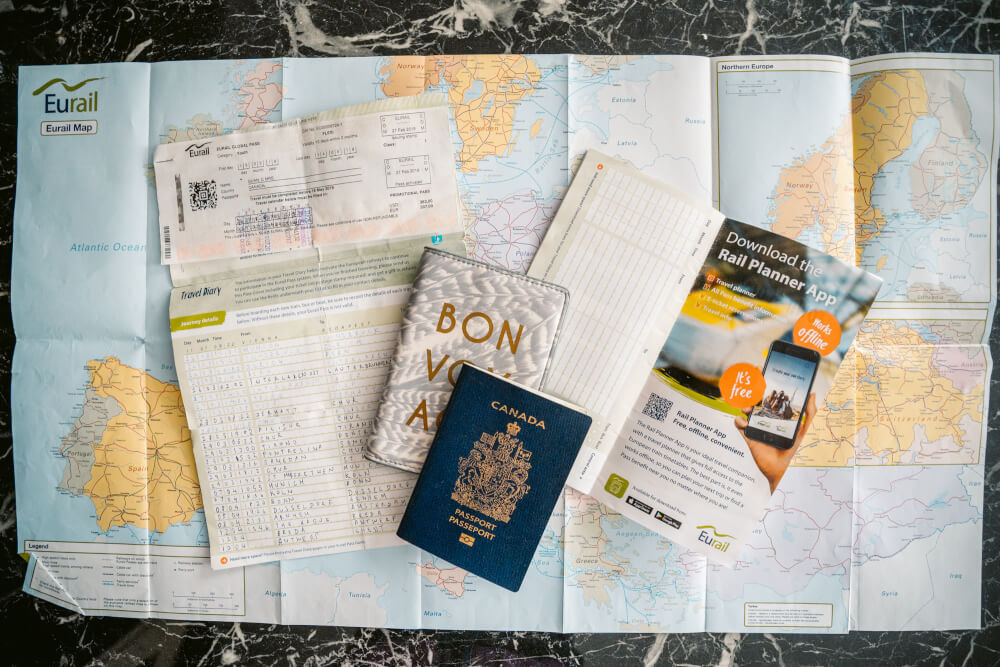
Look into scenic European train rides
I’ve already made my allegiance to European public transport pretty clear, but one of the main reasons is simply how beautiful it can be.
Sure, trains aren’t always the cheapest way to to travel Europe , but they’re often the most scenic and beautiful.
So if you’re into the idea of travel as an experience, then be sure to read my post on the best scenic train rides in Europe , and the best scenic train rides in Switzerland .

Familiarize yourself with Europe’s most famous budget airlines
One of the cheapest ways to get around Europe is hopping around on budget airlines… where sometimes an international flight is cheaper than a 6 pack of nuggets.
Of course, the epic prices come with their own set of drawbacks, usually in terms of the flight experience, customer support, and additional add-ons (which always come at an extra fee).
You can learn more specifics about Europe’s top budget airlines through my reviews here:
- Honest RyanAir Review
- Honest easyJet Review
- Honest WizzAir Review

Consider bus/coach travel if you’re on a budget
In addition to planes and trains, Europe is very well connected by an extensive bus (AKA coach) network.
One of the main contenders in this space is Flixbus, but depending on the country you’re visiting, there’s often local companies offering affordable bus travel between cities as well.
Again, I’d recommend using Omio so you can quickly compare buses, trains, and flights at the same time, but just know that bus travel in Europe can be a really cheap, safe, and easy way to get around.
Although there are of course some downisdes as well. You can read my full Flixbus review for more details.

Book an airport transfer for minimal stress
I love navigating Europe with public transport but if you’re travelling with a lot of luggage or as a big group, one of the more cost effective ways might actually be to just book a private transfer or taxi.
Of course, depending on where you go, taxi scams can be a real possibility, so for the least stressful option, consider booking a Welcome Pickups transfer, which is a set price, includes an English speaking driver who monitors your flight arrival time, and offers free cancellations up until 24 hours before.
This saves you the hassle of trying to get a taxi/navigate the language barriers to do so.
… Plus they pick you up with a cute little sign that has your name on it!
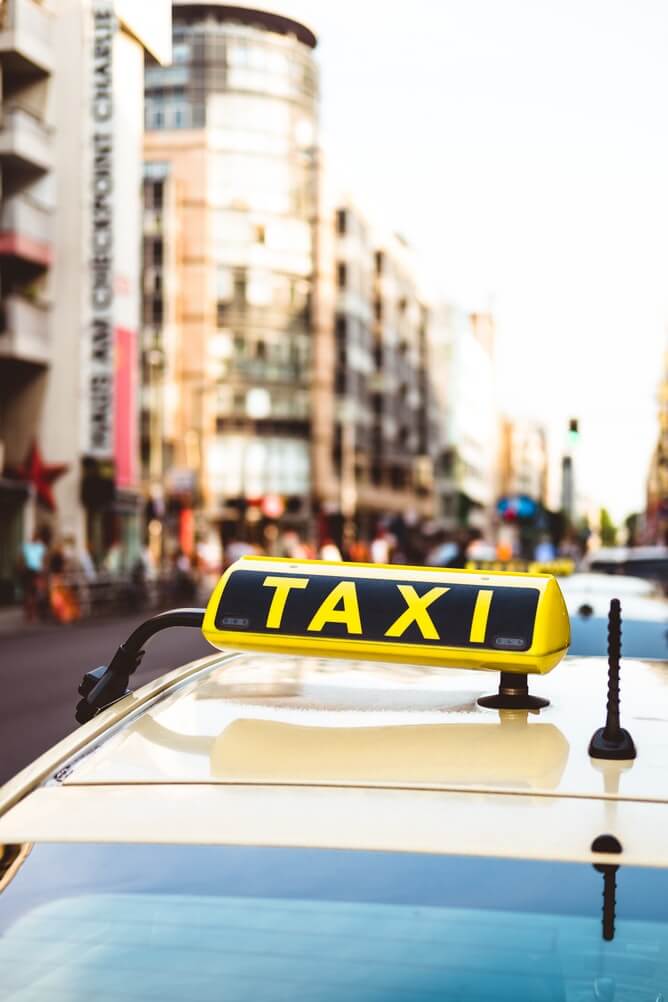
Do research on how trains work in your destination
I have to say, one of the most overwhelming things for me in Europe was getting used to how trains work. I come from West Coast Canada, where passenger rail from city to city is very limited.
SO if you’re new to train travel, it might be helpful to do some research on how the train system works in your destinations, paying attention to particularities like…
- Where to find the right platform for your train
- Where to stand in order to find the right section of your train
- Whether you need to buy and validate tickets before you get on board
Train stations are chaotic and stressful places, so you’ll ideally want to know these main things before you get there, otherwise you may have a lil mental breakdown on-site.
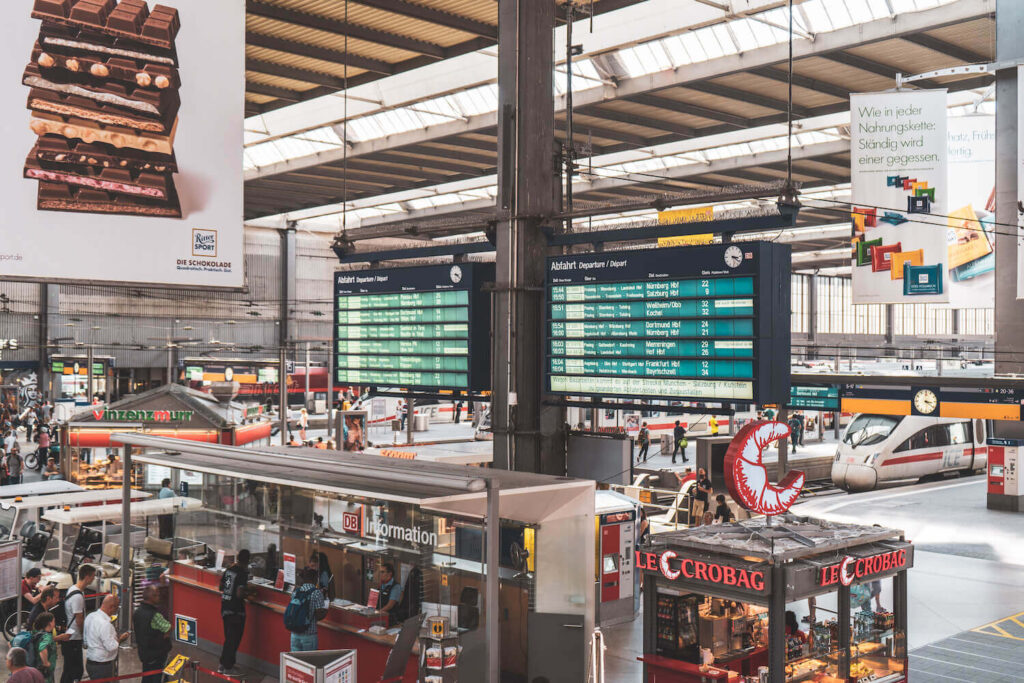
Use train station lockers
If you’re looking for a stress-free way to explore a city for the day, or if you need a place to dump your bags before check-in or after check-out, a convenient solution can often be found at your destination’s train station.
At larger train stations in Europe, there will usually be paid lockers or a ‘left luggage’ office for you to leave your bags for a small fee. Be sure to take advantage of these so you can explore without hauling all your lively possessions with you.
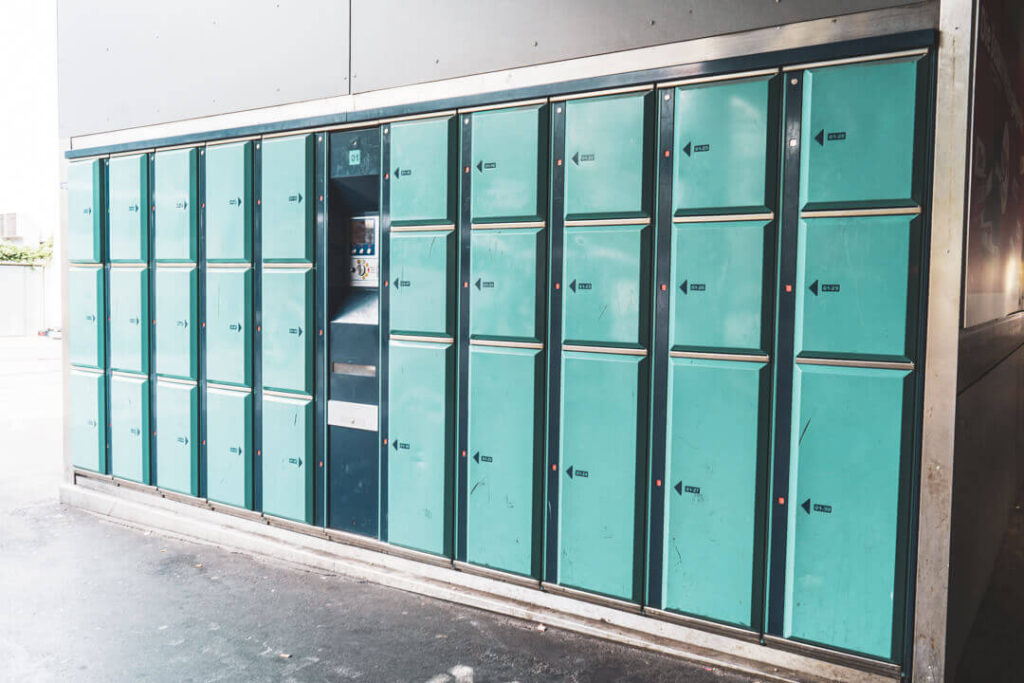
Order taxis or rides through apps whenever possible
Of course, this isn’t possible everywhere, but taxi scams are so widespread in certain European countries that you should definitely use an app when you’re able to.
The most popular ones in Europe include Uber, or FreeNow which is like Uber except you’re ordering an official licensed taxi.
Ordering through an app helps ensure you get a fair rate, and is also (in most cases) more convenient than waiting at a taxi stand or trying to wave one down in the street.
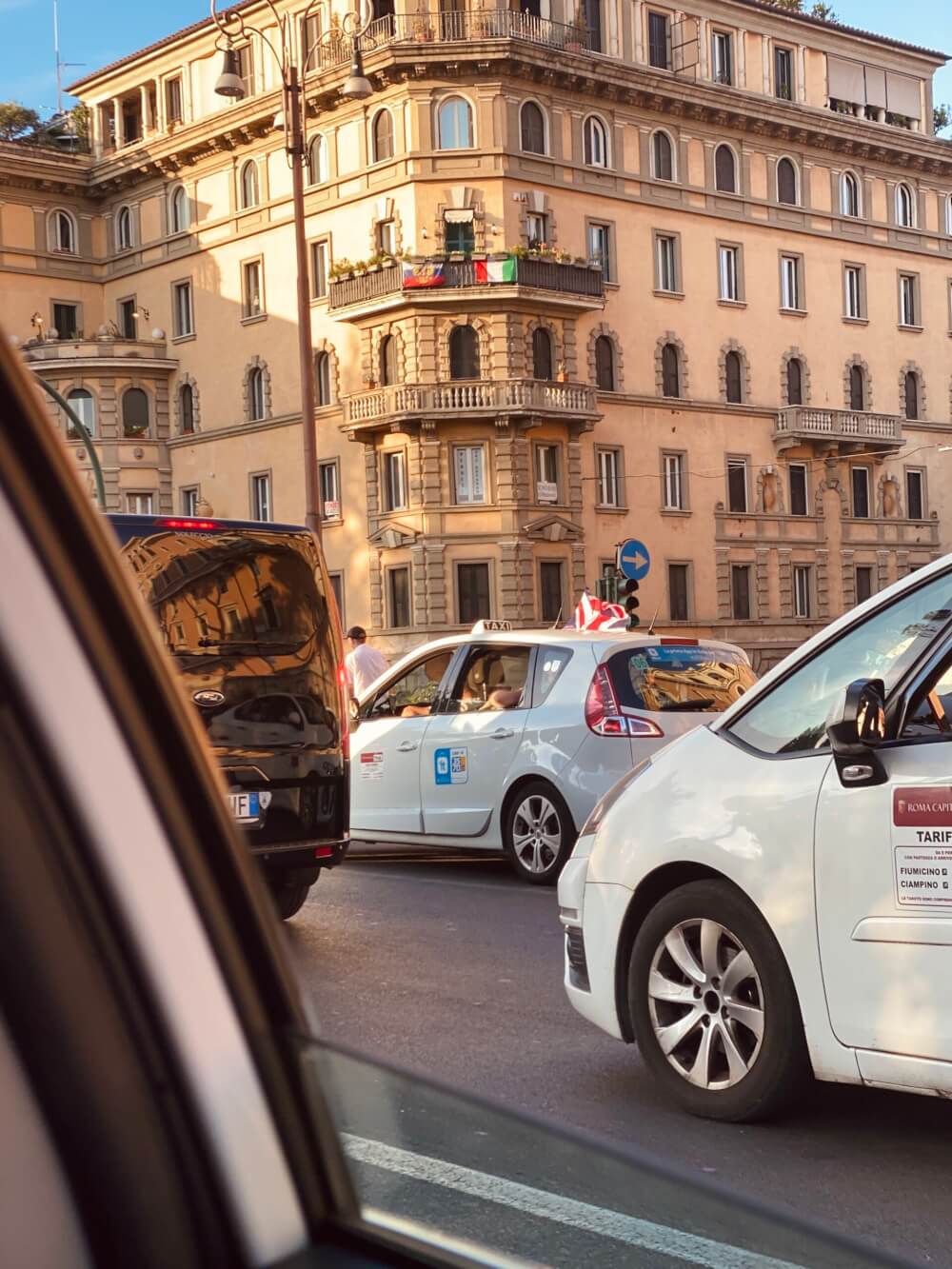
Always look for deals with public transport
If you’re relying on public transportation to get around during your trip (which I highly recommend), then doing a bit of research on ticket types and discounts can really save you a lot of money.
Most major European cities offer some kind of discount for day tickets, group tickets, or multiple trip bundles, so be sure to look into those rather than buying single tickets every time.
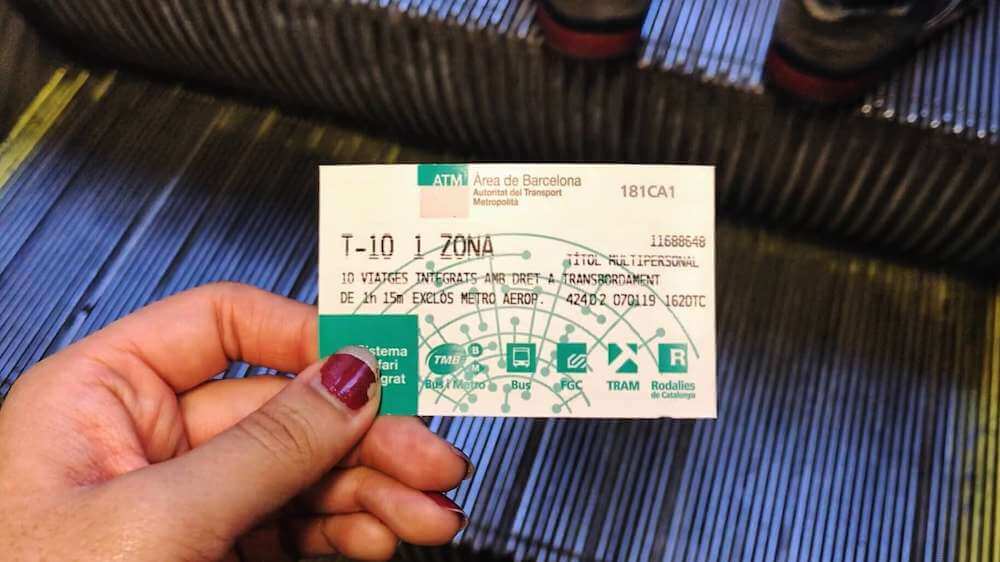
Always validate and hold onto your ticket
When it comes to navigating public transportation in Europe, most times it’s not enough to simply buy a ticket – you must usually a) validate it properly and b) keep it on you in case of inspection.
Who’s checking you ask? Well, most major European cities have random ticket controllers who periodically go around to make sure you’ve paid for and validated your fare correctly.
Sometimes (like in Paris) they’ll even ask to see your ticket after you’ve left the train platform, so be sure to hold onto your ticket until you’ve left the station.
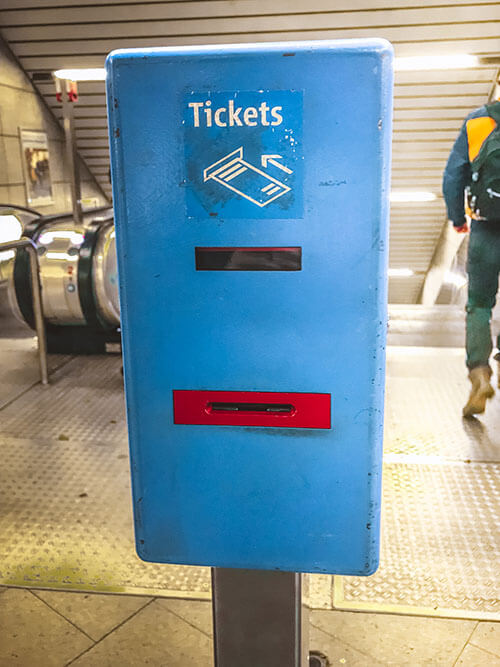
Avoid public transport during rush hour… and during big events like sports games
When you’re a care-free tourist, it can be easy to forget the woes of mundane daily life like trying to get home during rush hour. Well, don’t forget: no matter where you go, they have a rush hour too, so be sure to avoid it whenever possible.
Ideally, you should aim to avoid public transport during times that locals are commuting to/from work. Pay special attention as well to big events like huge concerts or sport games, which can also make public transport a nightmare.

Easily rent bikes or scooters
Most major European cities now have e-bikes and e-scooters that you can easily rent on-the-go through an app. This can be a fun way to quickly and cheaply get around the city.
Options will depend on your destination, but keep an eye out upon arrival! If they are available, odds are you will see them everywhere.

Europe Tips for Attractions
Odds are, if you’re visiting Europe, your plans involve a lot of sightseeing. So, here are some of my best Europe travel tips related to attractions and itinerary planning.
Prepare yourself for scaffolding and restorations
Europe is an amazing destination thanks to its history.
… But the flip side of that is that it is old and so are many of its most famous monuments.
So, mentally prepare yourself for the possibility that the amazing church or landmark you’ve seen a million times on social media is covered in scaffolding, or doesn’t look as you hoped due to restorations.
For example, the first time I went to Rome, I was devastated to see the Trevi Fountain completely covered with scaffolding, and drained of water.
And most travelers have similar stories. There’s no way around it, but just keep in mind that it’s possible!
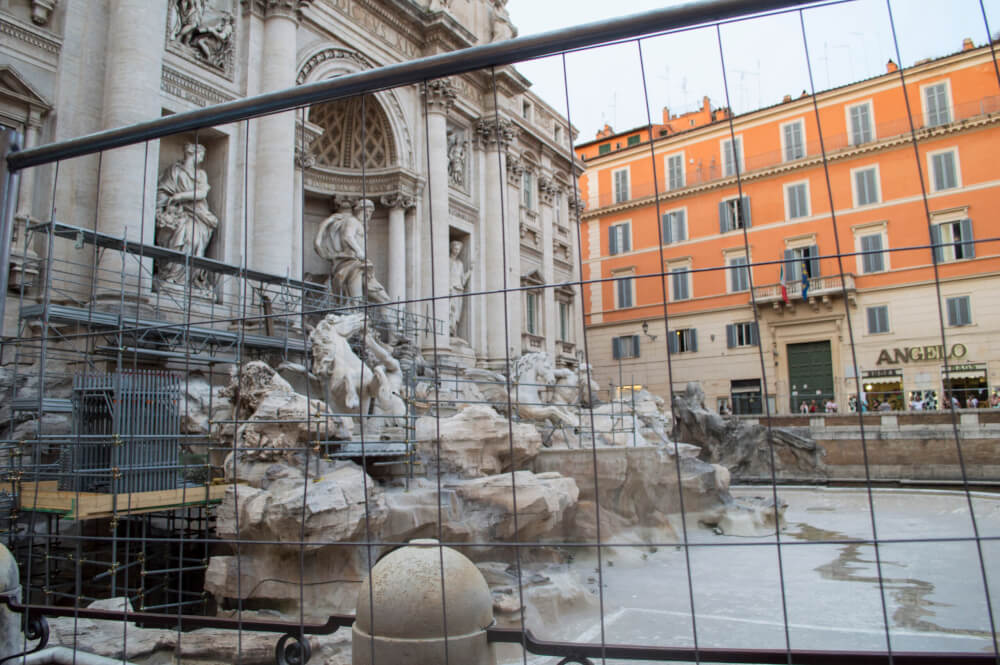
Look into age-based discounts
Oftentimes, whether you’re looking at train tickets or attraction tickets, there will be enticing discounts available based on your age, so be sure to look into those for additional savings, especially if you’re considered a child, youth (often this goes up to age 27!) or senior.

Get an ISIC Card if you’re a student
Here’s a very important Europe travel tip for students: if you are a student, the good news is you’re eligible for a wealth of additional discounts and offers.
The bad news is, often European institutions won’t recognize or accept student IDs from abroad, since they’re all so different.
An easy way to get around this though is by getting an ISIC Card , which is an internationally recognized student ID that costs about twenty dollars, but will save you at least that much in discounts.
I’d recommend getting one if you plan to travel around Europe for a longer time.

On a budget? Prioritize free museums and sights
This is one of my top Europe backpacking tips – do not sleep on the many free things to see and do in Europe.
Everywhere you go in Europe, there will be free things to do and see, ranging from free museums to beautiful architecture and street art.
So, be sure to research beforehand and see what free things there are to do at your destination.
NOTE: A lot of museums across Europe offer free admission on particular days of the month. Take advantage of these offers!

Book tickets for attractions in advance whenever possible
This is usually cheaper, and can save you a lot of time on the day of your visit because at major attractions, there’s usually a separate line for people who already have tickets.

Skip the line tickets are usually worth it
If you’re visiting a busy destination, then I’d highly recommend looking into Skip the Line tickets for major attractions, which will allow you to get in quicker.
Remember, during your trip, time is money, so paying a bit extra to skip the line is definitely a good use of funds.

Visit attractions shortly before closing time
While most guides advise that you visit the main sights early, another sneaky hack that works quite well is visiting right before it closes.
I did this once with the Vatican Museums, entering about 1.5 hours before closing time and it I practically had the place all to myself!
In contrast, one time I did an early morning tour of the Vatican and it was already quite busy because other tour groups were starting at the same time.

Book special tours that are before or after public opening hours
Many busier destinations will offer this now, and it’s a magical way to experience the top sights with a fraction of the crowds.
I once did a sunrise tour around Venice and it was incredible to see all the main sights and feel like I had them mainly to myself.

Seek out fun and unique tours in general
Gone are the days that destinations offer just your old standard tours that cover everything generally.
These days, in most major European destinations, there are special tours you can book based on interest, with tours focusing on everything from history and food to street art and photography.
I usually like to have a quick search on GetYourGuide to see what’s available.

For touristy cities, research on local blogs
In big cities like Paris or London, sure there’s a lot of tourists, but there are even more locals, who live there and call it home.
This means there’s a whole other side to the city that many tourists miss out on, from cool pop-ups and restaurants to special cultural events. I always try to look up fun events/updates on local blogs before every trip, and have gotten some really fun travel memories out of it.
You might find my guide on How to Find Cool Stuff to Do Near You helpful.

Seek alternate viewpoints to main landmarks
If you ever find yourself in a place wanting to get THE photo of a major landmark (e.g. the Eiffel Tower in Paris, the Coliseum in Rome, etc.) then a great way to get an amazing photo away from the crowds is by seeking out alternative angles and perspectives.
Remember, landmarks are big, so odds are you can find some cool places to get your photos without having to cram with everyone else. Simply walk a few blocks away and try to find unique views!

Always search for information on the official websites of attractions (even in the local language)
These days, hours/entry requirements can change quickly and third party guides (yes, even Google Maps!) may be inaccurate.
So, if you’re trying to find information on how to book tickets or what opening times are, make sure you always go straight to the source rather than other sites or blogs (even mine!)
For example, on my most recent visit to Rome, the Pantheon had changed its policy to be open only for reserved time slots on weekends, which would have been really unlucky because I saw no information about this anywhere else.

Don’t spread yourself too thin
An ideal itinerary should have a mix of sights, experiences & relaxing. Don’t burn out by forcing yourself to see everything. I personally always ensure that there’s a relaxing or chill activity on each day, whether that be a picnic or just a relaxed coffee/cake afternoon.

If you’re not interested, don’t force yourself just because it’s a must do
I think too often, first-time visitors in Europe get caught in this trap of needing to see all THE most famous things, but remember: at the end of the day, this is your vacation, so don’t force yourself to see something just because a random person on the Internet told you to.
I personally love museums but they’re not for everyone, so just remember it’s your vacation and there’s no need to do something just because it’s famous.
… but psst – if you ARE into museums, don’t wait until your trip to go! There are tons of really cool virtual museums you can check out when you’re bored. Pro tip from one hopeless nerd to another.

Safety Tips for Europe (And How to Not Get Scammed!)
Is Europe dangerous to travel? This is one of the most common questions that first-time visitors ask. Honestly, so long as you keep the following Europe safety tips in mind, you will be fine.
Be wary of petty theft and scams when you visit Europe
Certainly in more touristy cities like Paris and Barcelona, opportunistic crime is abundant.
You can learn the most common pickpocket techniques and how to avoid them in my post about how to avoid pickpockets in Europe , but overall, the key is to always be vigilant and keep an eye on your belongings.
Pickpockets thrive on distraction, and tend to operate in high-traffic areas that have a lot of people/tourists (e.g. train stations), so be especially careful to not let anyone get too close.

Look into theft-proof bags and accessories
There are a lot of amazing theft-proof travel accessories out there these days. The bad news is they’re not always the cheapest.
If you’re willing to splurge a bit on something high-quality and designed to thwart pickpockets, here are some options:
- PacSafe’s products are all made to be theft-proof, including their signature backpack here and day bag here
- Secret passport scarves like these are a great way to stash THE most important things in a subtle and discreet way
Research the pickpocket hot zones for your destination
Most major cities have certain areas that are particularly well-known as pickpocket destinations.
In Rome for example, there’s Termini Train Station where I got pickpocketed, and Bus 64 AKA the Pickpocket Express.
Knowing where pickpockets tend to operate can help provide some ease of mind, and help you figure out when to be on guard.

Keep valuables out of sight
Leaving your phone on a terrace table, or your purse hanging on your chair are both easy ways to get your valuables stolen!
Sure, it’s easy to let your guard down when you’re trying to relax, but remember that keeping your valuables out like that can be an easy way for them to get snatched.
Whenever I’m dining anywhere, I always keep my bag between my feet so they’re hard to access, and make sure to not leave my phone out on the table (on my lap, under a big napkin is often a safer bet!)

Don’t take “free stuff”
A very common scam in touristy European places is people will offer you something for free “as a gift”, but then demand you (or one of your travel buddies) pay for it.
Some examples include…
- Friendship bracelets
Generally, they will set up shop in busy, touristy areas, so remember to be especially cautious in these areas.

Don’t sign any petitions
Another common scam is the petition scam, usually run by groups of young women.
They’ll come ask you to sign a petition (often first breaking the ice by asking if you speak English) and then either demand a donation from you, or distract you as someone else picks your pockets.
… So if someone asks you to sign a petition, just ignore and walk away. Better safe than sorry!
Rudeness is the way to get rid of scammers
On that note, if you find yourself in a situation where you are being followed or confronted by one of the aforementioned scammers, the best thing to do is ignore them and walk away.
They can be very persistent, but will give up eventually when you ignore them.
Limit the amount of cash you bring out with you
I always say to plan for ‘worst case scenario’, so another one of my top Europe safety tips is to not bring around more cash than you’d stand to lose.
Once upon a time, my friend was carrying around hundreds of euros in her bag (at the start of her trip) and was pickpocketed in Nice on her very first day! Pickpockets work quickly and unexpectedly, so don’t bring out more than you’d be okay losing.

Store your cards separately
On a similar note, make sure to not carry all your cards in one wallet, so that (in case you are pickpocketed), you have a back-up.
I would recommend keeping one card in your suitcase, or in a separate bag.

Don’t make yourself appear to be a good target for robbery
Sometimes when I’m travelling I’ll see people doing photoshoots posing with their designer shopping bags, completely oblivious to the fact that they’re making themselves targets.
Worse, sometimes they just leave the bags on a bench or on the stairs while they’re occupied on their phone.
If I were to write a “how to get robbed in Europe” article, these are the types of behaviours that would make the list, so make sure you’re not making yourself a clear target, and don’t wear unnecessarily flashy outfits or accessories which might catch a thief’s eye.

Keep your phone out of reach
Phone snatchings are becoming a really common crime, especially in big cities like London, so avoid having your phone haphazardly out, or at least be sure to pay more attention when you do, especially…
- If you’re standing close to doors on public transport
- If you’re walking along a bike lane or road

Be careful of bike lanes
Speaking of bike lanes, here’s another important (physical) Europe safety tip: be mindful of them.
If you’re like me and come from somewhere that they’re not overly common, it’s way too easy to accidentally walk onto them and potentially get yourself run over (or more likely, make yourself an annoyance to a cyclist just trying to get home).
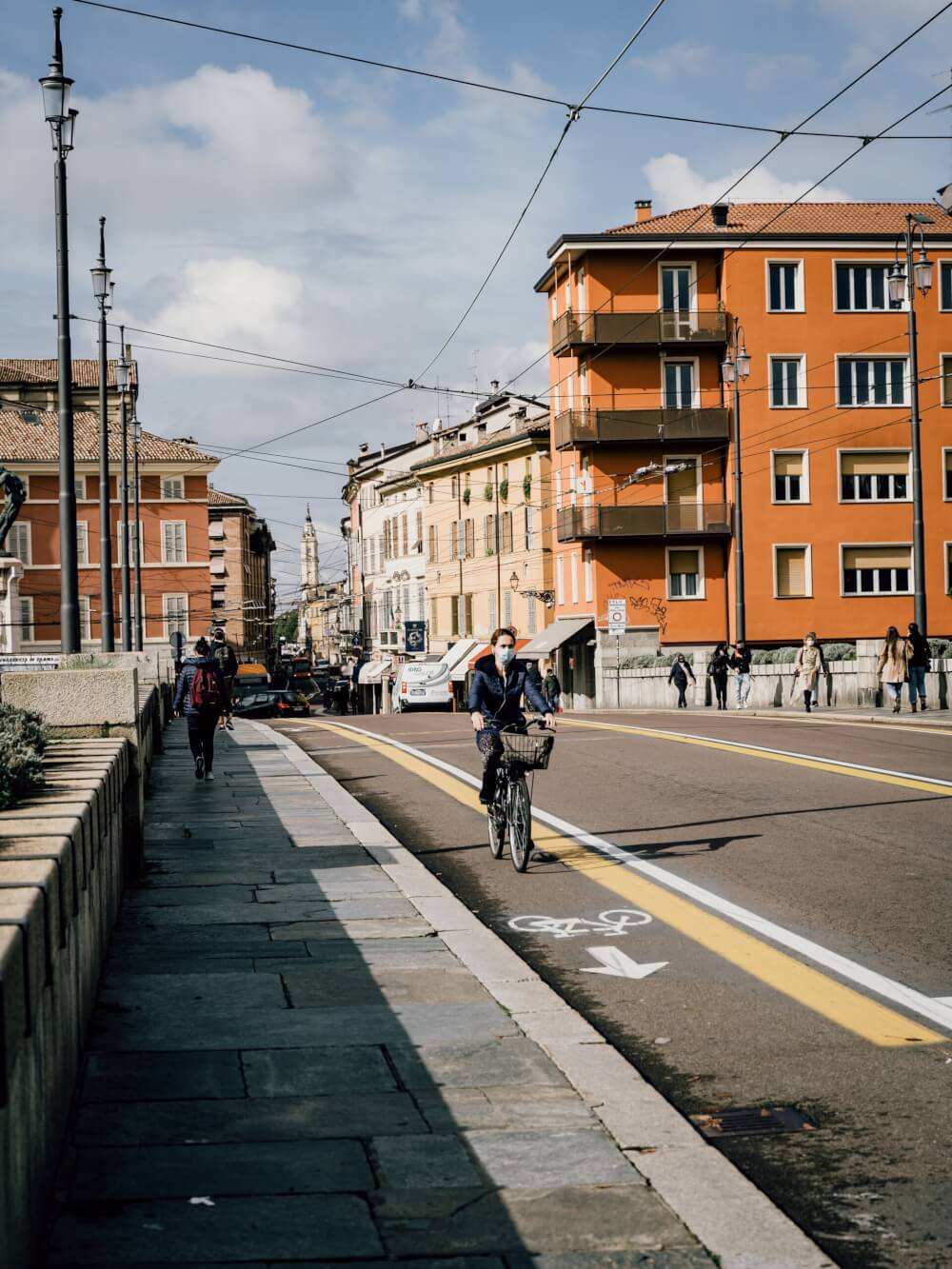
Beware of strangers asking you to go for drinks randomly
This is a scam that’s more prevalent in famous party cities, but if a random person (usually an unreasonably attractive woman) comes up to you off the street and asks you to grab a drink, odds are rather good that they’re not just a friendly local looking to grab drinks with a stranger.
This is a common scam where people (again, usually beautiful women, but not always) will bring targeted tourists into bars they’re working with to get a few drinks, only for these tourists to get charged extortionate rates for these drinks, because you never question how much stuff costs when you’re trying to flirt.
Extreme stories even say that bar staff will block the door until the tourists pay up.
Moral of the story: if it seems too good to be true, it probably is.

And beware of children
A general rule of thumb is this: if a kid is confidently coming up to you and/or getting close unannounced, keep your valuables close and watch your pockets. This is often a distraction tactic used by pickpockets, and sadly some kids are also trained to steal from a young age too.
I almost lost my wallet in Bratislava this way, when a woman asked me to take her photo and her kid started running around me as a distraction.
I realized pretty quickly what was happening and caught my pickpocket literally with her hand in my purse. Luckily, I was able to swat her hand away just in time.
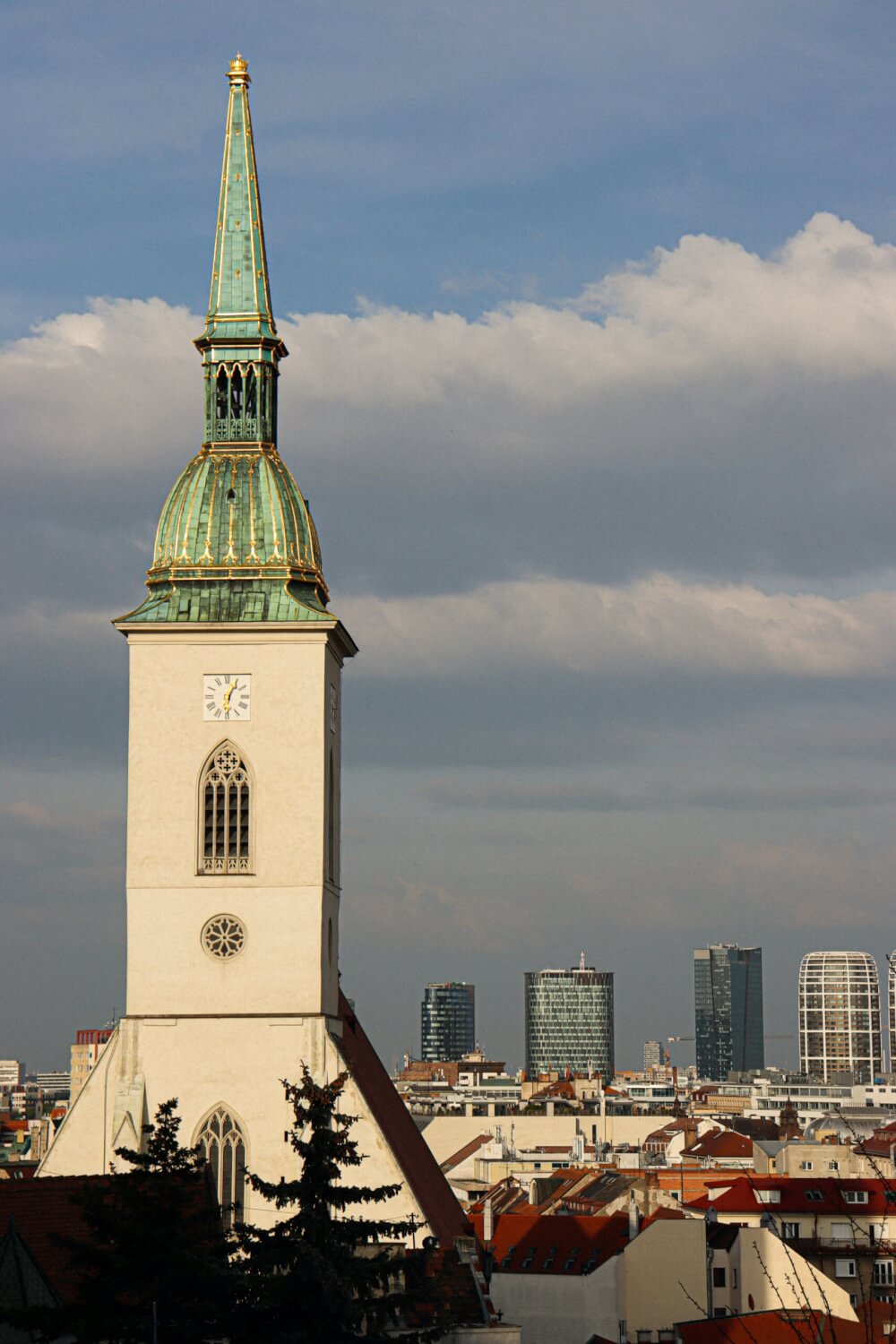
Buy some small locks to put around your zippers
Another great travel hack I’ve picked up over the years is simply buying a set of small cable locks like these and keeping one in each bag.
That way, you can quickly lock your zippers together in crowded situations and prevent anyone from randomly opening your bag.
Simple, but effective.
Look up common taxi rates and scams before arriving
While I’m a firm believer that public transport is the way to go, sometimes you might need to take a taxi, whether it’s because you’re arriving late, running late, or just want to splurge a little.
While this varies depending on the country, taxis are often prime scam zones! I’ve personally been scammed by taxis in Prague and also in Sofia.
Particularly if you are leaving from busy areas like airports or train stations, some opportunistic drivers will take advantage. This is how I got charged 4x the usual fare in Sofia, mainly because I didn’t know better.
So, if you plan on taking a taxi, make sure you search up how much that route should generally cost, and also familiarize yourself with common scams.
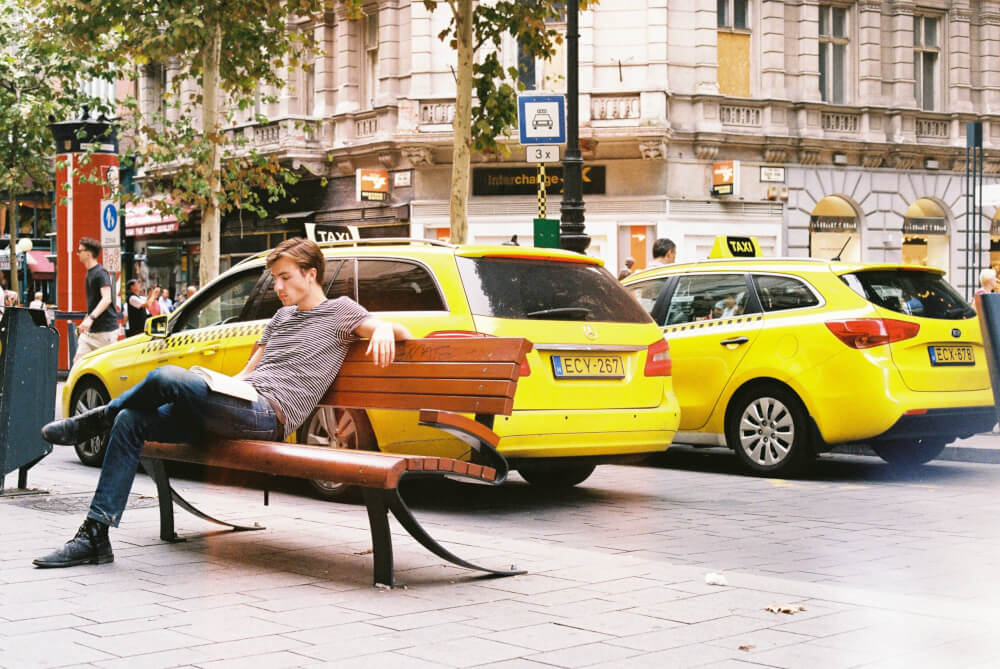
Know the emergency numbers
In North America, 911 is the go-to when you have any kind of emergency, but the numbers are different in Europe.
Within the EU (and a handful of other countries), the general emergency number is 112, and most countries will have other numbers for more specific emergency services as well.
So, be sure to take note of what these are before your trip, although I’ve heard anecdotally that 911 should reroute to emergency services as well.
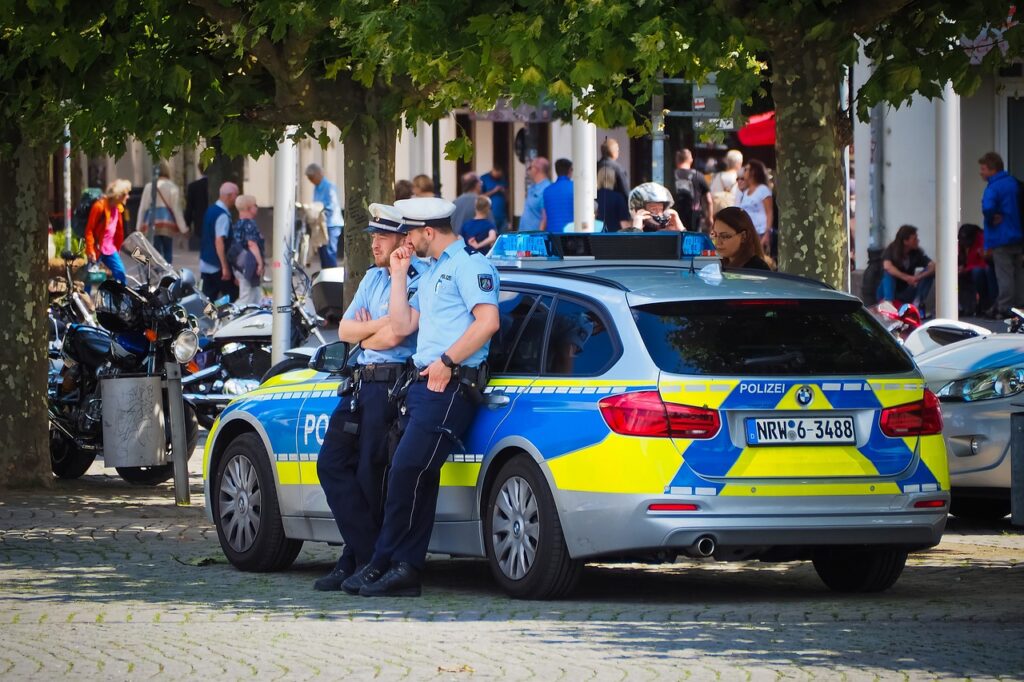
Avoid sketchy EuroNet ATMs
If you’re going to an ATM, try your best to find one that’s connected to an actual bank.
There are a lot of ATMs (especially around tourist areas) that charge huge fees, or make currency conversion more confusing than it needs to be so you can get charged more.
As a general rule, don’t use any of those Euronet ATMs – they’re the worst!
Have a plan in case of a worst case scenario
This isn’t just a good Europe travel tip, but a good tip for travelling anywhere – make a plan for the worst case scenario.
Imagine your bags get stolen with your passports and all your cash/cards – what would be your backup plan? What would you do if you lost your phone?
Having a plan in place can minimize stress in the event that anything does happen, and having that peace of mind is very important for any vacation!

Get a good VPN
If you plan to be travelling longer-term, getting a reliable VPN is a must.
In short, VPNs (or Virtual Private Networks) mask your IP address and encrypt your data so that you can protect your identity online, browse anonymously, and even change the geographical location you’re browsing from.
This can be helpful in a lot of backpacking situations. In the past, I’ve used a VPN to…
- Access streaming for my favourite TV shows that weren’t available in the country I was travelling in
- Visit sites that were blocked in the country I was travelling in
- Access important sites (e.g. banking portals) that flagged my visit as suspicious because I was in a new country
- Securely browse the Internet with public WiFi knowing my data/identity was protected
As a real cheapskate (especially in my earlier travel days), I’ve tried every free VPN under the sun, and always found them to be unreliable or buggy.
After doing lots of research, I decided to splurge on Private Internet Access , which I’ve been using for the past few years, and I’ve been loving it. It’s super easy to use, very reliable, and actually (when you break it down) not expensive it all.
Subscribe via this link and you can get it for under 3 bucks a month.

Food & Drink Tips for Europe
When in Europe, eating and drinking well is a must! Here are some of my best tips for making the most of Europe’s varied food culture.
Visit grocery stores to save big
Not only is visiting supermarkets abroad just a fun cultural activity in general, you can save a great deal of money by buying snacks/drinks there vs. from vendors as you’re out and about.
If you have cooking facilities at your accommodation, making some of your own meals can also be a huge money-saver, even if you’re just swapping out a sit-down lunch for a picnic one.

Beware that you might need to weigh your own produce
Of course, visiting supermarkets abroad can come with its own healthy dose of culture shocks, one of the main ones being that most countries have their own different method of handling produce.
Should you weigh it? Print a sticker? Just bring it as-is?
The answer will depend, so observe what others are doing before you get caught awkwardly at the cashier with a woman shouting at you in Bulgarian because you didn’t weigh your tomatoes (true story).

Have a quick search of regional specialties before you go
European cuisine is SO diverse, and even within one country, you’ll have all kinds of different regional dishes to try, so I’d recommend doing some research beforehand about the top must-tries, so you can keep an eye out for them.
For example, you might think you know what Italian food is but when you go to actual Italy, you’ll realize that every region has their own special dishes, so be sure to look into what those are before just getting pizza everywhere.

Dine far away from tourist attractions
A general rule of thumb is that any restaurants right next to major tourist attractions are probably gonna have a poor price to quality ratio, since they cater more to tourists who are flush with cash and unlikely to return.
My tip? Just walk a few blocks over before starting your food hunt, or d some research beforehand to find well-rated restaurants near you.
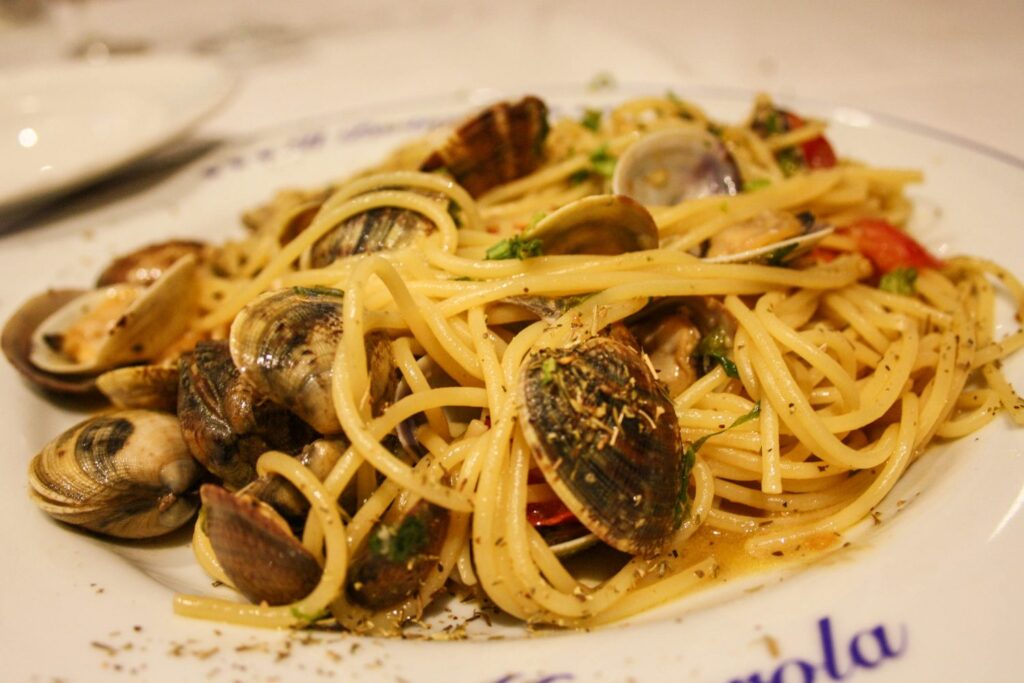
Learn how to spot a tourist trap restaurant
Tourist trappy restaurants are a dime a dozen in Europe’s more popular destinations, so make sure you work on your tourist trap radar.
A few red flags include…
- Big pictures
- The menu being translated into a million languages
- The words “TOURIST MENU” over it
- A really persistent person out front beckoning you to come inside
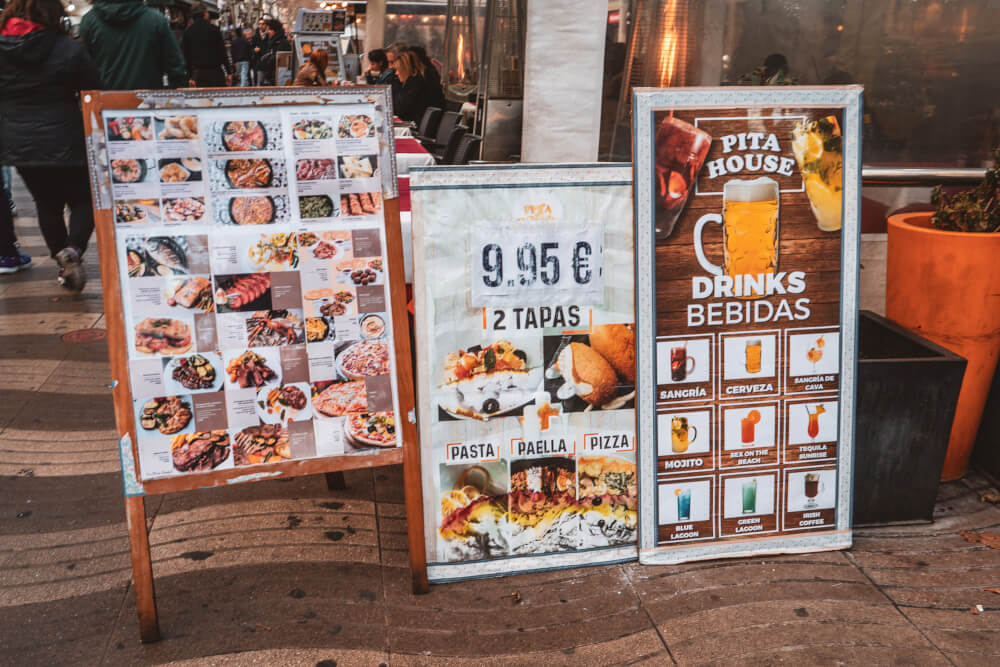
Double check that places have prices on display before ordering
This may be the oldest scam in Europe’s “let’s extort tourists” playbook, but any restaurant with fair pricing will be transparent with their pricing.
If you come across a restaurant that doesn’t list prices upfront, then run for the hills.
Never assume “it can’t be that bad” because odds are they’ve omitted their prices for a reason and plan to charge you an extortionate amount, like this place which went viral for a 500 euro lunch bill.

A quick check of reviews is a must
While I don’t believe reviews are accurate 100% of the time, I do think they’re very helpful for establishing patterns, especially when there’s a bunch of reviews all saying the same thing.
A quick search of the restaurant (even on Google Maps Reviews) can help prevent you from getting scammed or being subject to mediocre food/service.
Lunch specials are usually cheaper
If you’re gonna splurge and treat yourself, lunch might be the time to do it. Many places will offer special deals for lunch, so keep an eye out for those!

Usually the bill won’t come until you ask for it
Generally speaking, the ultra-friendly and proactive customer service you get in North America doesn’t really exist in European countries.
Very rarely will you have servers come up to constantly check on you and ask how you’re doing, so if you’re wondering why nobody has brought the bill around, just get their attention because they don’t tend to drop it off until you ask (doing so without asking is actually considered a bit rude in itself).
Don’t shy away from food tours
If you’re running on limited stomach space but want to try as many local specialties as possible, then food tours are a really fun and delicious option.
Most big destinations in Europe have them these days, and they’re a great way to sample a lot of local foods while also getting a local guide’s perspective and expertise.
Context is key and learning about food (while eating it!) is the best.
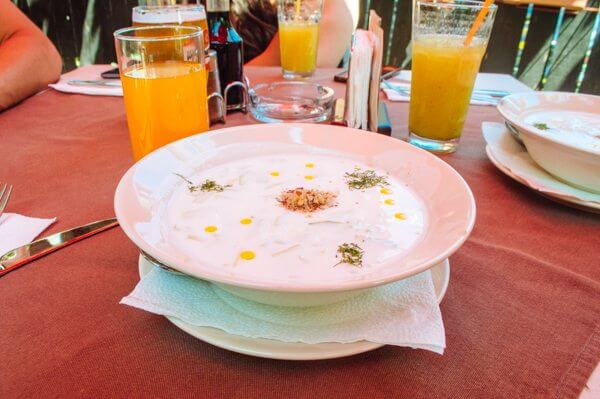
Take a cooking class
Another foodie activity that’s now offered in most European destinations these days is cooking classes.
There’s no better souvenir than learning how to prep your favourite foods once you get home, so definitely consider adding one to your itinerary.

Get used to sparkling water
Sparkling water is a lot more common in certain European countries than in North America, to the point where sometimes it’s the default if you ask for water.
If you’re not a fan of spicy H20, then make sure to specify Still when you order water.
Don’t pay extra for hotel breakfast
Don’t get me wrong, I love a good hotel breakfast when it’s included in the room rate, but if you’re given a choice, you can save a lot of money by going out to get breakfast at a bakery, which is also more fun in my opinion.

When weather permits, picnics are a much better option
I love picnics. They’re such a romantic and affordable way to enjoy a meal, especially when you have a great backdrop.
Make sure you picnic at least once during your trip – I promise you’ll love it! And your wallet will too.

Generally speaking, Europeans eat later than North Americans
After living in Germany for a few years, making dinner plans with friends at home almost put me in a coma. Dinner at 5:30 or 6pm? Wayyyy earlier than most European countries, especially Spain where dinner time is often after 9pm.
Of course, you can take advantage of this cultural difference by getting a table at popular restaurants simply through booking as soon as they open.

Be openminded with trying new foods
I hated beer until I had it in Belgium. I hated cheese until I tried smoked cheese in the Netherlands.
I don’t know how to explain it, but certain food and drink items just taste different, and frankly, better in Europe than they do in North America.
So before you write something off as a food you don’t like, give it a try. You might be pleasantly surprised, especially if it’s the regional specialty.
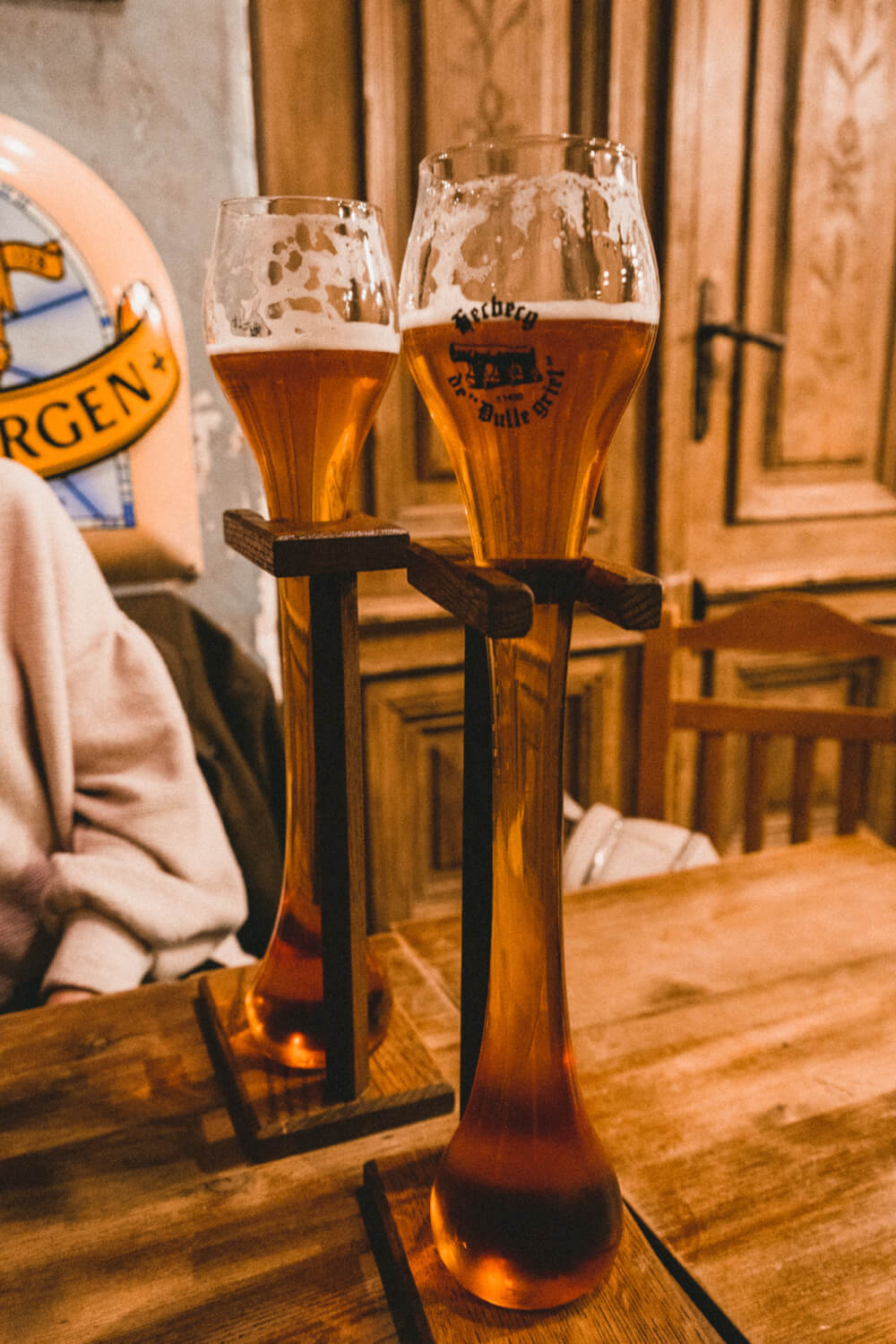
Get takeout for super cheap with Too Good to Go
One of my favourite (little-known) Europe travel apps is called Too Good to Go.
They service many major European cities, and basically, it’s a free app that restaurants use to sell their leftover food at the end of the day (sometimes at lunch too).
This helps minimize food waste, and means you can pick up an entire take out meal for less than 5 euros.
Sure, you don’t get to choose what you get, but it’s an excellent way to eat cheap and help reduce waste at the same time.
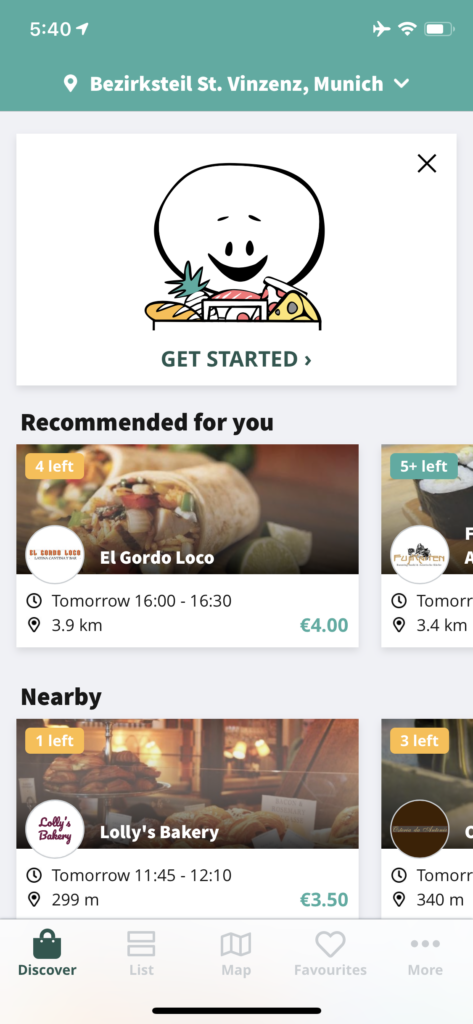
Culture & Etiquette Tips for Europe
Tourists can often have a reputation for being rude… but not you! Not on my watch. Here are some culture and etiquette tips to keep in mind for your trip to Europe.
Culturally, Europe is a million different entities
One of my biggest pet peeves when it comes to Europe travel advice is when books or sites tell you “In Europe, tipping is like…”, “In Europe, locals are…”
… Which I know is kind of ironic in an article simply called “Europe Travel Tips” but shhh just go with it.
Long story short: Europe is composed of dozens of countries, each with their unique cultural nuances and norms, so be sure to research culture tips specifically for where you’re going, because things like tipping, queuing, meal times, etc. can vary considerably across the continent.

Learn at least hello and thank you
While visitors can often survive just fine without learning the local language, i’s generally good manners to know basics such as hello and thank you for every country you visit.
… So be sure to practice that a bit before you go!
Do not tip by North American standards
As I previously mentioned, tipping in Europe does vary from country to country, but never would a 20% tip be considered the bare minimum like in North America sometimes.
So, be sure to research tipping culture in your destination before you go. In many countries, tipping involves simply rounding up.

Try to not speak too loud
In Europe, North Americans generally have a reputation for being… loud. Sometimes obnoxiously so.
So if you’re out in public, try to lower the volume of your voice to closer match what’s around you (easier said than done, I know, but something to be mindful of).
When in doubt, mimic the locals
Cultural norms can vary widely from place to place, so your best bet is to just observe the status quo and try to imitate that.
If nobody is chatting on the train, it’s probably a good sign that you shouldn’t either. If everybody is lining up in an orderly queue, maybe you should join that queue instead of barging in the front.
Remember, tourists can have a reputation for being disrespectful and annoying, so try your best to shatter that stereotype wherever you go.

Look into festivals and folk events to attend
One of the most amazing things about Europe as a continent is that it is so deeply rooted in heritage and tradition, with some cultural traditions dating back thousands of years.
For a truly unforgettable experience, I’d recommend looking up some fun festivals or events to enjoy.
Here are some of my favourites I’ve been to:
- September: Bad Dürkheim Wurstmarkt (the world’s largest wine festival)
- September/October: Oktoberfest in Munich (the world’s largest beer festival)
- February: Crazy Days at Cologne Carnival
- March – April: Starkbierfest in Munich (unique strong beer festival)
- March – May: Keukenhof (the world’s largest flower garden)

Packing Tips for Europe
Not sure what to wear and what to pack for Europe? Here are my top Europe packing tips.
Steal my pre-made packing lists
If you’re overwhelmed with what to pack, I’ve already made some packing lists that you can use as a starting point!
Download them, print them, mail them to all your friends and exes! I hope you get tons of use out of them:
- My Europe winter packing list
- My Europe summer packing list
- My versatile minimalist packing list
- My toiletries packing list

Don’t bring any suitcases you can’t carry
I’ve always been an advocate for packing light, but a good rule of thumb is to not bring any suitcases you aren’t physically capable of carrying yourself.
There’s a million and one scenarios where you might have to end up carrying your suitcase in Europe, like…
- Your hotel or accommodation unexpectedly has no elevator
- The elevator you were counting on at the train station is out of order
- You need to carry your bag up some ancient staircase to get to your accommodation
- You need to lift your suitcase on/off the train you’re taking
So yes, whatever bag or suitcase you bring, make sure you’re able to carry it yourself.

Good walking shoes are a must
I cannot explain to you how much walking you’ll end up doing, so comfortable shoes are much more important than cute stylish ones.
That said, if you’re able to find comfortable walking shoes that are a bit dressier, opt for those over beat up runners.
Generally speaking, casual wear in Europe is more dressed up than what we’re used to in North America, so packing a nice pair of white sneakers or comfy leather boots would definitely be a more versatile choice over hole-filled running shoes.

Buy AirTags to track your suitcases
With airlines losing baggage all the time these days, I’ve finally caved and bought an AirTag to track my checked bag.
And honestly? I regret nothing! I love the ease of mind it provides, and should a thief ever nab my bag one day, I feel very smug knowing I’ll be able to track them down.

Pack an emergency outfit in your carry-on
On a similar note, one Europe packing tip I live by is always having an emergency set of clothes in your carry-on bag.
Checked bags get lost all the time, so having extra clothes with you is key for ease of mind. I usually bring all the top essentials with me in my carry-on. Better safe than sorry!
Pack clothes with hidden inner pockets rather than a money belt
While many travel experts tout the the benefits of money belts, I’ve honestly never been able to get on board with them. They’re awkward, sweaty, and reaching under your clothes to get change for an ice cream is just… not my idea of fun.
Instead of a money belt, I always have either:
- A backpack with a zippered pocket in the back, which makes it inaccessible to anyone else when worn
- A crossbody purse with a pocket on the backside, again making it inaccessible to anyone so long as I hold it close to me
- A jacket with inner pockets so it’s impossible to reach in without getting super super close
These anti-theft methods are a LOT more comfortable to me than a money belt… so remember: a money belt isn’t the only way!
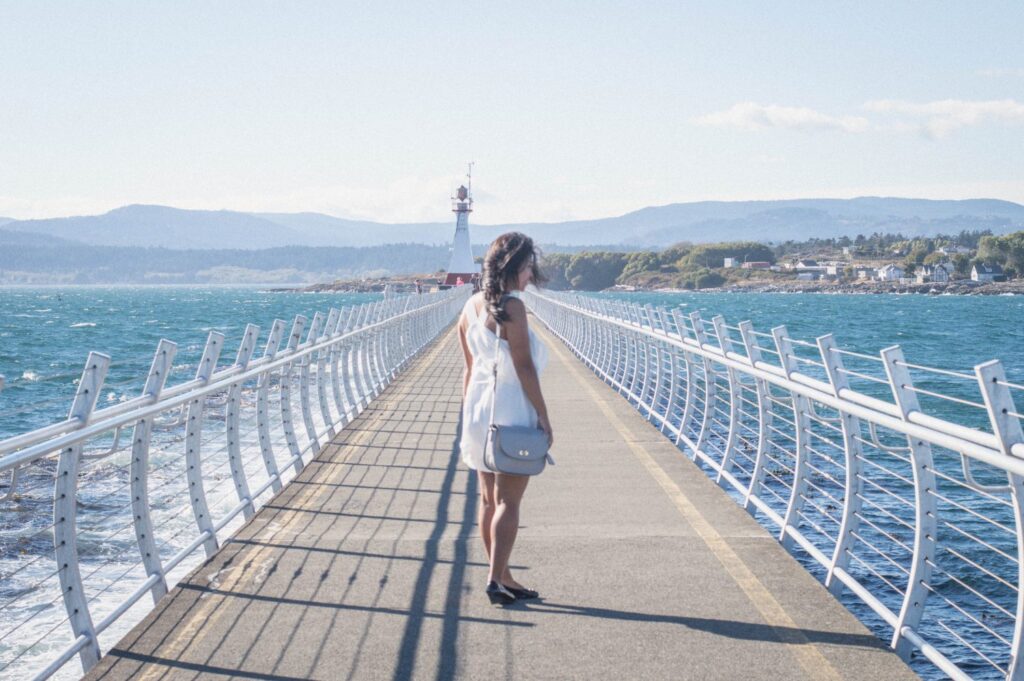
Bring a universal adapter
Power sockets in most European countries have two round holes and if you’re visiting from overseas, odds are you’ll need an adapter for your plugs to fit.
I’d strongly recommend buying a universal adapter like this one if you don’t have one already. Not only is it good for the standard round hole outlets, but it can also work for the three prong plugs in the UK, Malta, and Cyprus.
It’s cheap, can be re-used for every trip, and covers you in all situations. Definitely some of the best money I’ve ever spent!
Use packing cubes to organize and compress your clothes
I am such a packing cubes fangirl.
These beauties are a magical way to keep all your goods organized, while saving space in your bag as well. Gone are the days that you rummage through your entire pack for a particular t-shirt!
Not all packing cubes have to be expensive either. There’s plenty of affordable options on Amazon, like this blue set from Amazon Basics , but you definitely get what you pay for.
PS: I’m a total packing cube nerd and once bought a bunch of different brands to compare. See my full packing cube showdown for more.

Pack a re-usable bag for purchases
Single use bags are slowly getting phased out in Europe, so I find it’s always a good idea to bring an extra bag or two whenever I travel, whether to stash my souvenir haul for the day or to carry around snacks.
So, when in doubt, pack a tote or two! They can be such lifesavers.
DIY your own travel sized toiletries
This is a very basic packing tip I always recommend, but rather than buy the bottles of toiletries which give you like, three good squeezes of shampoo, I find it’s easier (and more eco-friendly) these days to buy small reusable bottles that you can fill with your own toiletries of choice.
This allows you to bring your favourite products with you, and saves needless one-use toiletries from ending up in the landfill.
Need help picking the right one? Read my guide to reusable toiletry bottles for more info.

Final Europe Travel Tips to Know Before You Go
Alright, before I let you get back to… your real life, friends, and family, here are some final random Europe travel tips to keep in mind.
Having cash is important
With the exception of Northern Europe and some parts of the UK, cash is still important to carry around, whether for small purchases or for essentials like using the washroom. Keeping coins is also a good idea.
So, don’t forget that cash is still king in many parts of Europe!

Claim VAT refunds at the airport
Taxes are generally built into the price in Europe, so many travellers don’t realize they are paying up to to 20% in VAT (Value Added Tax) for everything they purchase.
The good news is, when it comes to goods that you are buying and taking home (e.g. clothes, gifts, etc.), non-residents of Europe are eligible for a refund on this VAT that you pay.
VAT refund rules vary from country to country, but usually there’s a minimum spend amount in one single location (around 175 EUR in most cases).
So, keep this in mind and you can get a good chunk of change back. To get the step by step process, Google your destination + VAT refund, as the process does differ country to country.
Floors start at zero so don’t get confused
If you’ve seen Emily in Paris you’ll already know this one.
The floor system in European buildings tends to differ from North America.
Whereas in North America, the ground floor is often the 1st floor, the ground floor is considered its own separate entity in most countries (i.e. Floor 0) and then the next one above that would be the 1st floor.

Prepare for beds to be different
Bed sizes in Europe tend to be smaller, and doubles can often just be two single beds pushed together (so romantic, I know).
Depending on where you go, the pillows and comforters can be different as well, like in Germany where they’ve randomly decided that the optimal shape for a pillow is square. *shudder*
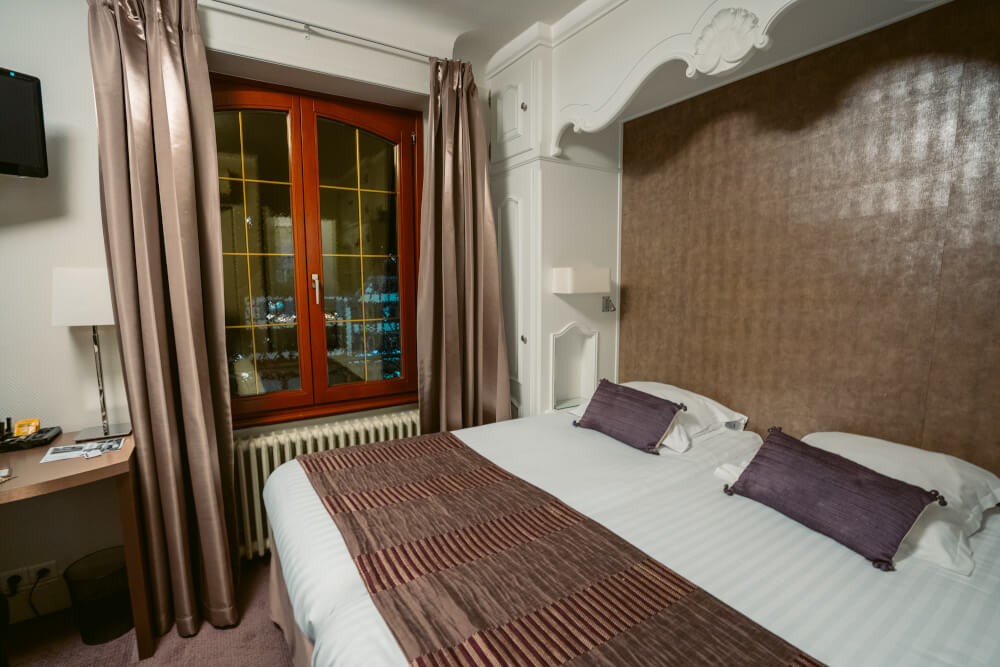
Beware of words you know that may mean a different thing in other languages
For example, a menu for North Americans is a list of dishes you can order, but a menu in France means a set meal or combo.
Similarly, entrées in North America are the main course, when in France, it means appetizer.
Use Google Maps to save spots you want to see
Google Maps is an amazing resource not just for navigating a new city, but also for saving spots you might want to visit in the future.
One of my favourite travel hacks is starring every location I deem interesting on Google Maps. You can do this by pressing the Save button when you search up that spot.
This allows you to have a visual map of all the cool cafes, street art murals, attractions, restaurants, etc. that you’ve saved during your research, which means you can easily organize your itinerary/sightseeing.
I love doing this because I’ll often end up in new areas during my explorations, and I can just look at my map to see if anything interesting I read about happens to be nearby. Saves a lot of planning!
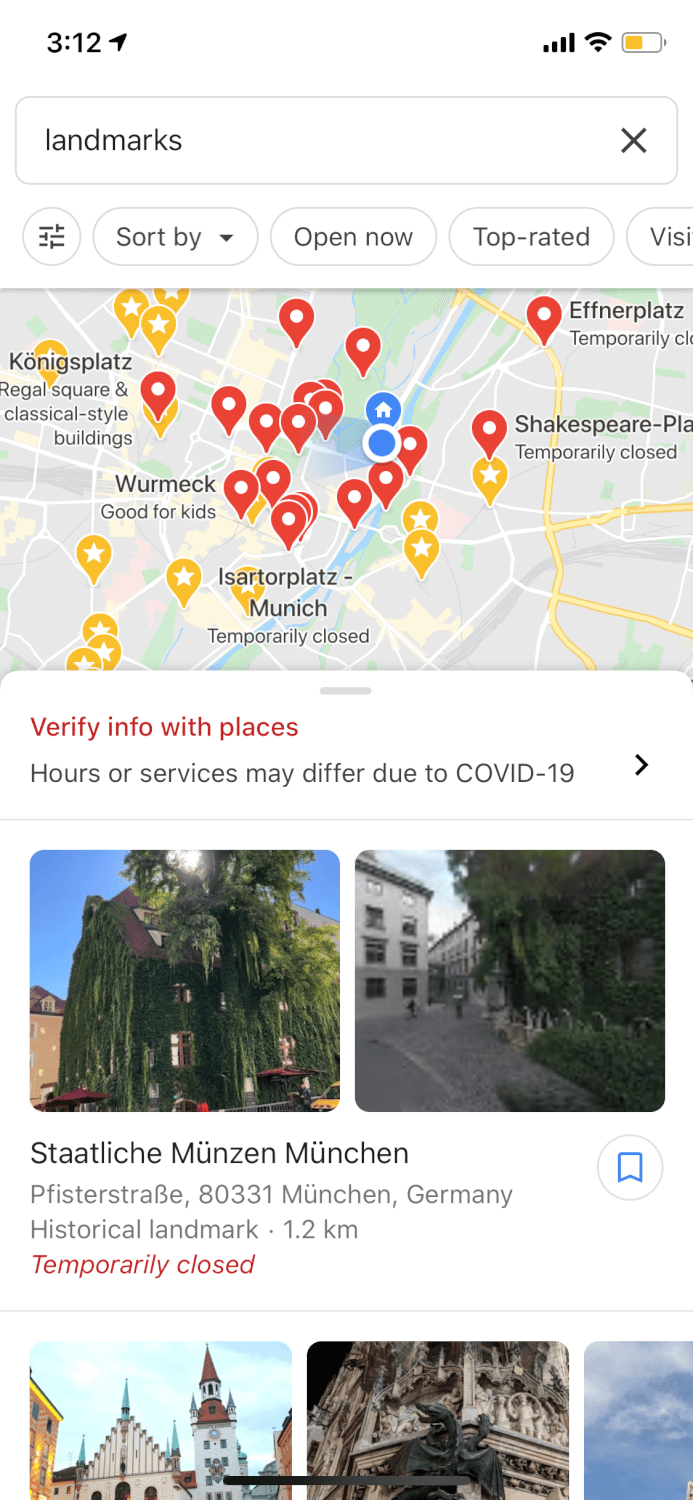
Need customer support? Hop on Twitter
Don’t ask me why this is, but if you need to get ahold of customer support during your trip (e.g. an airline, a train company, etc.), usually the quickest response time will be through Twitter.
The best way to tell if you’ll get a reply on Twitter is by checking the official accounts’ replies – if there are recent replies to Tweets, odds are good that there’s a dedicated staff member monitoring the account.
This of course works in non-travel settings as well!
Get crowdless photos by using this cool photo hack
For iPhone users, there’s a super easy way to get cool photos in crowded places without getting a bunch of people in the shot.
Simply follow these steps:
- Turn on Live photo
- Pose for your photo, making sure to stand still
- Get your photographer to snap a few photos of you standing still
- Edit the photo by going in the upper left corner, click on the LIVE button with the downwards arrow, and turn on Long Exposure
- The crowds walking around you should now be blurry, with you still in focus
Binge on movies set in your destination before your visit
You know, I could binge travel quotes all day but nothing will put me in more of a wanderlusty mood that a good movie set somewhere beautiful.
So, if you binge travel movies set in your destination, I promise your trip will be 1000000x times more enjoyable when you recognize the sights that you’re seeing. Trust me.
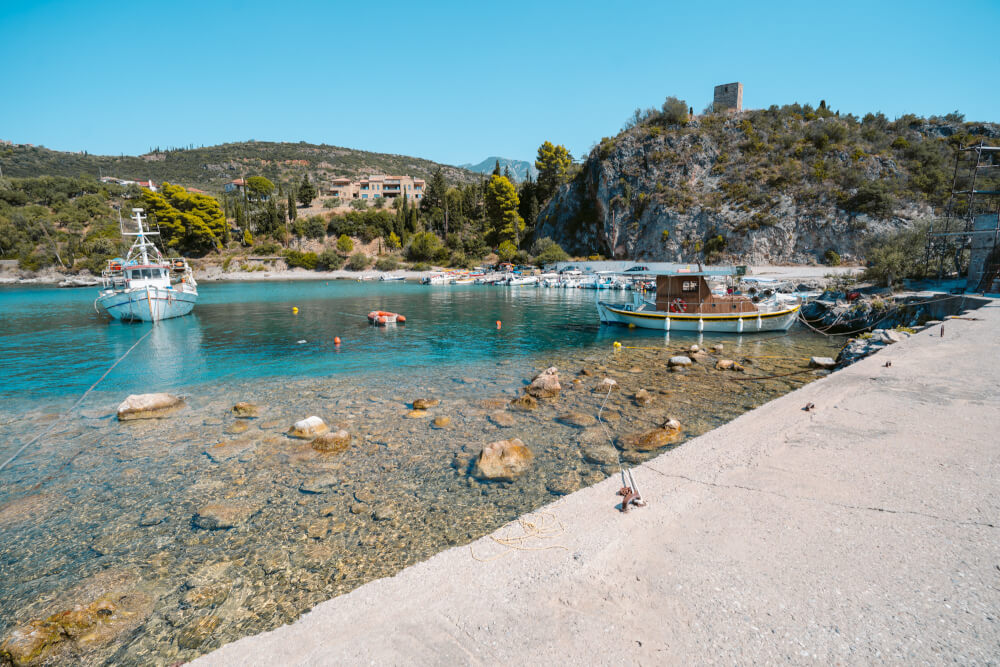
Consider learning the Cyrillic alphabet
If you are travelling somewhere that uses the Cyrillic alphabet, it can be very beneficial to learn how to read it.
This is because sometimes destination names at train/bus stations are written only in the local alphabet, which can lead to a lot of confusion if you’re unfamiliar with it.
European countries that use the Cyrillic alphabet include…
- North Macedonia

Remember: Europe is more about the experience than it is about seeing a million sights
Last but not least, I have to say… Europe is beautiful, yes. It’s packed to the brim with gorgeous museums, architecture, natural beauty, etc. BUT at the end of the day, what you need to focus more is on the experience of just being present and enjoying every moment.
Don’t stress yourself out too much with a heavy itinerary and trying to cram as much as possible in.
Enjoy it! Because your trip will go by far quicker than you think.

I hope this list of Europe travel tips was helpful!
If you’ve made it this far, wow. I applaud the stamina. And patience! This ha admittedly been a VERY long list of tips for Europe, but if you have any more questions, let me know in the comments… and be sure to read my list of unconventional travel hacks if you’re eager for more.
My Go-To Travel Favourites:
🧳 Eagle Creek: My favourite packing cubes
💳 Wise: For FREE travel friendly credit cards
🍯 Airalo: My go-to eSIM
🏨 Booking.com: For searching hotels
📷 Sony A7IV: My (amazing) camera
✈️ Google Flights : For finding flight deals
🌎 WorldNomads: For travel insurance
🎉 GetYourGuide: For booking activities
Leave a Comment Cancel reply
By using this form you agree with the storage and handling of your data by this website. *
Get Daily Travel Tips & Deals!
By proceeding, you agree to our Privacy Policy and Terms of Use .

Planning a Trip to Europe: Your 10-Step Guide
Caroline Costello
Caroline Costello's travel accomplishments include surviving a 2 a.m. whitewater rafting excursion in the Canadian wilderness, successfully biking from Dusseldorf to Cologne without a map, and gaining access to a covert pizza speakeasy in New Orleans.
Caroline is an active member of the Society of American Travel Writers (SATW). Her work has appeared on USA Today , the Boston Globe , AOL.com, MSNBC.com, ABC News, TODAY Travel, and CruiseCritic.com, among other publications.
Travel Smarter! Sign up for our free newsletter.
Before you can experience authentic Spanish tapas, piazzas in Rome, or rooftop terraces in Prague, an important to-do list stands between you and your European vacation. The logistics involved in planning a trip to Europe may seem tedious or overwhelming, but the more prepared you are, the greater your chances of a successful trip that lives up to your expectations. That’s why it’s important to do a bang-up job creating an itinerary, arranging transportation, and tackling the brass tacks before you’re off to the Continent.
The following guide explains how to plan a trip to Europe in 10 simple steps—so you can spend less time worrying about your travel arrangements and more time staring at pictures of castles and men in kilts.

1. Get your documents in order.
If you don’t have a passport, it will take at least four to six weeks from the time of application for you to receive one. Expedited services—either through the State Department or an expeditor such as Travel Visa Pro —can trim the process down to a week or so, but it will cost you an additional fee, so it’s best to take care of this well before your trip.
Already have a passport? Check its expiration date. The last thing you need is to find out your passport has expired while you’re in line at airport check-in. Keep in mind that some countries require your passport to be valid for six months beyond your trip dates.
All car rental companies require drivers to have valid licenses in their home country, so you’ll also want to check the expiration date of your license. Some car rental companies also require an international driving permit for European rentals in addition to a valid driver’s license. For U.S. citizens, these can be obtained through the American Auto Association (AAA); in Canada, try the Canadian Automobile Association (CAA).
Depending on length of stay, some destinations require valid visas in addition to passports; obtaining one is a complicated process that can take weeks even after you have been approved—so start early.
2. Establish a budget.
When planning a trip to Europe, establish a budget as early as possible—even before you know your destination, travel dates, or itinerary. Some destinations are generally cheaper than others, but there are ways to save everywhere: travel in the off-season, pick budget accommodations, plan a shorter trip. For example, London is an expensive city, but many travel providers and airlines offer affordable vacation packages to the city, and it’s not hard to find cheap air deals to London, especially during the winter.
Set your budget early on, and you’ll avoid any disappointment that could come from forging a fabulous itinerary, like two weeks in Switzerland during summer, and then discovering you can’t afford it. Travel budget apps such as TrabeePocket ( iOS | Android ) can help you keep track of your expenses once you start making bookings.
The Most Expensive Cities in the World
3. Pick a destination.
Now that you know how much you can spend, where do you want to go? If you’re like many travelers and you have a humongous list of places in Europe you want to visit, this could be tricky.
One strategy is to pick a particular site that’s on your must-see travel list, and plan your vacation around that. Last year I planned a trip to Ireland centered on an excursion to remote Skellig Michael Island , a UNESCO World Heritage site I’d dreamed of visiting. The excursion turned into an unforgettable two-week Emerald Isle road trip.
Another option is to pick someplace timely. Visit countries’ tourism websites and search for seasonal events like festivals or local holidays (which you may want to either avoid or join, depending on how you feel about crowds). Don’t forget to check the weather before you decide on your destination.
4. Create a rough itinerary.
So you want to go to France, eh? Don’t go ahead and buy a roundtrip flight to Paris and a hotel room—at least, not yet. Planning a European vacation takes a lot of prep work. You’ll want to sketch out a day-by-day itinerary of your perfect trip to France before you book a thing. Research sites and cities you really want to explore, and then figure out which ones you have the time and budget to get to.
Check out alternative ways to travel in Europe. If you want to see multiple countries or cities but are on a tight budget, you may want to consider a cruise (exchange rates are naught for U.S. citizens onboard American ships). If you’d rather not do the work of creating your own itinerary, continue booking a group tour with a company such as Intrepid Travel , G Adventures , Trafalgar , or Rick Steves’ Europe .

5. Book your airfare.
Because airfare will probably be the most expensive part of your trip, you’ll want to book it before anything else (car rental, hotel, etc.). This will allow you to be more flexible with your dates, which is a great way to save money on your flight. You can often spend less by flying on international discount airlines like Aer Lingus or Norwegian . Check multiple booking sites , including meta-search sites such as Skyscanner and traditional booking sites such as Expedia , to make sure you’re seeing a wide range of options. You can also set up fare alerts using Airfarewatchdog , SmarterTravel’s sister site, so you’ll be notified when the price of your flight drops.
Consider spicing up your trip with a layover in a different country. Icelandair has a long-running program that allows passengers flying elsewhere in Europe to take a free stopover in Reykjavik for up to seven nights.
Where to Find Premium Airfare Deals on First Class and Business Class
6. Book your accommodations.
It’s time to go back to that rough itinerary you jotted down and fill in some places to sleep. As is the case with pretty much everything you book for your trip, the earlier you make arrangements, the better—especially during summer high season.
Sure, you can just book a room at the local Hilton and be done with it. But do a bit of research and you could discover some funky lodging that’s almost as exciting as the attractions you plan to visit. Keep your eyes open for historic castles, tiny bed and breakfasts, houseboats, eco-friendly hotels, or organic farms. Budget travelers take note: Vacation rentals , homestays, farm stays, and house-swapping are accommodation options that can be shockingly affordable … or even free.
As with airfare, you should shop around on multiple hotel sites to make sure you’re getting the best deal, and read reviews from past guests to see what the experience is like. TripAdvisor , Booking.com , and Hotels.com are a few good places to start.
7. Consider travel insurance.
There are several kinds of travel insurance: trip cancellation insurance, flight cancellation insurance, medical insurance, etc. The best time to buy insurance is right after you put down the major deposits on your trip, whether that entails airfare, a package, or prepaid hotels. Once you know how much money you’ve paid upfront, you can ensure your trip if you so choose. Many airlines and travel providers sell insurance that you can purchase along with your flight or tour package. Always, always read the fine print in your policy and compare it with other travel insurance policies before you make a purchase.
Check your medical insurance coverage to see if you’re covered overseas. If not, you may want to purchase supplemental medical insurance to cover situations like the cost of transportation back home for emergency care.
Reputable travel insurance companies to consider include Allianz Travel and Seven Corners .
Travel Insurance Coverage: 18 Things Your Policy Won’t Cover
8. Book local transportation and day tours.
When in Rome, ride the Metropolitana. Find out how the locals get around the destination to which you’re traveling and act accordingly. You won’t need a car rental in places like bike-friendly Amsterdam or London with its convenient underground Tube, unless you plan to go outside the city.
A car rental is your best bet if you’re traveling to locales that can’t be easily reached by rail or plane (such as the Irish countryside). Be mentally prepared to drive in a foreign country, which can be a frightening experience when faced with incomprehensible traffic signs, narrow streets, or sheep roadblocks.
To get from city to city or country to country, examine your rail options in comparison to routes and prices offered by European discount airlines like easyJet or Ryanair . Travelers embarking on extensive travel within Europe may save money by purchasing a rail pass from Rail Europe that permits unlimited train travel within a specified region.
Check out Viator to book day tours, especially if you want to take advantage of skip-the-line options.
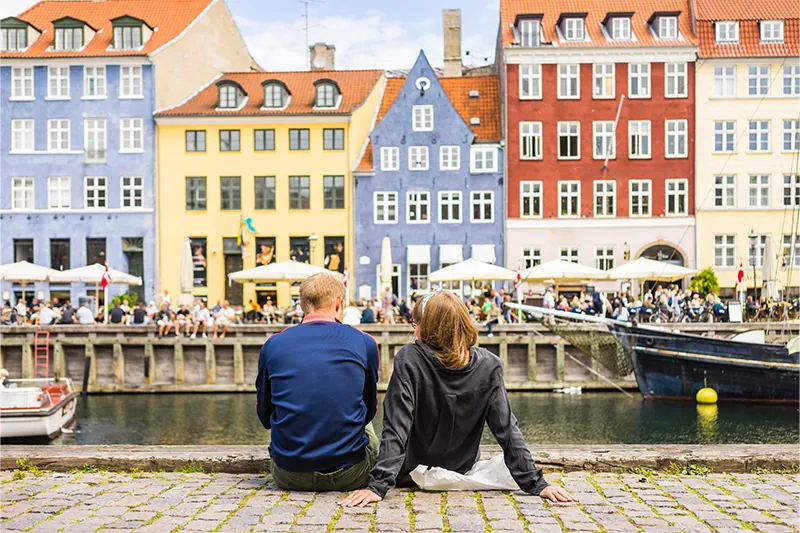
9. Tackle last-minute logistics.
A few weeks before your departure date is the right time to start taking care of a number of key logistics: money, phone, house-sitter, pet-sitter.
Call your credit card companies to let them know you’ll be traveling abroad. While you’re at it, find out if you’re going to be charged a fee for using your card overseas. Research the locations of ATMs in your destination, especially if you’ll be relying on cash.
Does your cell phone plan allow you to make calls overseas, and if so, how much will it cost you? Many cell phone companies offer temporary international plans that you can purchase for the month you’re traveling. You might also want to consider a mobile hotspot device to keep you connected.
5 Ways to Use Your Phone GPS Without Data
Packing for Europe requires both different items and a different mindset in comparison to some other types of trips. After all, there’s no arguing that Parisians are more stylish than your typical North American tourist. Most of central and western Europe have milder climates throughout the year, but that doesn’t mean you won’t encounter rain or a heatwave. You should pack clothing that’s easy to layer , and always include a packable raincoat or travel umbrella in your suitcase when traveling to Europe. Think about how you’ll be carrying your money —pickpocketing schemes are more common abroad, so it’s important to carry your money and personal belongings securely. When researching your European destination of choice, consider the overall climate and time of year you’ll be traveling. Then, about a week before your trip check out the forecast, mobilize a packing list , and ensure your suitcase is in working condition and meets your airline’s size restrictions.
Pro packing tip: If you’re tight on packing space, invest in a packing cube set . They do wonders, especially if you’re stopping in multiple destinations as they make repacking a breeze.
Editor’s note: This story was originally published in 2017. It has been updated to reflect the most current information. All of the products featured in this story were hand-selected by our travel editors. Some of the links featured in this story are affiliate links, and SmarterTravel may collect a commission (at no cost to you) if you shop through them. As an Amazon Associate, we earn from qualifying purchases.
You Might Also Like:
We hand-pick everything we recommend and select items through testing and reviews. Some products are sent to us free of charge with no incentive to offer a favorable review. We offer our unbiased opinions and do not accept compensation to review products. All items are in stock and prices are accurate at the time of publication. If you buy something through our links, we may earn a commission.

Top Fares From

Don't see a fare you like? View all flight deals from your city.
Today's top travel deals.
Brought to you by ShermansTravel
Porto to Lisbon: 7-Nt, Small-Group Portugal...
Indus Travels

Greenland: Luxe, All-Incl. 11-Nt Exploration Small-Ship...
Swan Hellenic
Ohio: Daily Car Rentals from Cincinnati

Trending on SmarterTravel
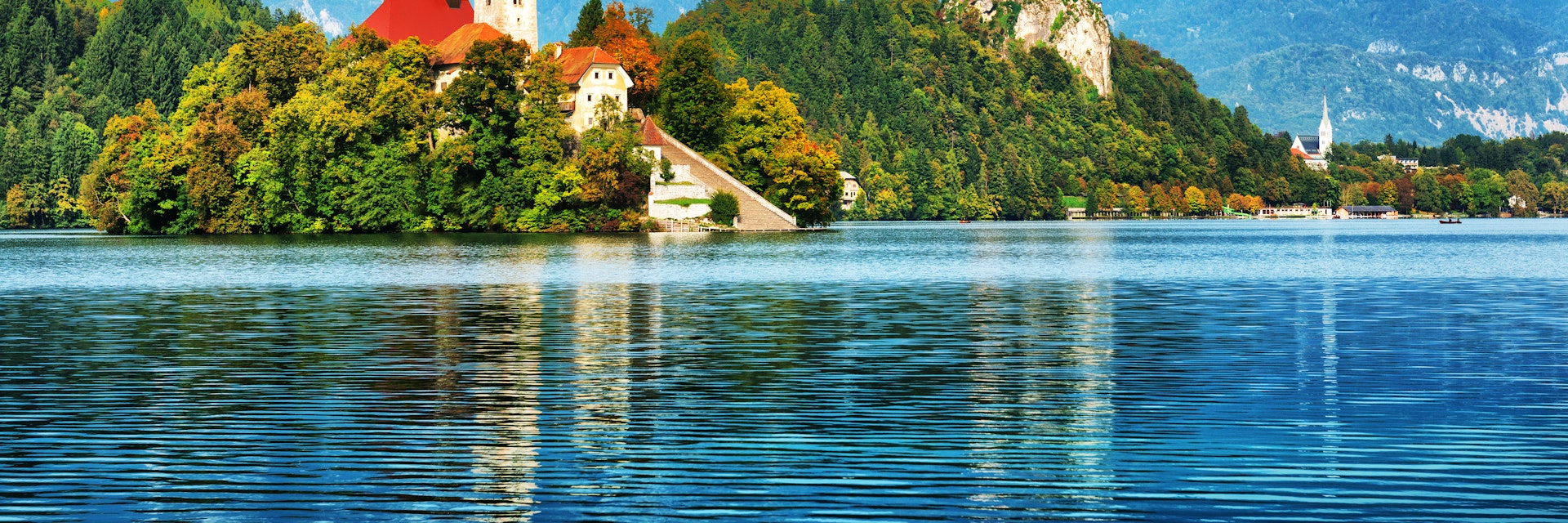
©AleksandarGeorgiev/Getty Images
There simply is no way to tour Europe and not be awestruck by its natural beauty, epic history and dazzling artistic and culinary diversity.
Attractions
Must-see attractions.

La Sagrada Família
L'Eixample
The Temple Expiatori de la Sagrada Família (Expiatory Temple of the Holy Family) is considered to be the symbol of Barcelona by many residents, and the…
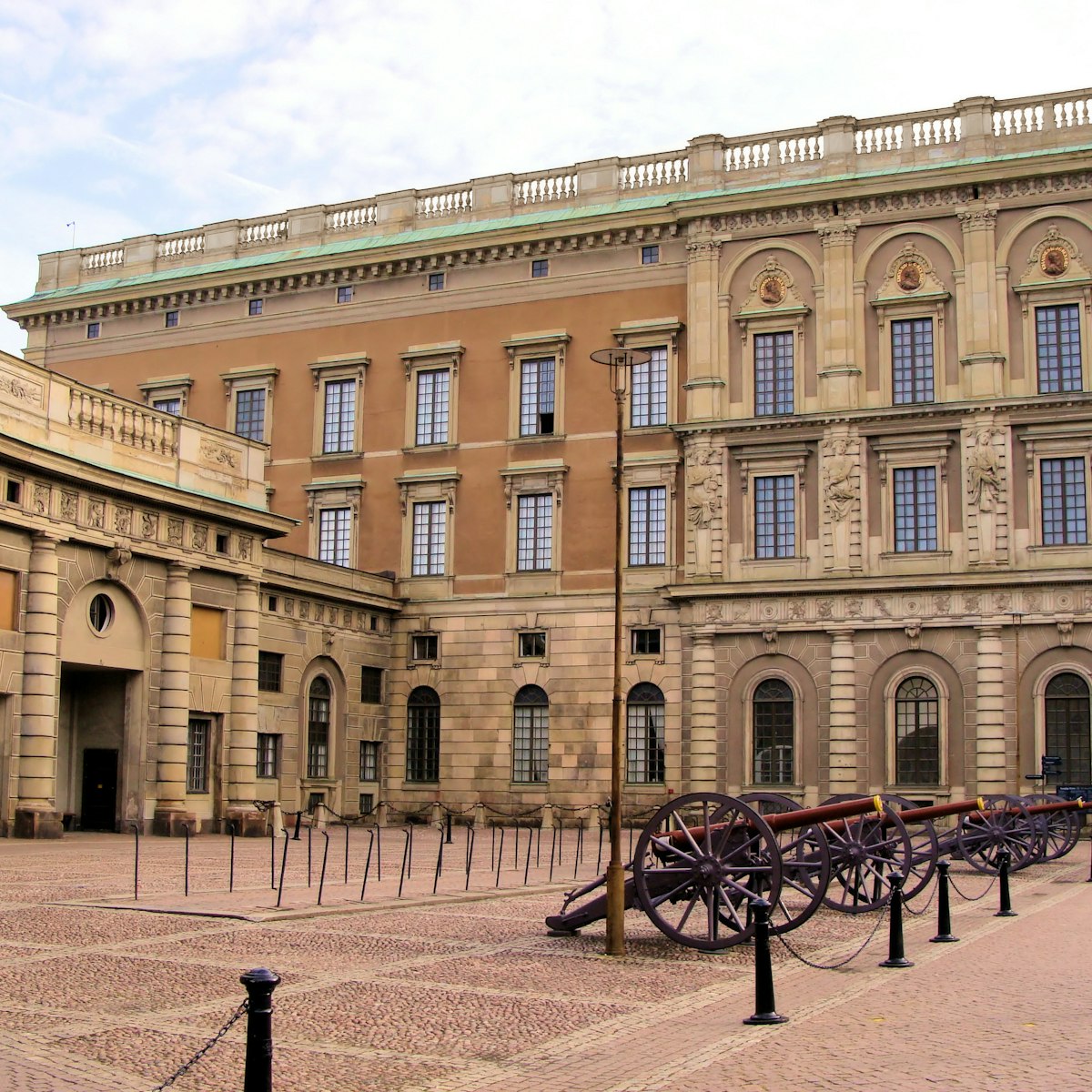
Kungliga Slottet
A massive structure with more than 600 rooms on 11 levels, Kungliga Slottet (the Royal Palace) dominates the north end of Gamla Stan. The official…

Van Gogh Museum
This wonderful museum traces Van Gogh's life and artistic development via the world's largest collection of his work. More than 200 canvases are on…

Stiftsbibliothek
Northeastern Switzerland
If the greatest masterpieces on earth are wrought for the glory of God, St Gallen’s Stiftsbibliothek (Abbey Library), is like a living prayer. Religious…
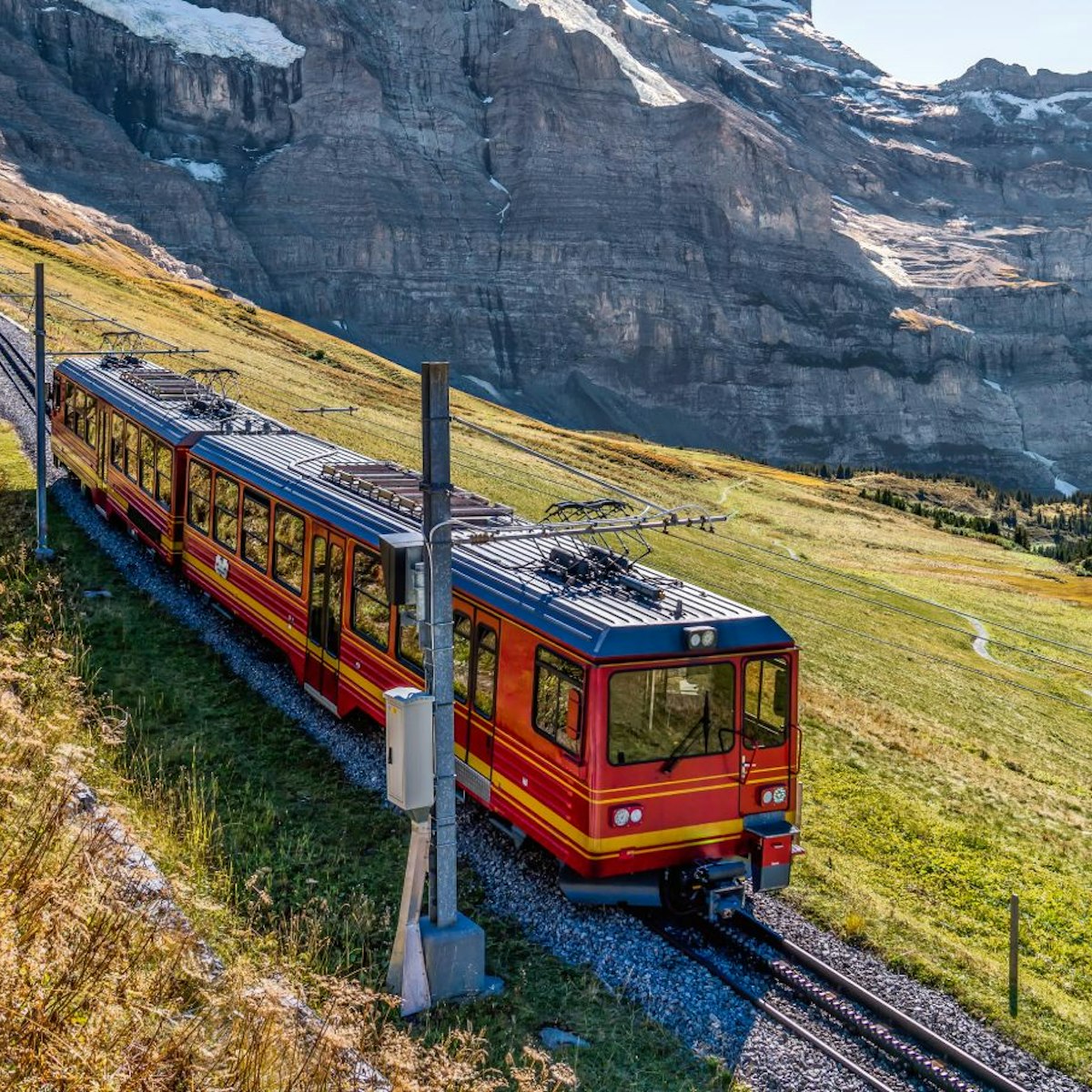
Jungfraujoch
Bernese Oberland
This is the big one. At 3454m above sea level, Jungfraujoch is Europe’s highest train station: a once-in-a-lifetime trip, with views of the deeply…
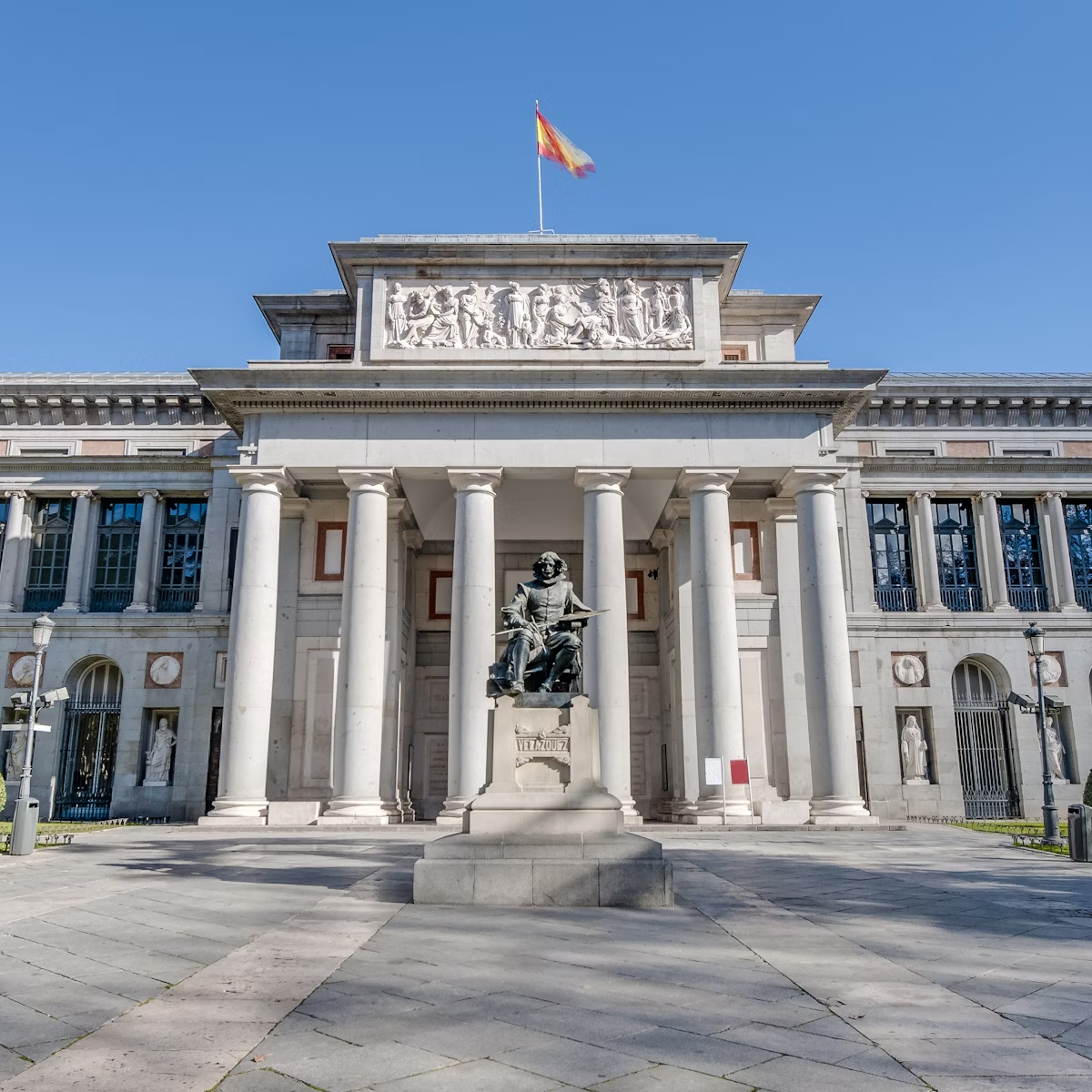
Museo del Prado
Welcome to one of the world's premier art galleries. More than 7000 paintings are held in the Museo del Prado’s collection (of which only around 1500 are…
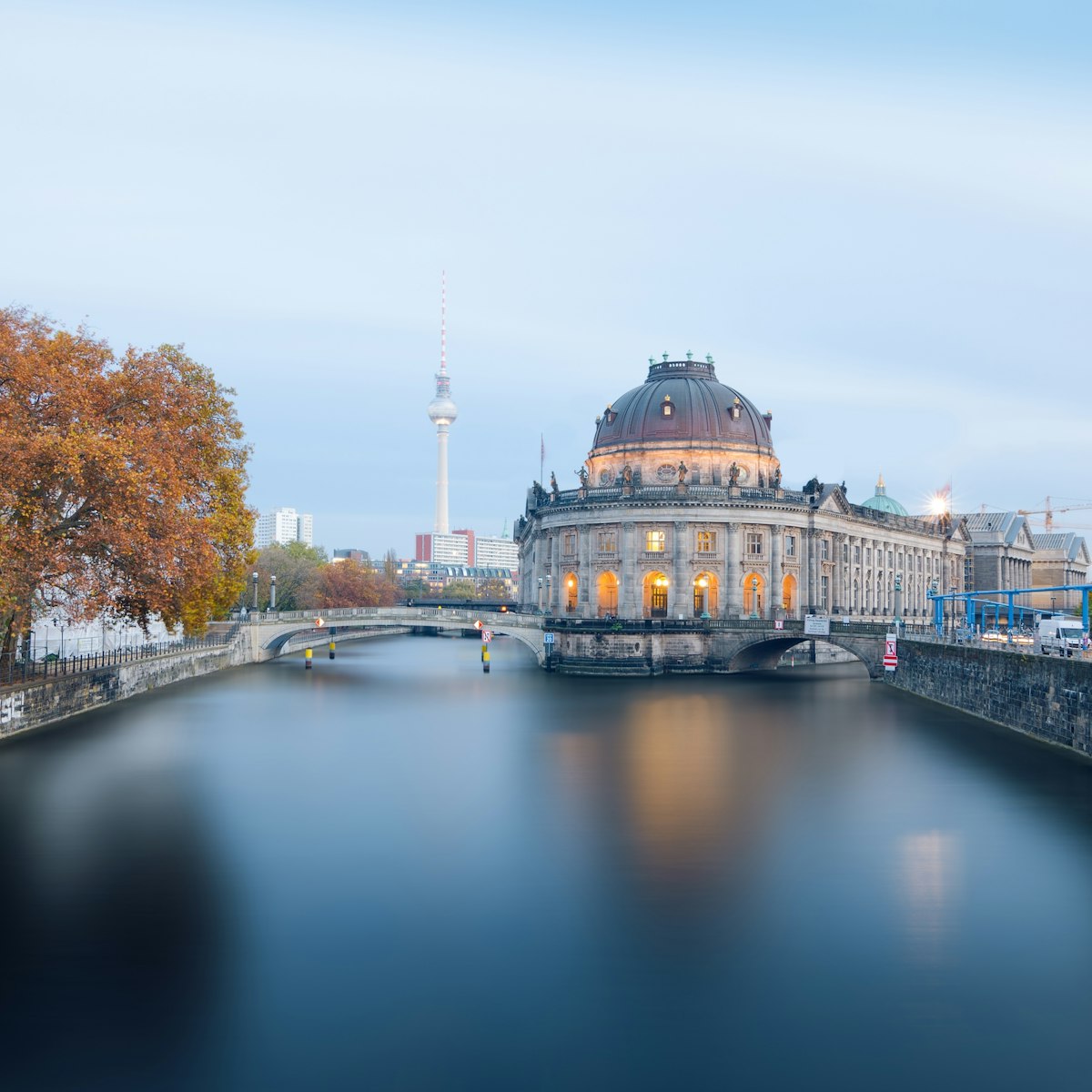
Museumsinsel
Museumsinsel & Alexanderplatz
Walk through ancient Babylon, meet an Egyptian queen, clamber up a Greek altar or be mesmerized by Monet's ethereal landscapes. Welcome to Museumsinsel …

Windsor Castle
Windsor & Eton
The world’s largest and oldest continuously occupied fortress, Windsor Castle is a majestic vision of battlements and towers. Used for state occasions, it…
Latest stories from Europe
Filter by interest:
- All Interests
- Adventure Travel
- Art & Culture
- Beaches, Coasts & Islands
- Food & Drink

Tips & Advice
Apr 16, 2024 • 6 min read
For many, packing is the most stressful part of trip prep. Here are our tips to make sure you bring what you need, nothing more.

Apr 12, 2024 • 9 min read

Mar 22, 2024 • 4 min read

Mar 14, 2024 • 16 min read

Mar 8, 2024 • 17 min read

Mar 1, 2024 • 3 min read

Feb 26, 2024 • 8 min read

Feb 1, 2024 • 14 min read

Jan 30, 2024 • 6 min read

Jan 19, 2024 • 11 min read
in partnership with getyourguide
Book popular activities in Europe
Purchase our award-winning guidebooks.
Get to the heart of Europe with one of our in-depth, award-winning guidebooks, covering maps, itineraries, and expert guidance.
Europe and beyond
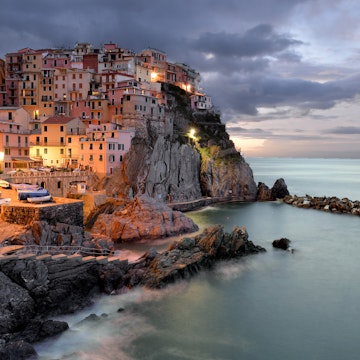
Book your individual trip , stress-free with local travel experts
- roughguides.com
Plan your tailor-made trip with a local expert
Book securely with money-back guarantee
Travel stress-free with local assistance and 24/7 support
Discover more places

- Travel Guide Bulgaria
- Travel Guide Cyprus
- Travel Guide Czechia (Czech Republic)
- Travel Guide Denmark
- Travel Guide England
- Travel Guide Estonia
- Travel Guide Finland
- Travel Guide France
- Travel Guide Germany
- Travel Guide Greece
- Travel Guide Hungary
- Iceland Travel Guide
- Travel Guide Ireland
- Italy Travel Guide
- Travel Guide Latvia
- Travel Guide Lithuania
- Travel Guide Montenegro
- Travel Guide Netherlands
- Travel Guide Norway
- Travel Guide Poland
- Portugal Travel Guide
- Travel Guide Romania
- Travel Guide Russia
- Scotland Travel Guide
- Travel Guide Serbia
- Travel Guide Slovakia
- Travel Guide Slovenia
- Travel Guide Spain
- Travel Guide Sweden
- Travel Guide Switzerland
- Travel Guide Turkey
- Wales Travel Guide
- Croatia Travel Guide
- Travel Guide Georgia
- Travel Guide Kazakhstan
- Travel Guide Macedonia
- Malta travel guide

updated 23.10.2020
Ready to discover tailor-made travel?
Get support from our local experts for stress-free planning & worry-free travels.
- Destinations

Your 13-Step Guide to Traveling to Europe for the First Time
There is absolutely nothing like traveling to Europe for the first time–and we want to help make your experience as magical as possible!
It has been about a decade since our very first trip to Europe, and I still remember it like it was yesterday.
The thrill of the plane touching down in Paris , the confusion of taking the RER B train into the city, and the absolute electricity that shot through my veins as we exited the train stop and I marveled at the real-life version of Saint-Germain-des-Prés unfolding before my eyes (I swear, actual church bells were going off)–I remember it all.
I remember the next trip, too, where we upped the stakes: instead of a week in Paris, we spent 2.5 weeks exploring Krakow , Budapest , Plitvice Lakes National Park , Zadar , Dublin , and the Cliffs of Moher .
… and then we quit our jobs to travel the world , and we’ve only gotten more obsessed with traveling Europe since.

Some links in this post may be affiliate links. If you make a purchase through one of these links, we may earn a small commission at no extra cost to you. Please see our disclosure policy for more detail.
In the decade since that first trip to Paris, we’ve thrown ourselves into exploring the world, traveling full-time for 4+ years, visiting 50+ countries (including most countries in Europe), and even living in Portugal along the way.
One of my absolute favorite parts of my job, though, is to help people–primarily Americans like myself–plan their first trip to Europe.
Because here’s the thing: neither my husband Jeremy nor I ever had a passport or left the USA until we were adults.
We taught ourselves how to travel Europe and the world at large from scratch, and I remember the fear we felt and the mistakes we made along the way almost as well as I remember the beauty of that first glimpse of the Eiffel Tower.
If you find yourself with a major case of European wanderlust and a dizzying array of questions about how to turn those travel dreams into your actual first trip to Europe, this checklist is for you.
Here’s your step-by-step guide to traveling to Europe for the first time!
Table of Contents
Ready to Plan Your First Europe Trip?
Our top 2 tips for visiting europe for the first time, planning your first trip to europe: your 13-step checklist, faq about traveling to europe for the first time.

Helping people plan trips is our passion and purpose here on Our Escape Clause.
Once you read this step-by-step checklist for planning your first trip to Europe, we’d love to help you continue to plan your travels in more detail!
We have around a dozen general Europe travel guides on our website, including everything from suggested Europe travel itineraries to where to find the most magical Christmas markets , plus literally hundreds of posts on specific European destinations!
We’ll link relevant blog posts throughout this Europe travel guide, but if you’re curious about our coverage of any particular place, you can use the search bar in the top right corner of the site (or on the pop-out menu if you’re reading on your phone) to see what we’ve written.
You can also check out our destinations page to browse by country!

We have a lot to say when it comes to Europe travel tips ( here are 75 of our best ones ), but specifically for travelers visiting Europe for the first time, there are 2 pieces of advice we’d give above all others.
First, resist the urge to overcrowd your itinerary.
I go into this more below, but believe us, we absolutely relate: I still have to fight this urge with every trip we take!
However, moving around constantly is a surefire way to end up overwhelmed, exhausted, and not getting to appreciate all of the magnificent places you’re seeing.
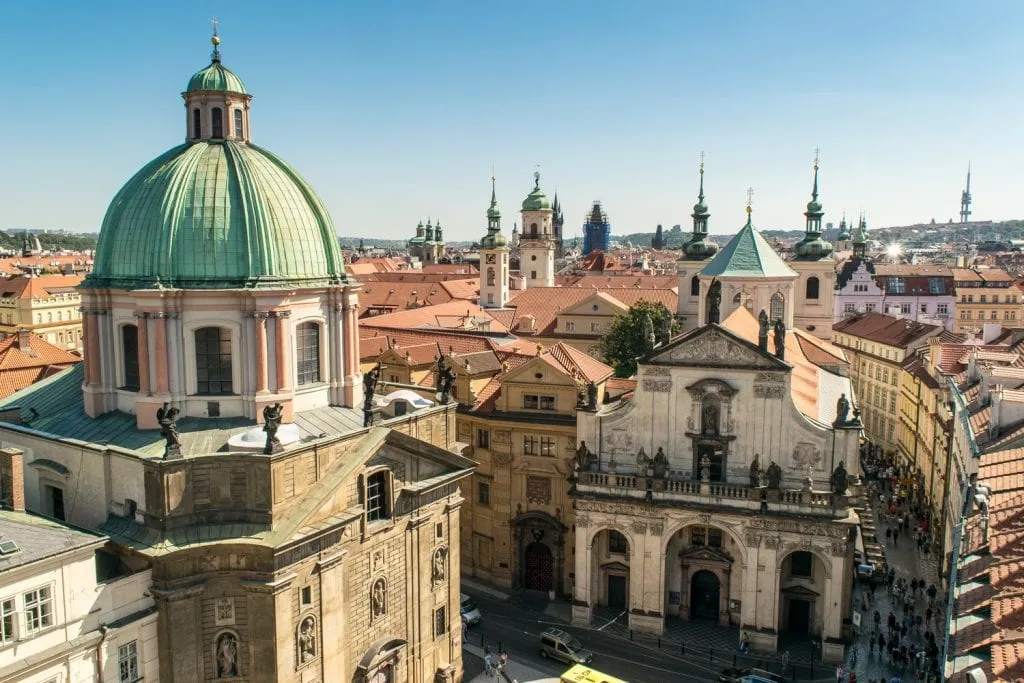
Second, know that throwing down money and committing to finally taking the trip of your dreams is often the hardest part–once you board the plane, everything gets easier.
I vividly remember how nervous we were to book our first (and second, and third) trips abroad.
For 2 people who had never even had passports until they were adults, we had a lot to learn!
But at the same time–I’m so, so, so glad we took the plunge, and you will be too.
After all, millions of people travel to foreign countries each year, and there’s absolutely no reason that you can’t be among them.
You’ve got this!
Now onto the details…
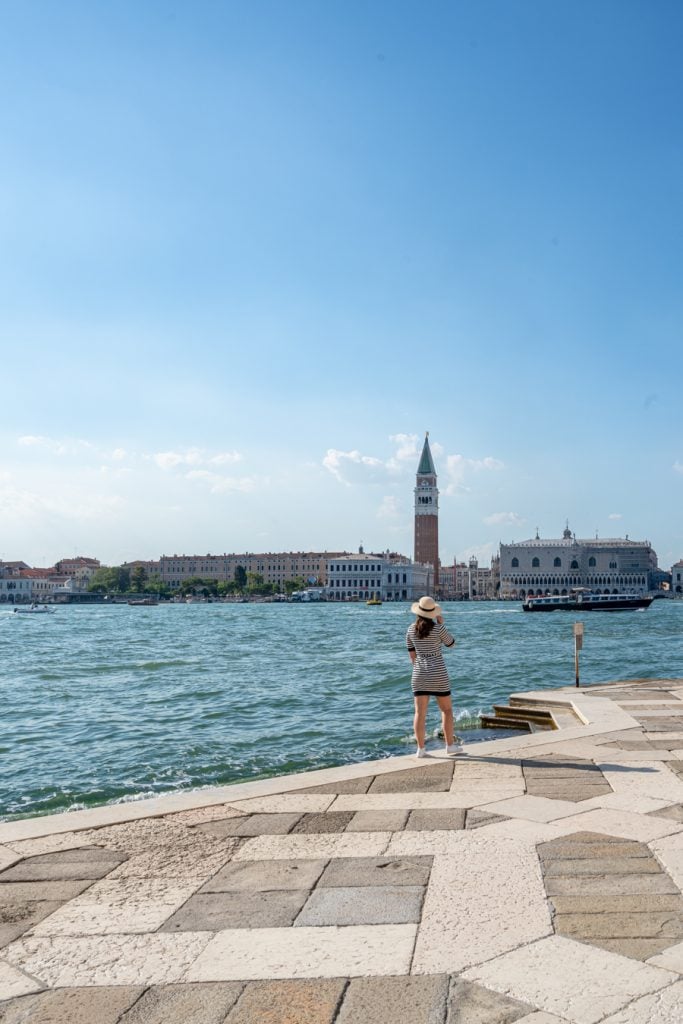
Step 1: Get inspired and brainstorm where you want to go.
Without a doubt, the first step to planning a trip to Europe is brainstorming all of the places you want to visit!
If you’re anything like us, odds are high that the list is longer than what you could rationally accomplish in a decade, let alone on a single vacation, but it never hurts to dream!
Whether you want to road trip Tuscany , wander the streets of Paris , marvel at the Alhambra in Spain, hike on a glacier in Iceland, stroll along the Cliffs of Moher in Ireland , or something radically different, pay attention to what calls to you the most.
There are no wrong answers when deciding which destinations are most interesting to you!

Step 2: Check visa requirements for Europe.
While most readers of this blog post, such as Americans like us and other people from non-European, strong-passport countries like Canada and Australia, will likely not need a visa to take their dream trip to Europe, it’s always best to triple-check!
(And, in a post-2020 world, we all know more than ever that expectations can change quickly.)
As you research what you need to travel to Europe, you’ll likely come across many references to the Schengen Area .
These are the 26 European countries that share open borders with each other.

Americans and many others can visit these countries for up to 90 days out of any 180 without a visa.
In the future, the ETIAS system –essentially an e-visa procured by filling out paperwork online before traveling, which will cost a nominal 7 Euro–will come into effect for the Schengen Area.
ETIAS is currently slated to begin operating sometime in 2024, though the starting date has been pushed back several times.
Other countries–like the UK, Montenegro, and Romania, for example–are not part of this system, but if you come from a country with a strong passport, you likely won’t need a visa there either.
A few nearby places that might be on your radar, like Turkey , require an e-visa for Americans to enter.
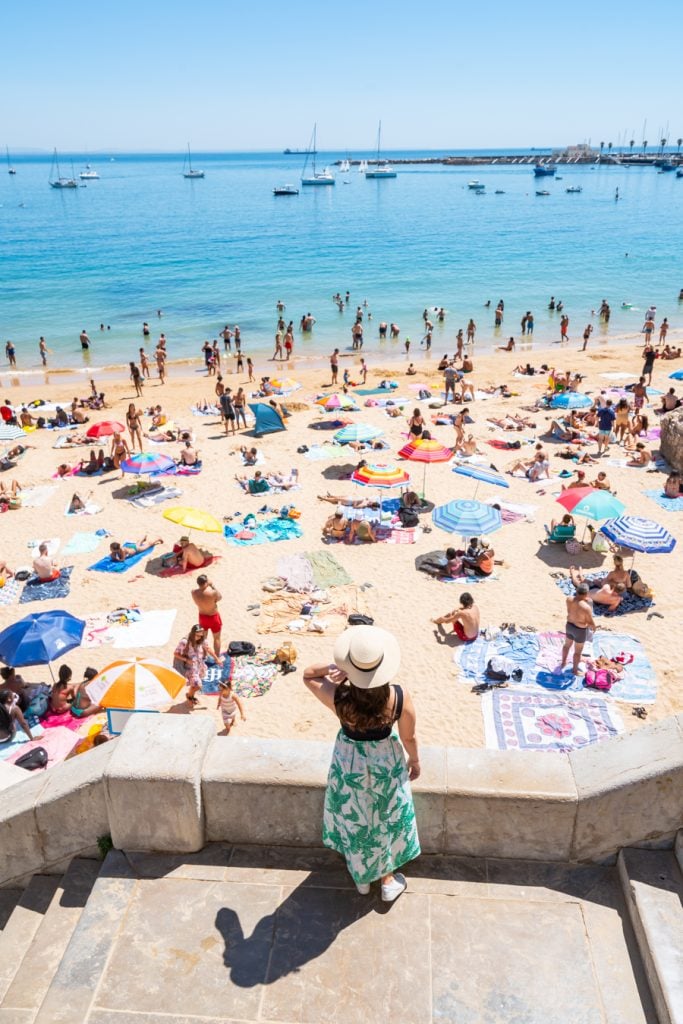
Step 3: Shop for flights (and be as flexible as possible).
Once you have a list of your most-wanted travel destinations and have confirmed you’re clear to travel, it’s time to shop for your flights to Europe!
We recommend being as flexible as possible during this process, either with your travel dates, your destinations, or ideally, both.
Flight prices and routes can vary dramatically depending on where you’re coming from and where you’re going, which is one reason why we don’t recommend finalizing your Europe itinerary until you have your flights purchased (more on that below).
Ideally, you’ll want to start and end your first Europe trip in a major airport hub.
This doesn’t necessarily need to be the same hub, though!

While one-way tickets can be pricier than round-trip ones, if you’re flexible on your dates and destinations (so deciding which cities to start and end in partially based on price), you can usually find excellent deals.
This is exactly how we ended up flying into Krakow and out of Dublin during our first multi-country trip to Europe!
As far as airports go, for those of you coming from the USA (or anywhere in North America, really), you’ll want to potentially check ticket prices for London, Madrid , Dublin, Paris , Lisbon , Frankfurt, Amsterdam , and Milan .
That’s not an exhaustive list by any means, but there are often flight deals to and from these cities.

Step 4: Narrow down your itinerary for your first Europe trip.
Now that you’ve scored a great flight deal on the “bookends” of your trip, it’s time to fill in the rest of your itinerary for traveling Europe for the first time!
As we mentioned above, the biggest challenge here for most travelers is to not bite off more than they can chew and travel too fast.
Trust me, we understand the temptation–I still have to trim destinations from every. single. trip. that we plan, because my overwhelming desire to do it all fights with logic every step of the way.
I promise, though, you will have a much better trip if you slow it down.
Ideally, allow at least 2 full days (typically not including days you travel to or from the destination, though there are exceptions) to each “base” or city.
Staying in one place for 3 or 4 days is even better, and will give you time for a day trip or two.

We have several suggested Europe itineraries outlined here , and can highly recommend all of them!
However, there are truly infinite possibilities when it comes to structuring your first Europe trip.
When it comes to deciding exactly which of your dream destinations make the cut, we recommend letting geography be the tiebreaker.
For example, if you’re trying to decide whether to visit Amsterdam or Budapest on a trip where you fly into Paris, Amsterdam is the clear winner.
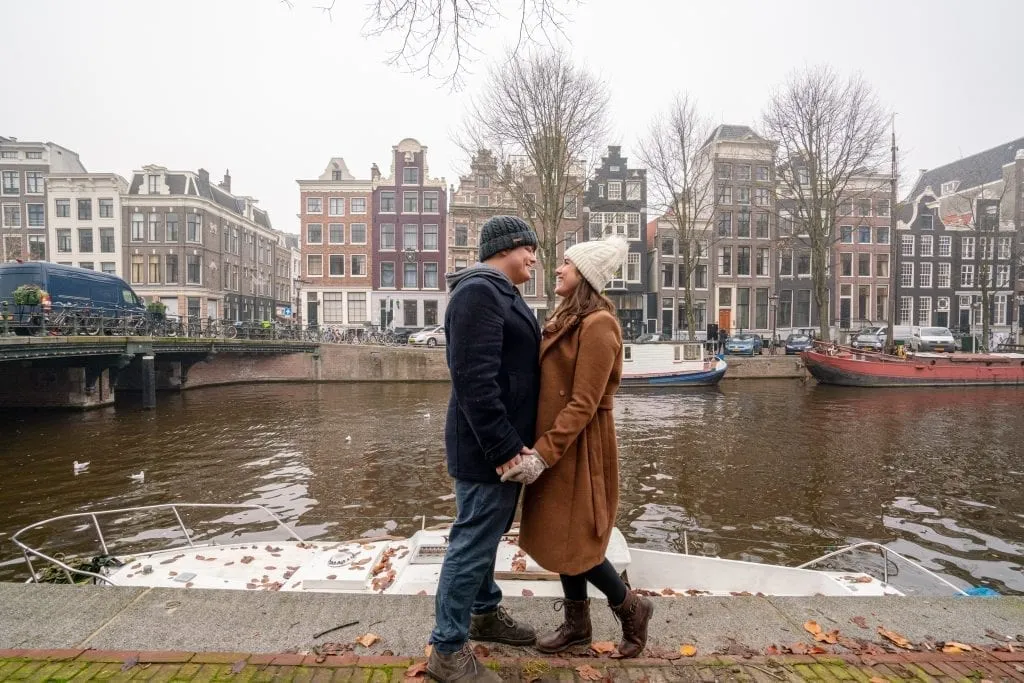
If you fly into Vienna instead of Paris, though… Budapest it is!
Other factors to keep in mind when narrowing down your itinerary include seasonality/weather and your budget.
Using Google Flights and searching the general term “Europe” in the “Where To?” box can be a great way to find unexpected flight deals!
(Don’t forget to play around with the map, zooming in and out on different regions–you might be surprised at what deals you find).
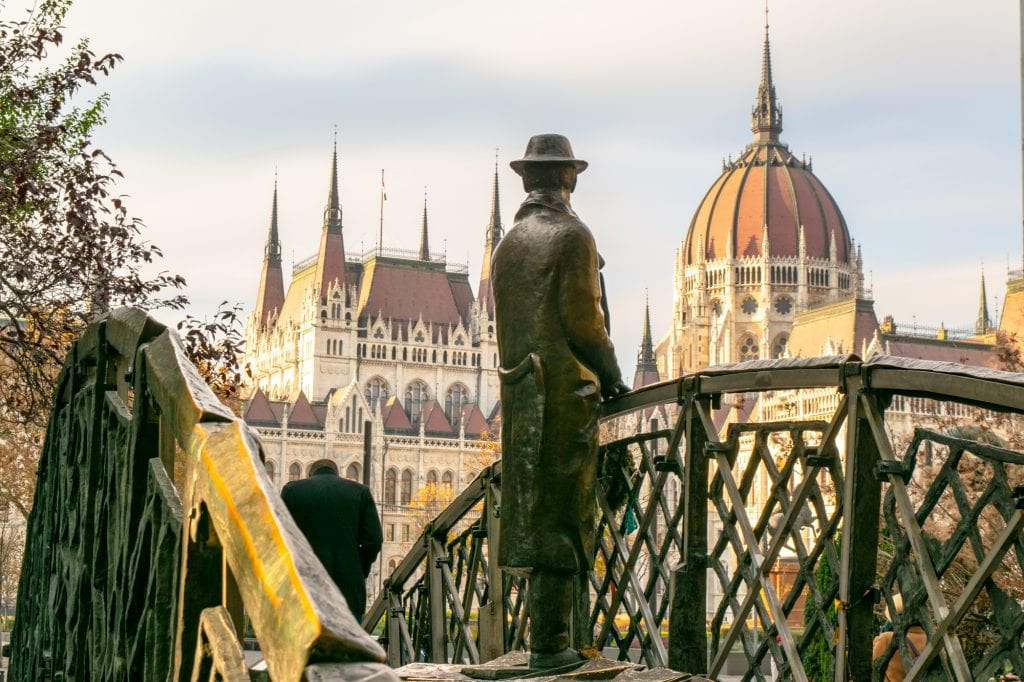
Step 5: Finalize your budget for traveling to Europe for the first time.
Now that you know exactly when your trip to Europe is happening and where you are going, it’s time to finalize your travel budget!
We recommend taking the total amount you hope to spend in Europe, subtracting any splurges or major expenses you know are coming (a pricey tour, some clothes shopping, etc.), and then dividing the remaining amount by the number of days you’ll be traveling in Europe.
Voila–you have your daily Europe travel budget!
This is the number you should try to stay under each day when you add up the amount you spend on food, activities, lodging, and intra-city transportation.
We have used this simple strategy to budget our trips for years and detail it more thoroughly in our travel budgeting guide .

Step 6: Book some of your accommodation.
Once you have your plane tickets, a plan for where you’re going, and a budget set, it’s time to decide where to sleep!
We offer specific hotel suggestions in the vast majority of our destination-specific travel guides, but generally speaking, you’ll want to look for something well-reviewed (we aim for an 8.0 rating or better on Booking.com ) in a central location.
Also, keep an eye out for air conditioning and/or heating as the weather demands–those things are not a guarantee in all areas!
A very general rule to keep in mind when booking hotels?
The smaller the destination, the earlier you will want to book.
Somewhere like Cinque Terre simply doesn’t have as much lodging available as it does people who want to visit, while places like Paris are big enough to absorb their travelers in spite of their popularity.
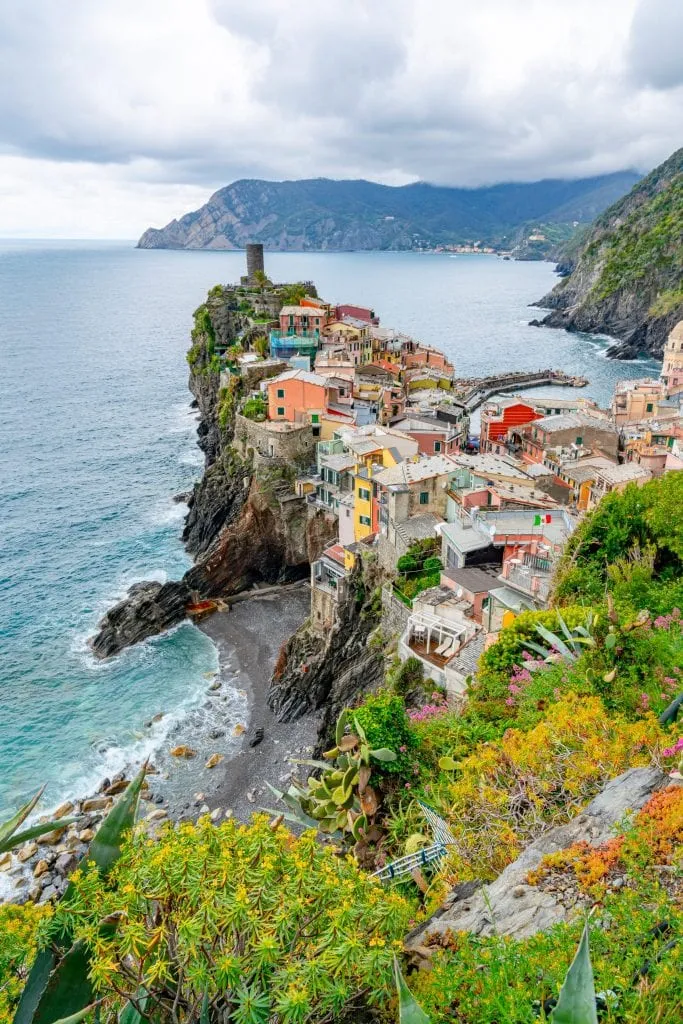
As a result, tiny, popular places are where we tend to book our accommodation the earliest.
Of course, if you’re headed somewhere for a big event or festival–say Oktoberfest in Munich or Christmas markets in Salzburg –you’ll want to book ASAP.
We find virtually all of our accommodation (short-term apartment rentals included) via Booking.com these days.
If we get stuck, we may occasionally check Airbnb too, but as the years have gone by, prices and guest expectations have both increased dramatically, so we find ourselves using it much less than we once did.

Step 7: Figure out your inter-city (or country) transportation.
When it comes to traveling between each of your destinations during your vacation in Europe, you might find that you come up with quite a mix of methods!
Trains are our favorite way to travel in Europe–they’re simple, comfortable, safe, and extremely convenient for visiting most major cities (there are caveats to this, in places like the Balkans).
We would only recommend renting a car if you’re visiting the countryside somewhere.
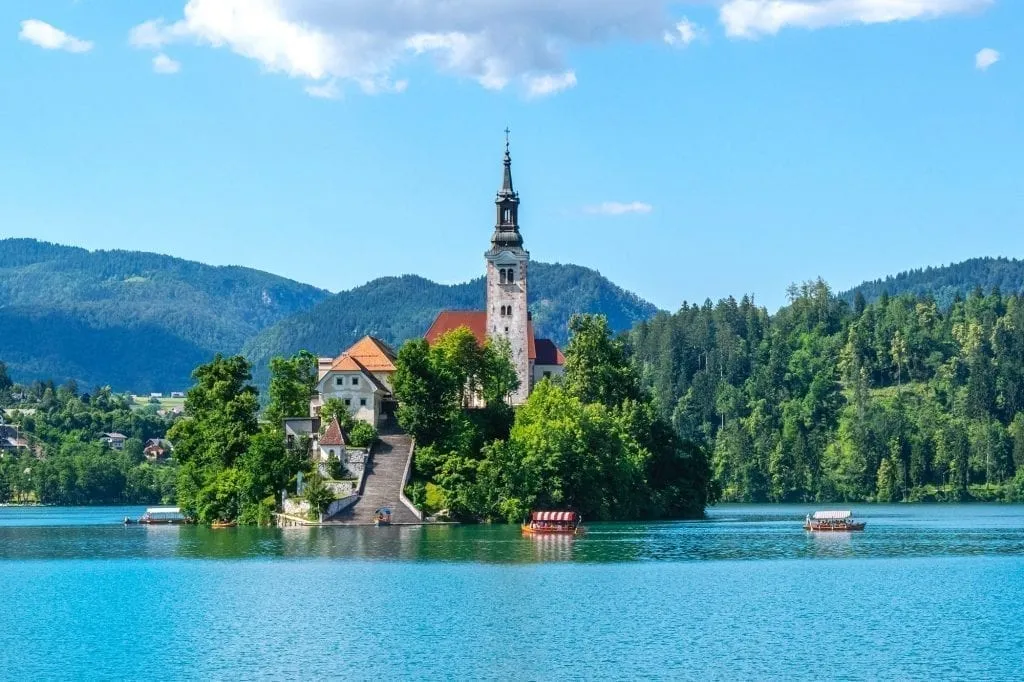
If your itinerary is a more typical first-timer’s route and sticks to major cities–something like London-Paris-Amsterdam–then a car is absolutely unnecessary.
Buses are our least favorite method, as they tend to be slow and uncomfortable, but are undoubtedly the cheapest.
Flights are by far and away the best option for extreme distances, but are cumbersome and tend to eat up an entire day.
And, finally: if you’re visiting Europe in the summer , don’t forget about ferries!

Step 8: Book some of your bucket-list travel experiences in Europe.
While simply existing in a gorgeous new destination is a bucket-list travel experience in and of itself, booking some unique tours and attractions can help make your trip even more memorable!
From touring the Colosseum at night to eating our way through Athens on an incredible food tour to snorkeling between 2 tectonic plates in Iceland, we have never been sorry to splurge on a memorable experience abroad.
(And yes, we paid our way on each of those tours–we don’t accept sponsored trips or tell anyone that we’re bloggers while there.)

Booking your experiences in advance goes beyond the small group tours, though: skip-the-line tickets for major attractions like the Arc de Triomphe , Vatican Museums , and Sagrada Familia are so beneficial that I cannot sing their praises enough.
We never show up to a major attraction without booking tickets in advance these days (and it’s even more important in a post-2020 world).
We book our skip-the-line tickets and many of our tours through Get Your Guide .
For bespoke, small-group tours that go above and beyond the “normal” experience, we love Take Walks .

Step 9: Learn a little bit of the local language(s).
If you’re staying firmly on the tourist trail on your trip to Europe, you won’t necessarily need to speak any of the local language(s) to travel there.
… But you will almost certainly encounter some monolingual Europeans, and either way, it will definitely enhance your experience in the country to know a tiny bit of their language.
Simple phrases like hello, goodbye, please, thank you, you’re welcome, do you speak English, and the numbers 1-10 can go a long way!
If you’d like to go a bit further, learning to order in restaurants and read menus is both helpful and efficient.
In addition to being fun and practical to learn, it’s one of the conversations that you’re likely to have repeatedly enough during your travels that the phrases will potentially stick with you until long after your trip is over.

Step 10: Make a packing list (and shop!).
Packing can often be one of the most unexpectedly stressful parts of getting ready for a trip, and even more so for your very first European vacation!
We have full suggested packing lists for Europe in spring , summer , winter , and fall , which go into far more detail than I have room for here.
Our absolute biggest advice for packing for Europe, though, is not to stress too much about it: just about anything you could possibly forget will be available there too!
For now, here are a few essentials that we absolutely recommend adding to your list:

Travel Adaptors for Europe — If you’re coming from outside of Europe, you’ll definitely need adaptors for your electronics.
Be sure to check the requirements for any particular country that you visit–the United Kingdom, for example, is well-known for using different plugs than most of the continent.
Comfortable Day Bag — We currently use Pacsafe’s sleek anti-theft backpack and love it, but if you don’t want to shell out the cash for this trip, that’s totally understandable.
Just aim for something comfortable to wear, not flashy, and medium-sized–we used a Northface Jester backpack for years and loved it as well.
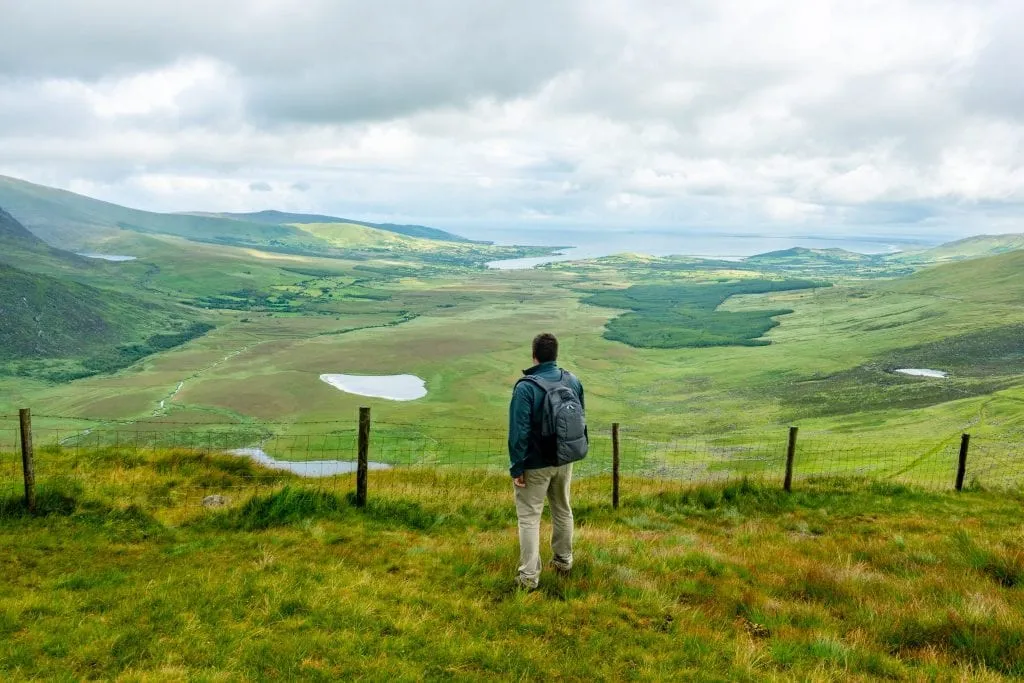
Portable USB Charger — Don’t stress about your phone dying while you’re sightseeing: add a portable charger to your packing list for Europe.
Basic Medication — Some people prefer to buy medication for basic headaches, fevers, and stomach aches as needed, but who wants to deal with language barriers when they’re sick?
I personally learned this lesson the hard way on our very first trip to Europe, and have never hopped continents without my own supply since.
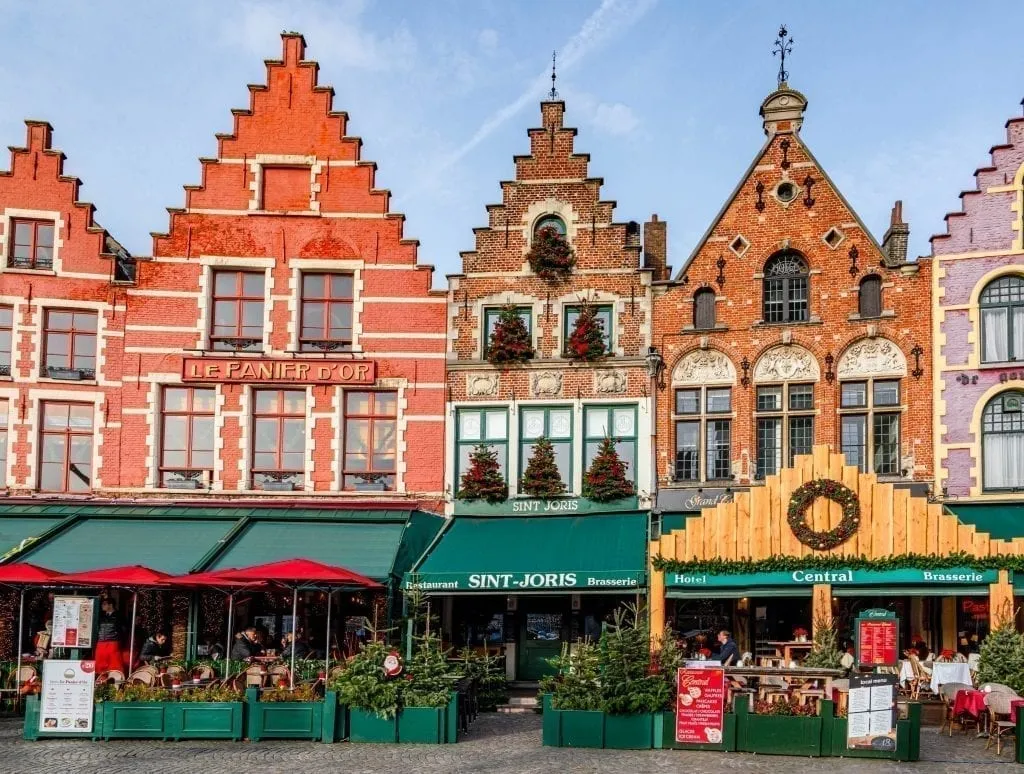
Step 11: Purchase travel insurance.
Don’t forget to purchase travel insurance before jetting off to Europe!
While Europe is generally a perfectly safe place to travel, the reality is that traveling in general opens you up to vulnerabilities that you simply don’t have at home.
If you miss a plane or train, have your luggage get lost, get pickpocketed, or worse, get injured, you’ll be glad that you have insurance.
Given how inexpensive travel insurance is when purchased in advance (especially as compared to the price of plane tickets!), it’s well worth the investment.
Consider checking inclusions and prices with Safety Wing for your first trip to Europe.
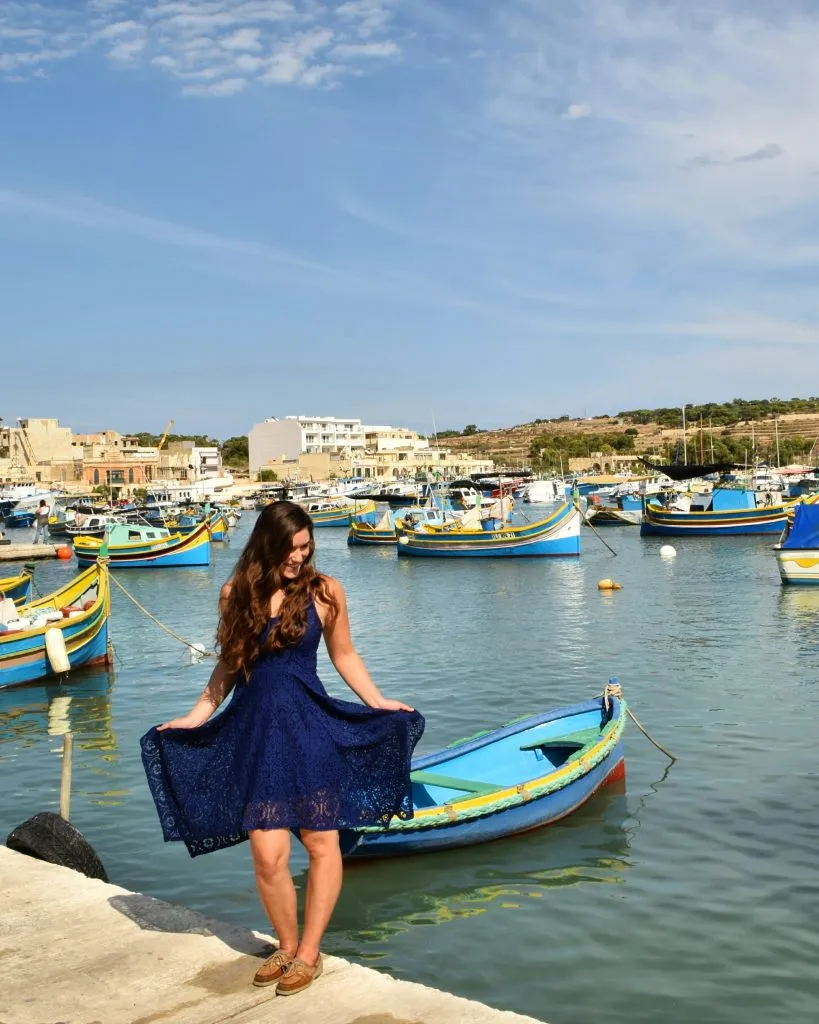
Step 12: Plan for your arrival.
The penultimate step of planning a trip to Europe is as simple as it is important: make an arrival plan.
When you arrive, you’re undoubtedly going to be exhausted, overwhelmed, and probably a bit jetlagged, too!
No matter how many times we step foot in a new country, it never stops being a tiny bit stressful, simply because there are a lot of variables at play in the first few hours of arriving somewhere new.

Make life easier on yourself by thinking ahead!
When learning how to travel to Europe, set aside time to figure out your exact steps for what to do after the plane lands.
That means knowing exactly how far away your hotel is, how you’ll get there from the airport (train, bus, rental car, taxi?).
If you’ll be traveling by taxi, look up what a reasonable price is at your destination and/or if there’s a set fare from the airport to the city center (in major cities, there often is).
Though it’s not strictly necessary, if you’d like to make arriving in Europe for the first time extra easy on yourself, consider treating yourself to an airport transfer when you arrive (like tours, you can often book these on Get Your Guide ).
Options like this one in Rome and this one in Paris can be a great way to make sure your very first Europe trip starts off on the right foot.
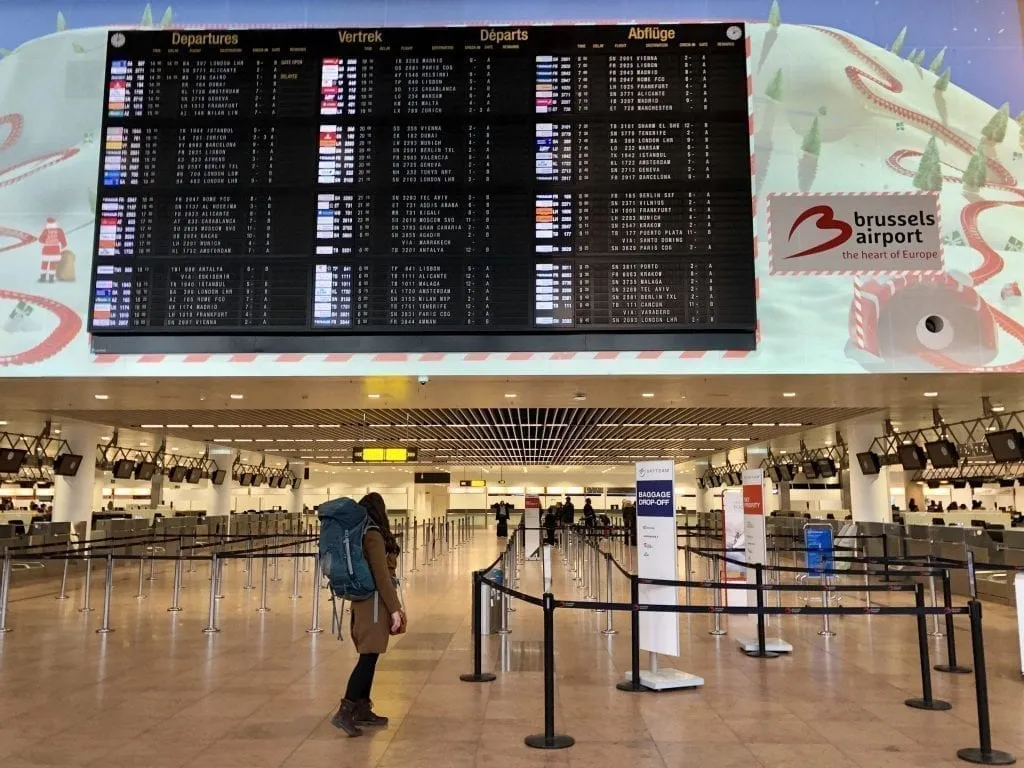
Step 13: Have an amazing first trip to Europe!
Once you’ve done the planning… then it’s time for the fun part!
Enjoy every step of your first trip to Europe, from the confusing parts to the magical ones–and yes, both will probably end up with a prominent place in your memories.
If you’re anything like us, the odds are high that your first experience of traveling in Europe won’t be your last.
Once you start… it’s hard to stop.

Every day, I wake up to emails from readers planning a trip to Europe.
I love answering emails (and yes, I will probably answer yours!), but there are definitely some frequently asked questions that come up often enough that they deserve a blanket response here.
These are some of the most common FAQs we see about traveling in Europe!
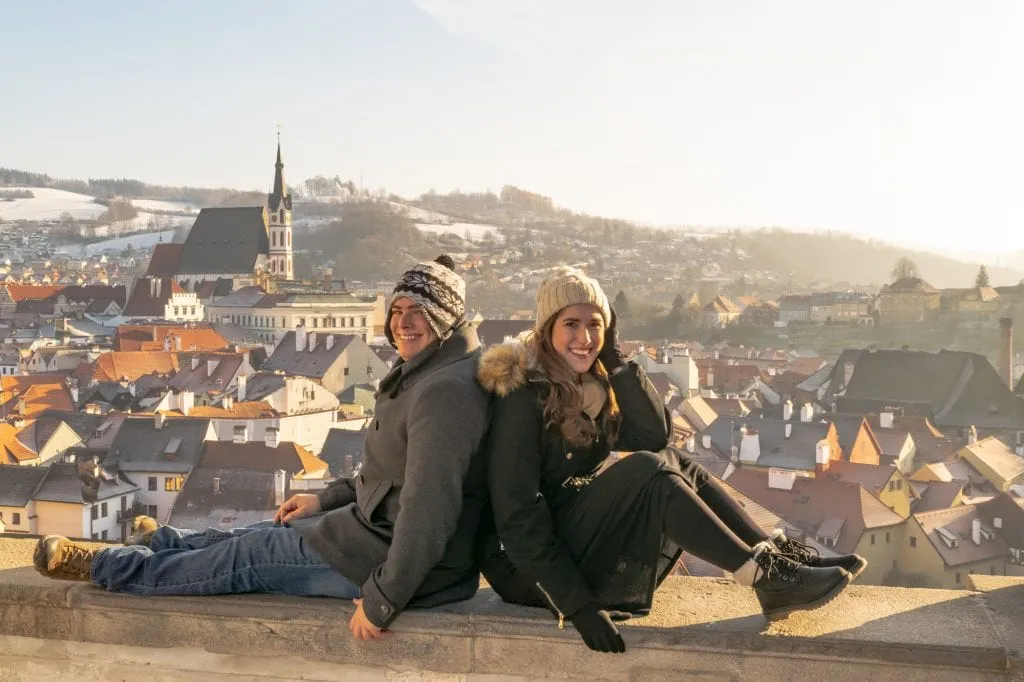
What’s the easiest way to get Euros and other currency?
The answer to this question has a significant caveat: be sure to check foreign transaction fees and ATM fees with your bank before leaving and let your financial institutions know that you’ll be abroad.
However, generally speaking, by far the easiest way to acquire a new currency when traveling in Europe is to simply withdraw money from the ATM when you arrive.
It has been years since we’ve done anything else, anywhere in the world!
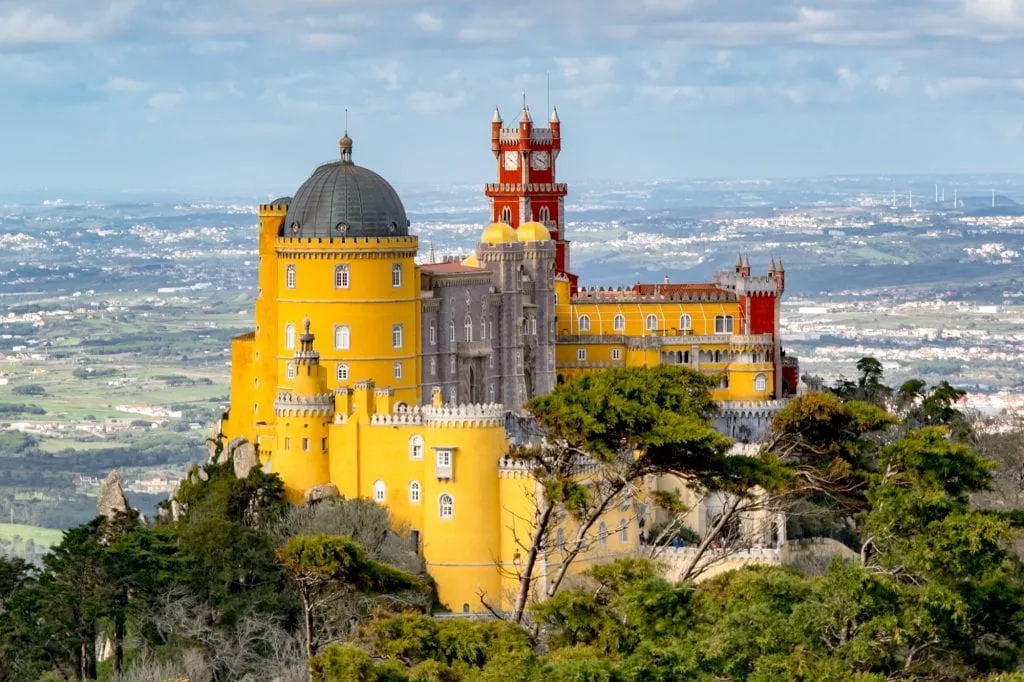
When you’re at the ATM, be sure to opt to have the transaction go through in the currency you’re receiving (ie, Euros), not your home currency (ie, USD).
Your bank’s conversion rate will undoubtedly be better than the ATM’s!
Also, avoid Euronet-branded ATMs like the plague: they’re infamous for their extremely high fees.
Instead, look for an ATM operated by a local bank.

How should I get from city to city in Europe?
This depends entirely on your itinerary, but here’s a very short, very general answer.
Trains are the most comfortable, and often the most expensive.
Buses are the least comfortable, frequently take the longest, and are generally the cheapest.
Rental cars have their place–there are some truly phenomenal road trips in Europe –but rarely make sense for first-time travelers, who tend to bounce between major cities that are well-connected by rail.

Flights are the most cumbersome, as they burn time dealing with things like security and getting to and from airports located outside of city centers, and simply aren’t comfortable.
However, flights can be surprisingly affordable compared to trains and are obviously the fastest option for covering very long distances.
When traveling Europe for the first time, we recommend traveling by train wherever it makes sense, and filling in the other options as necessary ( here’s our full guide to train travel in Europe ).
Our first multi-country trip to Europe included an overnight train, a daytime train, 2 rental cars, and a flight–in other words, you can definitely mix and match!

How can I use my phone in Europe?
If your phone is unlocked, the cheapest and easiest way to use your phone in Europe is to buy a local SIM card.
You can either do that on the ground once you land (there’s almost always a selection of helpful kiosks near the airport exit) or if you’d prefer not to worry about it once you arrive, you can buy one online before you go or even try out an eSIM card.
If your phone is not unlocked, or you just hate the idea of changing your SIM card, check with your carrier and see what they offer as far as international plans go.
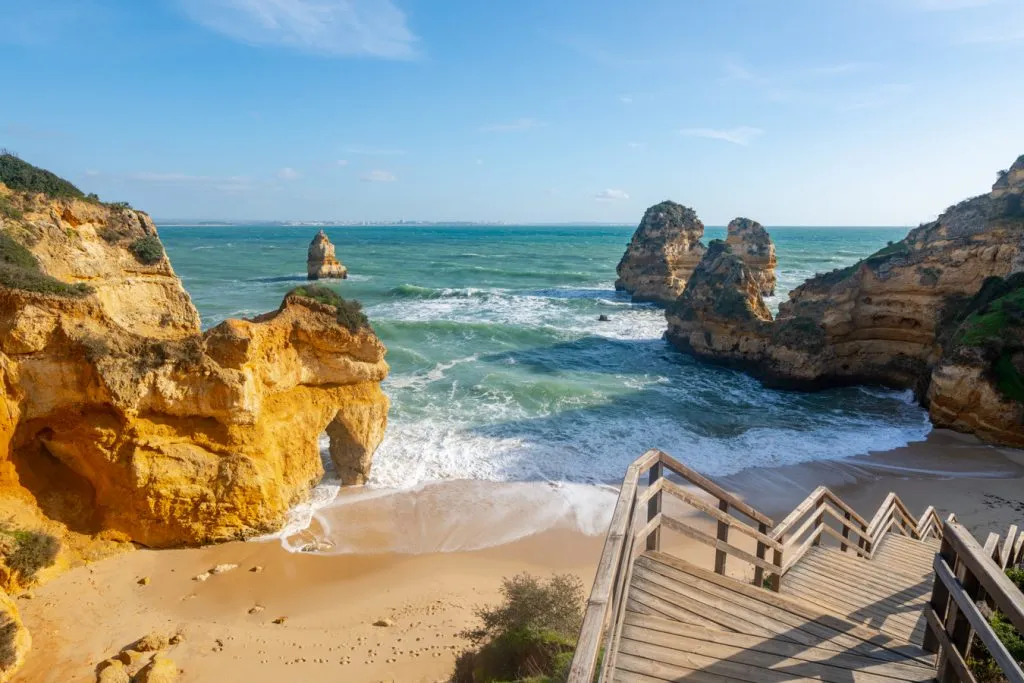
Will I need an adaptor for my electronics?
Most likely, yes!
Luckily, adaptors are cheap to buy and easy to carry–we recommend picking these up before you go.
Keep in mind that the UK and a few other countries ( Ireland , Malta ) use a separate plug from the bulk of the continent.
If you’re heading to a place that uses UK plugs, you’ll want these adaptors as well.

Do I need to be worried about pickpockets?
I wouldn’t go so far as the use the word “worried”, but aware, yes.
Pickpockets are a problem around the world in places where there are crowds, and that includes major European cities.
Barcelona, Rome, Paris, and Naples are examples of places that are particularly prone to pickpockets.
Watch your belongings carefully, especially near particularly crowded tourist attractions and in and around transportation hubs like train stations, and you will most likely be fine.

Very generally speaking, the closer to a world-famous landmark you are, the higher the risk of getting pickpocketed is in that place.
We have never been pickpocketed, but it does happen, even to experienced travelers.
We don’t choose to use a money belt anymore, and pickpockets certainly know about them, but if you would like another layer of protection, they’re an option (we used this one when we first started traveling).
An anti-theft day bag that can be locked and/or attached to a chair can help too, and we carry one everywhere ( we love this one ).
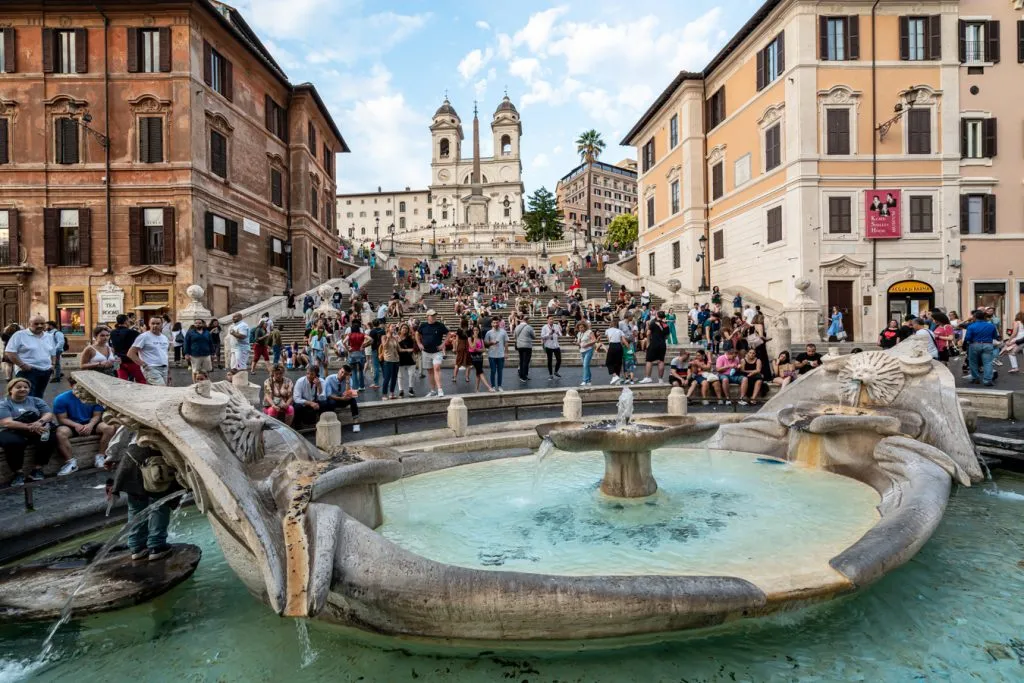
How severe is the language barrier?
It varies significantly, of course, but generally, it’s not nearly as difficult as first-time visitors to Europe worry before they arrive (ourselves included).
We recommend learning basic phrases in the language of the countries that you are planning to visit during your first European vacation, but this is usually more for good manners than out of necessity.
While you can absolutely find monolingual Europeans in virtually any country, especially in smaller cities and towns, the people employed in customer service roles and in the tourism industry in major cities–in other words, where most or all of your trip will likely take place–generally speak some English.

Can I drink the tap water in Europe?
Usually, yes!
We drink out of the tap just about anywhere in Europe.
In rare cases where the water is not safe to drink (usually in remote areas of southern and eastern Europe, or in very old buildings with iffy pipes), there will generally be large and obvious signs stating so.
If you’re worried about it, though, you can always ask your hotel concierge or host about it!
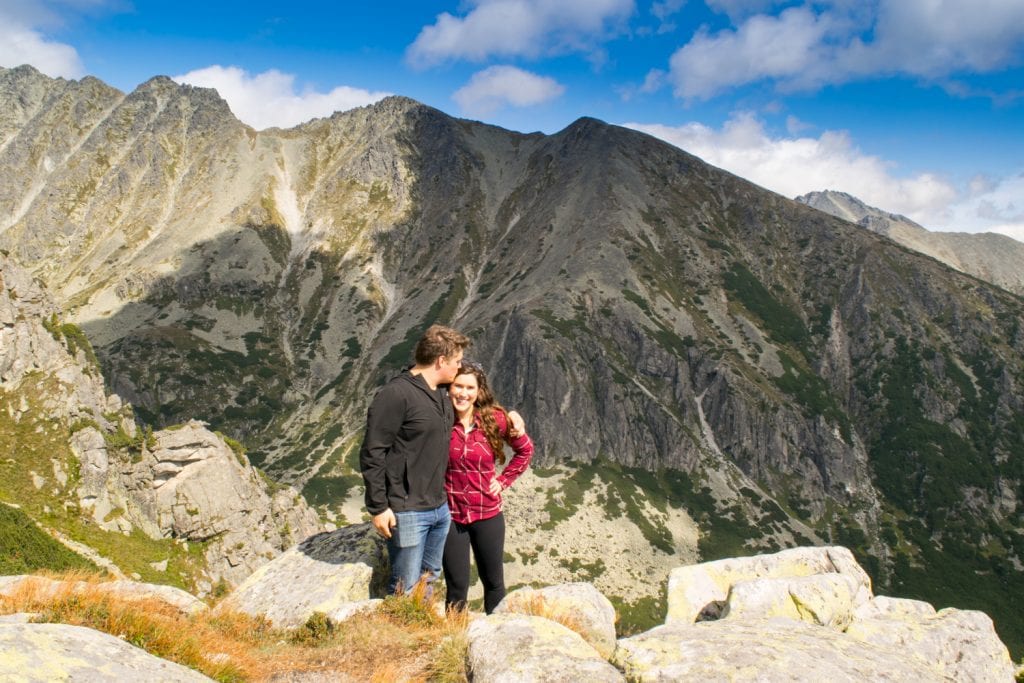
How far in advance should I book my trip?
For plane tickets, we recommend booking your trip as soon as you can commit to dates!
Not only will this allow you to have more time to plan and budget with a bit of structure, but it will also spread out your costs a bit more.
During peak seasons, like coastal locations in the summer or popular central European cities during the Christmas markets, you’ll want to book your hotels as far in advance as you can commit to them as well.

What’s your favorite country in Europe?
We get asked this all the time, and the answer is: we couldn’t possibly choose!
We definitely have a very special love for Italy –we’ve spent more time there than any other country outside the USA, traveled the country from north to south, know the travel scene there very intimately, and will continue to visit extensively for the rest of our lives.
And no, we haven’t discounted the possibility of living there one day, either!
However, simply naming Italy as our favorite would discount so much.
Like, for example, how much we adore hiking amongst the Alps in Switzerland, or waking up in picturesque bed and breakfasts in Ireland .

It skips over the joy of wandering through the art museums of Paris , admiring the rocky coastline of the western Algarve in Portugal, and jumping into the Adriatic Sea in Croatia .
Simply naming one favorite doesn’t leave room for sharing just how incredible it is to marvel at Neuschwanstein Castle in Germany, or devour Greek salads on Santorini … or so much more than I could include in this list.
And really, the answer to the question behind the question is this: as long as it’s somewhere that you’re desperate to visit, and you plan your trip well, it doesn’t really matter where you decide to go on your first trip to Europe.
Traveling to Europe for the first time is a magnificent and potentially (in our case, definitely) life-altering experience, and there are no wrong answers.
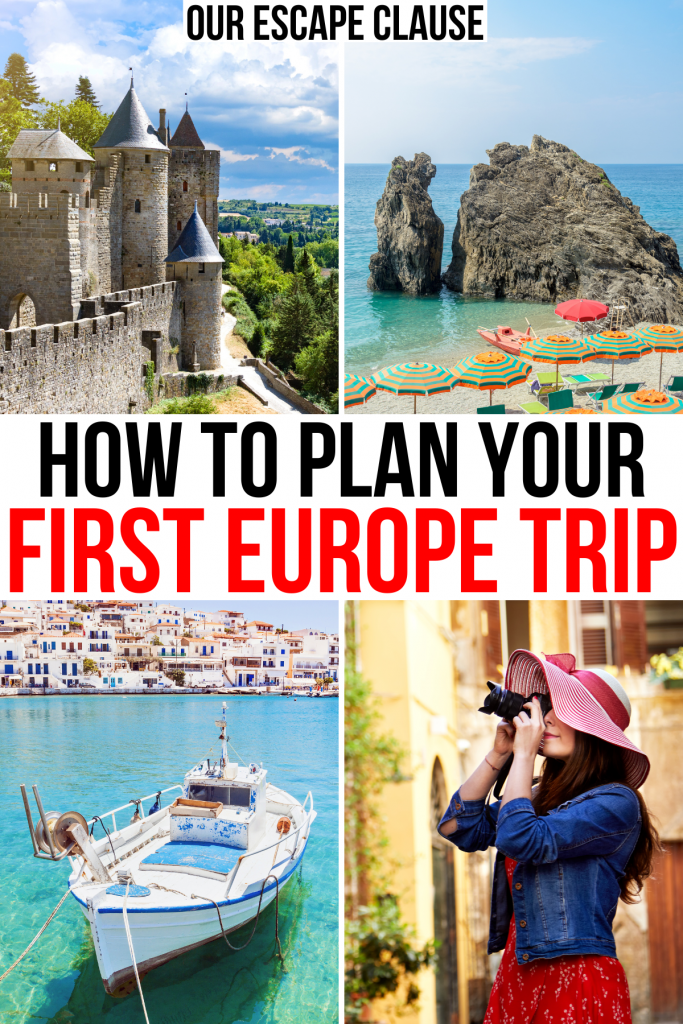
About Kate Storm

In May 2016, I left my suburban life in the USA and became a full-time traveler. Since then, I have visited 50+ countries on 5 continents and lived in Portugal, developing a special love of traveling in Europe (especially Italy) along the way. Today, along with my husband Jeremy and dog Ranger, I’m working toward my eventual goal of splitting my life between Europe and the USA.
2 thoughts on “Your 13-Step Guide to Traveling to Europe for the First Time”
Your blog is SO informative! Planning my first ever trip to Europe (Scotland in particular) and all the info you have is super helpful! 🙂
So glad to help, and I hope you have a fantastic trip to Scotland!
Leave a Comment Cancel reply
Nomadic Matt's Travel Site
Travel Better, Cheaper, Longer
Europe Travel Guide
Last Updated: April 18, 2024

From beautiful Paris to smoke-filled coffeeshops in Amsterdam, Oktoberfest to La Tomatina, Europe is a massive, diverse continent with an unlimited assortment of things to see and do. You won’t have any problem filling your time, whether you’re backpacking Europe for a few months on a budget or just spending a few weeks there on a well-earned vacation.
The continent boasts wonderful beaches, historical architecture, amazing wine, and tons of world-class festivals. Every country is incredibly different from the next too, providing limitless variety in what you do during your trip.
I first backpacked Europe in 2006 and was hooked immediately. I’ve been visiting every year since, have run tours around the continent, and even wrote a book on traveling in Europe . It’s a destination I love and never get tired of exploring.
This guide will give you an overview of Europe and the tips and tricks you need to start planning your trip. I’ve also written extensive travel guides to each country on the continent (linked below in this post) so you can get more in-depth information for your specific itinerary too!
Table of Contents
- Things to See and Do
- Typical Costs
- Suggested Budget
- Money-Saving Tips
- Where to Stay
- How to Get Around
- How to Stay Safe
- Best Places to Book Your Trip
- Related Blogs on Europe
Click Here for Country Guides
Top 5 things to see and do in europe.

1. Tour the Greek Islands
These islands are the mecca of summer beach fun and each is unique in its own great way. There’s Ios (beach party central with archeological ruins and awesome boat tours); Kos (ancient ruins and nature); Crete (Bronze Age ruins of Knossos, hiking, beaches, and wine), Santorini (iconic blue water, white buildings, and local wineries); Mykonos , (the upscale party island with beautiful beaches, villages, and sunsets), Naxos (best island in the Cyclades). Plus, Milos, Corfu, Lemnos, Zakynthos, and so many more! With hundreds of islands in the country, you can always find what you are looking for!
2. Ride the rails
Europe is famous for its international rail system. Rail passes like the Eurail Pass have been around forever and still make it very easy to get from country to country on a relatively small budget (and with lots of flexibility). Europe has some of the fastest trains in the world that travel up to an incredible 217 mph (350 kph). The whole continent is connected by trains and there’s a growing push for even more connections and long-distance, high-speed trains in order to reduce flying and help combat climate change. There’s nothing more quintessential than riding the trains in Europe and I encourage you to take as many trains as possible. It’s one of the best ways to see the continent.
3. Get lost in Paris
The “City of Lights” is everything people say it is. I fell in love with it the first time I stepped foot in Paris . The city is just magical. You have a ton of museums, cafes, jazz clubs, famous art, and beautiful architecture. I love just strolling around the streets of the Quartier Latin (Latin Quarter) or Montmartre neighborhood as it makes for a breathtaking day. Another one of my favorite things to do here is just sit in the Jardin des Champs-Élysées park and picnic like the Parisians. For something a bit different, check out the famous Catacombs and Paris Sewer Museum. With so much to offer in the way of culture, history, and gastronomy, it would take years to see everything here but you can still get a good feel of the city in a few days.
4. Go city hopping
There are so many amazing cities in Europe that we’d need a top 100 to list them all. Here are some of my personal favorites and must-see cities: London is rich in history, culture, and the famous Big Ben clock; Edinburgh is a vibrant medieval city with cozy pubs and a famous castle with a huge New Year’s Eve Party; Amsterdam has cozy coffee shops and canopied tree-covered canals; Berlin has a wild party scene, street art, and the Berlin Wall; Barcelona has tapas, beach, and unique Gaudi architecture; coastal Lisbon has colorful tiles, old tramcars, cobblestone streets and plenty of fresh seafood; Prague has a beautiful intact Old Town, incredible architecture and eclectic bars; Tallinn Estonia has beautiful medieval buildings with colorful roofs. Florence is a mecca for Italian Renaissance architecture, art history, and gelato; Stockholm mixes medieval architecture and modern art and design. Crisscross the continent, take in the culture, and enjoy all the historic cities!
5. Hit the Alps
Whether you go skiing in the winter or hiking in the summer, the Alps hold some of the most breathtaking views in all the world. You don’t even need to be an expert hiker because there are mountain trails for all levels and crystal-clear Alpine lakes. Check out the spectacular Eibsee trail loop in Bavaria at the foot of Die Zugspitze, Germany’s tallest mountain, for the clearest, multi-colored, sparkling lake you’ve ever seen. Or the Männlichen Kleine Scheidegg Panorama trail in Switzerland’s stunning green and snow-capped Alps. Or visit Italy’s Dolomites in South Tyrol for the scenic Seceda trail. The Alps have trails for every fitness level and in every season.
Other Things to See and Do in Europe
1. tour amsterdam.
I love Amsterdam so much that I lived here for a short period of time in 2006. Here cobblestone and brick streets weave around lovely canals as people ride their bikes to and fro. My favorite things to enjoy here are Amsterdam’s vibrant art and music scene and there are also a ton of interesting museums here like the Anne Frank House, FOAM, the history museum, and the hemp museum. Be sure you get out of the center into Jordaan and Oost with their wonderful outdoor cafes and fewer tourists. Also, a visit to Amsterdam wouldn’t be complete without a canal cruise to visit the many islands and there are many to choose from that include snacks and drinks, sunset cruises, live guided tours, and more.
2. Hang out in Barcelona
Barcelona is a city that goes 24 hours a day, 7 days a week. It truly could give NYC a run for the “city that never sleeps” title. Be prepared for late-night dinners and parties until dawn. Besides a great food and nightlife scene, there is a wonderful beach, tons of Gaudi architecture (including the fairytale-like Parc Güell, as well as the iconic Sagrada Familia , which has been under construction for over 100 years!), incredible food tours, one of the best history museums in the country, and lots of outdoor spaces. What I love about Barcelona is that when you’re ready to chill, you can wander around Parc de la Ciutadella and marvel at the majestic fountains, plant life, and buildings created from an ornate military fortress.
3. Visit Berlin
Hip and trendy Berlin is an energetic destination. It is one of Europe’s most affordable capital cities, with a vibrant music and art scene and a growing foodie movement. Be sure to spend some time learning about the city’s darker history via the many excellent museums, memorials, and landmarks. The East Side Gallery, a section of the Berlin Wall that’s now painted with murals, and the Memorial to the Murdered Jews of Europe are two especially powerful reminders of Germany’s past. For all periods of German history, don’t miss the Deutsches Historisches Museum (German Historical Museum) – it’s one of the best history museums in the world. Once you’ve had your fill of history, relax in Berlin’s many green spaces, from Tempelhof Field, the site of a former airfield and popular local hangout spot, to Tiergarten, a tree-covered former hunting ground for 17th-century aristocrats.
4. Drink beer at Oktoberfest
Oktoberfest is a must for anyone going to Germany at the end of September. While not a budget option since beers now cost 15 € a maß, I love the energy and friendly camaraderie this event inspires. For two weeks, millions of people from all over the world gather for lots of beer, excitement, music, and wild fun. Watching thousands of people sing together, raising quart-sized beer mugs for endless toasts, and enjoying the general party atmosphere makes you feel good about the world. (Or maybe that’s just the beer?) Just be sure to book your accommodation well in advance and be prepared to pay top prices for them. If you don’t have an outfit, don’t worry, there are plenty of shops even at the main train station where you can buy a Bavarian dirndl dress and men’s lederhosen.
5. Experience London
Get a taste of English culture in diverse London . The museums here are some of the best in the world (most are free) and include the Tate, the British Museum, the City Museum, the National Gallery, the Historical Museum. There’s no shortage of iconic sights here as well, with Big Ben, the House of Parliament, the London Eye, the Tower of London, Tower Bridge, and of course, Buckingham Palace. I love London’s diversity because of the countless international eateries with great food and wonderful pub culture, perfect for after a long day seeing the sights. Head to Brick Lane on the weekends for some amazing food and craft markets. I prefer Paris to London, but there is something sophisticated and fun about London. Just watch those pints — London is not a cheap destination!
6. Get outdoors in Scandinavia
My favorite region in Europe is Scandinavia. The quality of life here is high, the people are beautiful and friendly, and the cities are clean and historic. Cycling the cities, taking canal tours, hiking the vast forested areas, archipelago hopping, enjoying fika (a Swedish coffee break), and warming up in saunas are just a few of the popular activities that await you here. True, this area of Europe is not cheap, but there are plenty of ways to reduce your expenses. Don’t let the high prices scare you away. Highlights for me include Copenhagen , Stockholm , Gotland, Norway’s fjords, and Lapland in Finland .
7. Get enchanted in Prague
Prague has an amazing history and is one of the most beautiful and picturesque cities I’ve ever seen. Highlights include the 9th-century Prague Castle, the magnificent Charles Bridge (built in the 14th century and one of the oldest standing bridges in the world), the 10th-century old square with its iconic astronomical clock, and the winding Jewish Quarter. Even if you only have a few days there don’t miss the free walking tour which is one of my favorites in Europe and the best way to learn about the Old Town and the tragic history of the city that went from thriving Bohemian capital of art, music, and literature to part of the Iron Curtain after WWII. Some of my favorite gems here include the fantastic black light theater shows in 4D and the one-of-a-kind medieval dinner show in an old tavern complete with musicians and jugglers not to mention hearty food and drinks. During the weekends it heaves with people enjoying the bars, cheap beer, and delicious food so try to visit during the week (and in the spring or fall) to beat the crowds.
8. Relax on the French Riviera
Here, you can pretend to live the high life for a little bit. Have fun in the sun, relax on the beach, swim in azure blue water, hobnob with the rich and famous, and sail on (or gaze at) gigantic yachts. As for cities, Nice is nice with its palm-tree-lined promenade, old town, and many art museums. If you want to go see how the rich and famous live, spend an afternoon checking out Cannes to soak up some glamorous vibes on La Croisette where they hold the famous Cannes Film Festival. The kingdom of Monaco with its tiny streets, beautiful buildings, and world-famous casino is just a skip away too.
9. Enjoy the great outdoors in Interlaken
Located in the beautiful mountains of Switzerland, Interlaken is a gorgeous place to unwind with fantastic hiking, delicious hot chocolate, and plenty of outdoor sports. The area is full of natural attractions to explore, including the St. Beatus Caves (complete with a legendary dragon), the cascading 500-meter-high (1,640 feet) Giessbach Waterfalls, the Jungfraujoch mountain railway (which leads to the highest train station on the continent), and a plethora of lakes (hence the town’s name). It’s a good alternative to all the cities and museums. Interlaken is also a popular party destination for backpackers and other young travelers. By far, my favorite scenic and visually stunning trail was the Oberberghorn panoramic hike, where you can wander the green mountain ridge ogling the amazing views and the turquoise-blue Brienzersee.
10. Experience history in Rome
In this thriving historical city, you can’t walk two feet without stumbling over a ruin, making Rome a history buff’s dream. Its tiny streets are perfect for wandering as you explore the Colosseum, see the Forum and Palatine Hill, visit the Pantheon, spend time in Vatican City, admire the Spanish Steps, and toss coins into the famous Trevi Fountain. The skip-the-line tickets can definitely be worth it so you don’t waste time waiting outside attractions. Rome also has amazing food (it’s Italy, after all) and nightlife. Visit the Trastevere area for a taste of “local” Rome and chill bars. It’s my favorite area in the city because you feel like you’re in a small village in the middle of a big city.
11. Hike around the Cinque Terre
Cinque Terre is my favorite part of Italy. These five beautiful cliffside towns are perched near warm waters and beautiful olive and grape groves. There are wondrous and strenuous hikes in these hills; for a real challenge, take trail #8. Or just walk the coastline for something less difficult. Many activities here revolve around the coastline: kayaking, swimming, having a beach picnic or visiting the Technical Naval Museum. If you happen to be here in December or January, don’t miss the Nativity Manarola, the world’s biggest lighted nativity scene.
12. Tour Krakow
Krakow looks like it stepped out of a medieval postcard. It’s a hip, trendy, and youthful city that’s the center of education in Poland, meaning there are a lot of university students here. Most travelers come to party here (the vodka is cheap) but try to enjoy the city’s history and food besides just the bars. Walk the Royal Road through the Old Town to the 13th-century Wawel Castle, tour Schindler’s Factory (where Schindler saved over 1,200 Jews during World War II), and visit the sobering Auschwitz-Birkenau concentration camp. You can also take a fascinating day trip to the UNESCO World Heritage Wieliczka Salt Mine, a 13th-century mine with cavernous chambers, statues, chapels, chandeliers, and cathedrals all carved out of salt.
13. Visit the ruin bars in Budapest
The coolest nightlife in all of Europe is found in Budapest . Built in abandoned buildings, ruin bars feature funky art installations, repurposed furniture, and quirky decor. They are amazing, fun, and great places to meet locals, as people of all ages flock here. Open since 2001, Szimpla Kert is the original ruin bar and one of my favorites, along with Instant-Fogas Complex, which takes up an entire building and is actually many different bars in one. Don’t skip the ruin bars — they’re one of the most unique things about the city!
14. Explore Cornwall
The best part of England is outside London, yet unfortunately, not a lot of travelers leave London. Head west to the area of Cornwall for cheaper prices, welcoming locals, natural beauty, great hiking, rolling hills, plenty of medieval castles, and picturesque small towns. If you like biking, the Camel Trail from Bodmin to Padstow is worth the trip and you even pass by a local vineyard. It’s an easy way to spend a day (and it’s pretty flat so it’s not too hard to do.) Plus, I had the best fish and chips in Cornwall! Overall, it’s what you think of as “traditional England.”
15. Walk the Camino
El Camino de Santiago (The Way of Saint James) is an ancient pilgrimage route that stretches from France all the way across northern Spain. It is a 500 mile (800 km) trail that winds through incredible terrain, ending in Santiago de Compostela at the cathedral where St. James is supposedly buried. As a pilgrim, you get a “pilgrim’s passport” which allows you to stay in affordable pilgrim-only hostels, making this a surprisingly budget-friendly adventure. While it usually takes over a month to complete, you can just walk a section if you don’t have the time. To receive a “Compostela” (certificate of completion), you just need to walk the last 62 miles (100 km), which generally takes 4-5 days.
16. Throw tomatoes during La Tomatina
By far my favorite festival, the largest food fight in the world happens during the last Wednesday of August in Bunol, Spain. What started in 1945 as a local brawl has turned into a massive event drawing tens of thousands of people from all over the world. For about an hour, everyone throws tomatoes at each other, leaving streets ankle-deep in tomato juice. Afterward, everyone walks down to the river, cleans off, and then heads to the town square for sangria and music.
17. Find Dracula in Romania
Not a lot of people visit Romania but this underrated country in Eastern Europe has undiscovered yet picturesque medieval towns like Brasov (home to “Dracula’s castle”), Sighisoara, and Sibiu; gorgeous beaches on the Black Sea; and incredible hiking in the Fagaras Mountains — all at dirt-cheap prices. Other major sights include frescoed Byzantine monasteries, the steepled wooden churches of Transylvania, the hip university town Cluj-Napoca, the post-communist capital of Bucharest, and the Danube Delta, a huge nature reserve.
18. Drink whisky in Islay
Whisky has a long history on Islay , an island off Scotland’s west coast. It’s been made there since the 16th-century — first in backyards and then, starting in the 19th-century, in large distilleries. Over the years, whisky from the island came to be considered a specialty and was used to flavor a lot of other blends on the mainland. There are currently nine working distilleries on the island, all located along the island’s shores, with Laphroaig, Ardbeg, and Lagavulin being the most famous. Most distilleries here make single-malt Scotch, meaning that only one type of grain (barley) is used. My visit here was amazing and, even if you don’t like whisky, there are tons of good hikes and walks throughout this magnificent island.
19. Explore Iceland
Iceland is a magical country with majestic waterfalls, hidden hot springs around every corner, and sweeping vistas unlike anywhere else in the world. After my first visit, the country quickly became one of my favorite countries. With whale watching in the summer, the northern lights in the winter, and geothermal baths for soaking in year-round, there really is no bad time to visit! While Iceland’s main draw is the epic natural landscapes, it’s worth spending a couple of days in Reykjavik with its café culture, artsy feel, and brightly colored wooden row houses.
20. Sail the Croatian coast
With calm winds, short distances, a coastline littered with over 1,000 islands, and countless historical sites, Croatia is one of the world’s best sailing destinations. If you can, go during the shoulder season when you can find some great deals. Plan to stay at least a couple of days on one of the islands, with the most popular being Brac, Hvar, Krk, Cres, and Lošinj. However, don’t be afraid to get off the beaten path and explore some of the lesser-known islands such as Silba, Vis, and Lastovo. If you want to splash out and spend a week partying on a yacht, check out The Yacht Week, which hosts week-long parties, complete with DJs, from May-September. You can book a full boat to share with friends or just a cabin if you’re traveling solo. Prices start at 5,250 HRK per person and go up to 9,300 HRK.
21. Explore the Balkans
While the Balkans have become more popular with backpackers in recent years, it’s still largely overlooked by most budget travelers, despite being an extremely budget-friendly region. The Balkan peninsula is home to great (and again, overlooked) wine, beautiful medieval towns like Kotor and Mostar, stunning mountainous landscapes, beautiful pebble beaches, coffee culture, fresh, hearty yet inexpensive food, and museums covering the area’s history, including the most recent turbulent events of the early 1990s. I especially loved my time in Albania . Don’t miss the beautiful beaches in Ksamil, nicknamed the “Maldives of Europe’ as well as the mountain village of Gjirokastër, which was occupied by Romans, Byzantines, and Ottomans. The Balkans have so much to offer for every budget and every country has its unique cultural flavor.
22. Take a wine tour in the Loire Valley
Located in central France, the picturesque Loire Valley is a UNESCO World Heritage site and stretches 280 kilometers (174 miles) along the Loire River. One of the major wine-producing regions of France, the area is home to some of the best wines in the world, with over 1,000 vineyards open to the public. Even those who don’t drink wine will enjoy the beautiful small towns, great food, and the region’s over 300 impressive chateaux. I loved the medieval Chenonceau Castle and Chateau Villandry and the small villages like Saint-Florent-le-Vieil. Spring and Autumn are my favorite times to visit because you can go biking and do outdoor activities when it’s not too hot and there are fewer people. It’s an area not to be missed.
23. See Fado in Portugal
Fado is an important musical tradition in Portugal , originating in Lisbon and stretching back some 200 years. The word “fado” likely stems from the Latin word for fate, and it’s very haunting, poetic, and emotional music. Most of the songs follow themes of loss and mourning, and the music was popular with the working class (especially sailors). Performances normally take place in restaurants during dinner. In Lisbon, head to Clube de Fado, Tasca do Chico, Parreirinha de Alfama, or Senhor Vinho.
24. Tour green Slovenia
Slovenia is one of Europe’s least-visited destinations, which is mind-blowing to me because it’s an amazing place to visit. Slovenia offers all the beauty of Western Europe but at a fraction of the cost and with a fraction of the crowds. Perfect for outdoor adventure lovers, Slovenia offers rugged mountains, untouched landscapes, fantastic ski resorts, plentiful wine, sprawling cave systems, incredible food, and postcard-perfect lakes, such as the famous Lake Bled with its castle on an island. I loved Piran, Slovenia’s often overlooked coastal Venetian-style harbor town that was actually founded 3000 years ago. Stroll around its beautiful windy cobble-stoned streets, beautiful plazas, and take advantage of the many affordable restaurants right on the water. Make sure to also spend a few days in the country’s capital, Ljubljana, known as one of the continent’s greenest and most livable cities. Take a river cruise to see the city and enjoy the friendliness of the locals.
For more information on specific countries in Europe, check out the guides below:
- Albania Travel Guide
- Austria Travel Guide
- Belgium Travel Guide
- Belarus Travel Guide
- Bosnia & Herzegovina Travel Guide
- Bulgaria Travel Guide
- Czechia Travel Guide
- Croatia Travel Guide
- Denmark Travel Guide
- England Travel Guide
- Estonia Travel Guide
- Finland Travel Guide
- France Travel Guide
- Germany Travel Guide
- Greece Travel Guide
- Hungary Travel Guide
- Iceland Travel Guide
- Ireland Travel Guide
- Italy Travel Guide
- Latvia Travel Guide
- Lithuania Travel Guide
- Malta Travel Guide
- Moldova Travel Guide
- Montenegro Travel Guide
- Netherlands Travel Guide
- Norway Travel Guide
- Portugal Travel Guide
- Poland Travel Guide
- Romania Travel Guide
- Scotland Travel Guide
- Slovakia Travel Guide
- Slovenia Travel Guide
- Spain Travel Guide
- Sweden Travel Guide
- Switzerland Travel Guide
- Ukraine Travel Guide
Europe Travel Costs

Accommodation – Accommodation prices vary greatly by region. In Western Europe, hostel dorm rooms cost between 25-45 EUR per night, depending on the room’s size and the popularity of the hostel. I stayed in a 6-bed dorm in Berlin for 20 EUR, while the same one would have cost me around 45 EUR in Paris. A room in Paris costs on the higher end and a room in cheaper Athens costs on the lower end.
In Eastern Europe, hostel dorm rooms cost between 10-15 EUR per night depending on the size of the dorm room and the popularity of the hostel. The further east you go, the cheaper it gets. Expect to pay around 30-60 EUR per night for a private room that sleeps two.
In Scandinavia, hostel dorm beds cost around 25-45 EUR, while private rooms are 65-80 EUR. Budget hotels start around 85 EUR.
Most accommodations offer free linens, free Wi-Fi, and a lot offer free breakfast, but it’s important to check specific websites for exact amenities.
Campsites cost between 10-15 EUR per night for a basic plot for two without electricity.
Food – Food traditions in Europe run deep, stretching back centuries to become integral parts of each country’s culture. From baguettes in France to tapas in Spain, from hearty Eastern European stews and goulash to the fresh vegetables and olive oils of the Mediterranean, European cuisine varies as much as the countries themselves. Food prices differ greatly across the continent, so check individual country guides for specifics.
But no matter where you are, even in the more expensive countries, finding places to eat within your budget is easier than you might think. Throughout Western Europe, you can find small shops, street food stalls, or food trucks where you can get sandwiches, gyros, kebabs, slices of pizza, or sausages for between 3-7 EUR. These shops are most often found in train stations, bus stations, and main pedestrian areas, and offer cheap food alternatives that can have you eating on 12-17 EUR per day. Fast food (think McDonald’s) costs around 7-10 EUR for a combo meal.
Turkish, Middle Eastern, and Vietnamese eateries abound in Germany, while Indian food is incredible and everywhere in the United Kingdom. Meals at these restaurants usually cost between 8-12 EUR.
Restaurant meals in casual, traditional eateries generally cost around 13-25 EUR for a main dish and drink. Food is much cheaper in the east than in the west, and in the west, northern regions like Scandinavia and the UK are more expensive than southern countries like Spain, Portugal, and Italy.
In Eastern Europe, even if you are eating out for all your meals, you can still get by on a food budget of as little as 15 EUR per day.
For drinks, a pint of beer is 2-5 EUR, a glass of wine is 2-7 EUR, a cappuccino is 2-5 EUR, and cocktails range from 6-14 EUR.
If you eat out, do so at lunch and get the prix-fixe menu (two-course or three-course set menu). Restaurants offer this set menu during lunch, and with prices between 10-20 EUR, it’s a way better deal than the regular dinner menu. You can also get affordable lunches at outdoor markets. So many European cities have huge fresh food markets throughout town.
You can cook your own food for around 45-65 EUR per week. This gets you basic staples like rice, pasta, seasonal produce, bread, and some meat. You can save money by shopping at discount supermarkets like Profi, Lidl, Aldi, and Penny Market.
If you want to save big money on meals, head to one of the markets, pick up some cheese, wine, bread, meats, or anything else, and go to the park for a picnic. (Or grab a sandwich for later!) You’ll find the locals doing the same thing, and it’s one of the cheaper ways to get a true taste of local food.
Backpacking Europe Suggested Budgets
Prices for travel in Europe vary greatly depending on how far north, east, south, or west you travel. If you stick to the budget accommodations, food, and tours listed here and use all my tips on saving money, you need about 65-110 EUR per day in Western Europe, 40-50 EUR in Eastern Europe, and about 85-130 EUR in Scandinavia.
Those numbers reflect a traveler who stays in hostels, cooks some meals and eats out cheaply, enjoys a few drinks, and sticks to free and cheap activities like hiking, walking tours, and enjoying nature. This is your typical backpacker budget. You aren’t going to have a fancy time, but you aren’t going to want for anything either.
However, by getting tourist cards and rail passes, avoiding flights, occasionally Couchsurfing or camping, cooking all your meals, and not drinking, you can travel a lot cheaper. On this budget, you could do Western Europe on 35-45 EUR per day, Eastern Europe on 20-25 EUR, and Scandinavia on 50-65 EUR. That would require you to take a train or a bus or hitchhike everywhere, skip most museums, and limit how often you go out.
Generally, the suggested daily budget for Europe is 80-120 EUR. You can use the chart below to get an idea of how much you need to budget daily. Keep in mind these are daily averages – some days you’ll spend more, some days you’ll spend less (you might spend less every day). We just want to give you a general idea of how to make your budget. Prices are in EUR.
Europe Travel Guide: Money-Saving Tips
Individual country guides have more specific information on how to save money in them but here are some general tips on cutting your costs while you explore Europe:
- Picnic – This continent has a lot of little shops where you can buy pre-made sandwiches or ingredients to make your own. Many supermarkets have delis as well where you can get food to go. Buy some food, eat outside, and watch the city and its people go by. It’s a much more enjoyable and cheaper way to eat.
- Eat local and cheap – Not into picnicking? Eat at local sandwich shops, pizza parlors, Maoz, Wok to Walks, and outdoor street vendors. Avoiding restaurants and eating at a lot of the local “grab n’ go” places gives you a taste of the local cuisine at a much cheaper price. If you’re really on a budget, use your creative cooking skills to prepare meals at the hostel as well.
- Stay with a local – Hostels can add up really quickly. If you don’t have any friends with whom you can stay, consider using Couchsurfing , which connects you with locals who let you stay with them for free. Plus, they tend to also have meetups to meet other locals and travelers. It’s a great way to save on accommodation and meet a local who can share their insider tips and advice.
- Camp in a garden – A very good camping service specific to Europe is Campspace , which allows you to pitch a tent in someone’s backyard for free or for a small fee (around 10-20 EUR). All of the garden owners have profiles that tell you what services and facilities they offer. Also, many countries allow wild camping (like Sweden), which can save you a fortune if you have a tent.
- Take the bus – Budget bus companies like Flixbus can take you across the continent for cheap. I personally feel it’s best for day travel as sitting up for an overnight bus isn’t really ideal for sleeping. It isn’t glamorous, but with tickets starting at 5 EUR, you really can’t complain!
- Get a Rail Pass – Eurail Passes have saved me hundreds of dollars. If you are traveling far distances and through many countries, they are a great deal.
- Take the free city tours – One of the great things about Europe is that you can find free walking tours in all the major cities. They can be a great way to see the city attractions, take in some history, and learn your bearings without spending any money. Just make sure to tip your guide at the end!
- Plan accordingly – Plan your trip around Europe so you avoid doubling back. Transportation is a big expense so proper planning can save you a lot of money (and time). Go in a straight line or a loop. Booking your accommodation ahead helps you save as well since cheap, good places unsurprisingly get reserved first. One thing I’ve learned is that waiting until the last minute means you get stuck with expensive places or cheap places no one wants.
- Fly cheap – If you know where you are going and a train won’t do, try to book flights early. You can often get round trip fares for as little as 5 EUR from many of the European discount airlines like Ryanair or Wizz. Many capital cities have smaller airports farther from the city with ‘inconvenient’ times but cheaper fares. Keep in mind you might need to factor in an early morning Uber or taxi if the busses aren’t running and you have an early flight!
- Drink less – Those 5 EUR beers add up. Hit happy hours or pick and choose when you party. Hostel bars are a good place to get cheap drinks or buy your alcohol at the supermarket. Plus, in Europe, it’s legal to drink outside in parks, plazas, by the lakes or rivers. You’ll find you can save a lot of money by not going to bars and clubs. Partying your way across the continent will destroy your bank balance in no time.
- Get a city tourist card – Many local tourism offices sell a tourism card for all their attractions, tours, and restaurants. This card gives you free entry and substantial discounts on all the attractions and tours in a city, free local public transportation (a huge plus), and discounts at a few restaurants and shopping malls. They save a ton of money. If you plan on doing a lot of sightseeing, get one of these cards.
- Rideshare – If you’re flexible in your schedule, use the ridesharing service BlaBlaCar to catch rides with locals between cities (or countries) by paying a small fee. It’s like Airbnb but for rides. I used this service in Switzerland and, not only did I save a lot of money, but I got to meet interesting people and learn about local culture and life. Drivers are verified and it’s perfectly safe, though sometimes rides cancel at the last minute (which is why you need to be flexible). Check their ratings first and try to use rides where the person has done many trips.
- Bring a water bottle – The tap water is safe to drink in most of Europe, so bring a reusable water bottle to save money and reduce your plastic use. LifeStraw is my go-to brand as their bottles have built-in filters to ensure your water is always clean and safe.
- Get a HostelPass – HostelPass is a discount membership for hostels in Europe. Members get 10-20% off select hostels around Europe, as well as perks like free breakfast or free drinks. There are discounts on tours and activities too. It’s a great way to save money if you’re bouncing around Europe as they have hostels in 18 countries around the continent.
Where to Stay in Europe
Europe has a ton of budget accommodation options. The individual country and city guides have tons of recommendations but here’s a short list of some of my favorite budget hostels and hotels around Europe:
- The Flying Pig (Amsterdam, The Netherlands)
- Hotel 54 (Barcelona, Spain)
- Generator Hostel (Copenhagen, Denmark)
- Harcourt Hotel (Dublin, Ireland)
- Castle Rock (Edinburgh, Scotland)
- Ios Palm Pansion (Ios, Greece)
- Greg and Tom’s Party Hostel (Krakow, Poland)
- Largo da Sé Guest House (Lisbon, Portugal)
- Sophie’s Hostel (Prague, Czech Republic)
- The Yellow (Rome, Italy)
- City Backpackers (Stockholm, Sweden)
How to Get Around Europe

Public transportation – Transportation around most European cities is by tram, subway, or bus. Prices are typically around 2 EUR for a one-way ticket in Western Europe and closer to 1 EUR in Eastern Europe. Most large cities also have day passes available that offer unlimited public transportation. These passes are usually 5-12 EUR per day.
In large cities with international airports, there is usually a bus or train available that ferries travelers from the downtown core to the airport. Expect to pay around 5-15 EUR to get to/from the airport.
Bus – Buses are not quite as comfortable as Europe’s trains, although certain lines do have great amenities (like roomy seats and Wi-Fi). While buses are not the most efficient way to travel around the continent, they’re certainly dependable, reliable, and cheap. You can find last-minute rides for as little as 5 EUR. A route from Berlin to Munich is about 25 EUR, while Paris to Bordeaux can be as low as 10 EUR. Longer routes, like Amsterdam to Copenhagen, start at around 47 EUR.
Each country has its own national bus service, but some lines also take you long distances internationally. Megabus and Flixbus (which now owns Eurolines) are the most popular companies.
Train – Train travel is a great way to see Europe. Intercity train prices vary wildly from country to country, depending on whether you take the slow train or a high-speed train and how far in advance you book. For example, a high-speed train from Berlin to Munich costs around 38-60 EUR, Bordeaux to Paris is about 50-85 EUR, and Madrid to Barcelona ranges from 45-85 EUR. Non-high-speed trains and other intercity lines are a lot cheaper, generally costing about 40-50% of the price of high-speed trains. Eastern Europe inter-country trains usually cost between 45-100 EUR when the ticket is booked last minute. Short train rides of 2-3 hours within countries cost about 27 EUR.
To find routes and prices for trains around Europe, use Trainline .
You may also want to consider getting a Eurail Pass , which allows travelers to explore Europe by providing a set number of stops in a specific time period. These passes are continent-wide, country-specific, or regional. It can potentially save you hundreds of dollars.
Ridesharing/Car sharing – If your schedule is flexible, use a ridesharing service and catch rides with locals between cities (or countries). Drivers are verified and it’s perfectly safe. BlaBlaCar is the most popular.
If you’d rather rent a car yourself and find passengers to share a ride with, use Discover Cars to find the best car rental prices.
Flying – Budget airlines are so prolific that competition helps keep fares low. You can often find tickets where the fare is just 5 EUR round-trip! Companies like EasyJet, Ryanair, Wizz, and Vueling offer mind-blowingly cheap flights throughout Europe. Book at least a month early to scoop up great deals.
Make sure that the airport they fly into isn’t too far out of your way (transportation from the secondary airport sometimes negates the savings from using the budget airline itself).
Keep in mind that you’ll have to pay to check your baggage on these cheap flights. It costs about 25-39 EUR for one checked bag. If you wait to pay for your luggage at the gate, you end up paying almost double. Travel carry-on only to avoid this added cost.
Hitchhiking – Hitchhiking in Europe is very safe, but it’s not for everyone. Hitching is quite common around the continent and I’ve met a number of travelers who have done it (I, myself, traveled this way in Bulgaria and Iceland). Some countries are very supportive (Romania, Iceland, Germany) while others may be a bit more time-consuming (Italy, Spain). HitchWiki is the best website for hitchhiking info.
Here are my suggested articles for how to get around Europe:
- 7 Cheap Ways to Travel Across Europe
- Are Eurail Passes a Giant Scam or Do They Save You Money?
- The Ultimate Guide to Finding Cheap Flights
When to Go to Europe
There’s no wrong time to visit Europe. Peak season is summer, when Europe gets crowded and August is the time most European families are at the beach so everything becomes more crowded and expensive. But the overall atmosphere and weather are great during this time, so it’s still worth visiting during peak season (just book your accommodation in advance — especially in August). Keep in mind it’s much hotter in summer so if you like AC, be sure to check that your hostel or hotel has it before you book. You can expect the most crowds in Western Europe. For this reason, I feel summer is a great time to visit the Balkans and the Baltics because many people head to the beaches in Spain, France, Italy, Croatia, and Greece.
Shoulder season is spring and fall (April-May and September-October). It’s still warm during this time but there aren’t as many crowds and prices are cheaper. This is my favorite time to visit hotspot places like Spain, Croatia and Greece, where it’s still hot enough to swim in the sea but you have way more room on the beach. It’s also a good time to go hiking in the Alps in Germany, northern Italy, Slovenia and Switzerland because it’s cooler during the day so you’re much less sweaty on the mountain without shade. The weather is good, the crowds are smaller, and the prices lower.
Winter is from November to February but in much of Central Europe, it’s wet and cold until March or April. It gets cold, even as far south as it gets (like Greece). On the other hand, the Christmas season has Christmas markets and festivals galore! Even if it’s cold, this is a cultural tradition you can’t miss and why I love Europe in December. There is hot mulled wine, sweets, and plenty of hot snacks, which vary by country. One of my favorites is Prague because the Old Town Square is lit up with a gigantic tree with aromas of crispy cinnamon pastries and mulled wine. Berlin takes their Christmas markets very seriously, so there are around 80 different markets with special themes.
Winter is fantastic in Europe for skiing and snowboarding but it doesn’t have to break the bank if you plan carefully. While Switzerland and France are probably the most famous, they are also expensive, but there are plenty of budget winter options.
How to Stay Safe in Europe
Europe is very safe for backpacking and solo traveling, even if you’re traveling solo, and even as a solo female traveler. Violent crimes against tourists are very rare. In fact, some of the safest countries in the world are in Europe. (I wrote a whole article about how Europe is safe to visit right now .)
That said, there are scams and petty crimes you should watch out for, especially around popular tourist landmarks. The most important thing to be aware of is pickpockets in crowds and on public transportation. Zip your bags and don’t put your mobile phone in a jacket pocket where someone could quickly take it. This should be obvious but don’t flash your money to let everyone know you have a huge wad of cash.
When choosing a hostel, look for ones with lockers. It’s always a good idea to carry around a padlock or combination lock. Most hostels are safe and travelers respect each other and I’ve rarely seen things happen to people’s valuables. Nevertheless, I always think that prevention is better.
As anywhere, the standard precautions apply (never leave your drink unattended at the bar, never walk home alone intoxicated, etc.). When at the bar, always keep an eye on your drink. Avoid walking home alone at night if you’re intoxicated.
For female travelers in particular, it’s always a good idea to have a bit of extra money on you just in case you need to take an Uber or taxi back by yourself so you don’t take unnecessary risks to save money. If you’re using apps to date people while traveling, please use common sense and meet in public places. Since I’m not a female traveler, please check out the numerous female bloggers who have first hand knowledge of this.
If you’re worried about scams, you can read about common travel scams to avoid here.
If you rent a vehicle, don’t leave any valuables in it overnight. Break-ins are rare, but it’s always better to be safe than sorry. Be aware that the UK drives on the left and that most rental cars in Europe will have manual transmissions unless you request otherwise.
When hiking, always bring water, sunscreen, and bandaids or foot plasters. There is nothing worse than being halfway up the mountain with a blister and nothing you can do about it!
Likewise, when at the coast, don’t forget not only to wear sunscreen! I can’t tell you how many times I’ve seen people get burnt to a crisp the first day. Be sure to check the weather before you depart and dress accordingly.
If you do experience an emergency, dial 112 for assistance.
Always trust your gut instinct. Make copies of your personal documents, including your passport and ID. Forward your itinerary to loved ones so they know where you are.
The most important piece of advice I can offer is to purchase good travel insurance. Travel insurance will protect you against illness, injury, theft, and cancellations. It’s comprehensive protection in case anything goes wrong. I never go on a trip without it as I’ve had to use it many times in the past. You can use the widget below to find the policy right for you:
Europe Travel Guide: The Best Booking Resources
These are my favorite companies to use when I travel. They consistently have the best deals, offer world-class customer service and great value, and overall, are better than their competitors. They are the companies I use the most and are always the starting point in my search for travel deals.
- Skyscanner – Skyscanner is my favorite flight search engine. They search small websites and budget airlines that larger search sites tend to miss. They are hands down the number one place to start.
- Hostelworld – This is the best hostel accommodation site out there with the largest inventory, best search interface, and widest availability.
- Booking.com – The best all around booking site that constantly provides the cheapest and lowest rates. They have the widest selection of budget accommodation. In all my tests, they’ve always had the cheapest rates out of all the booking websites.
- HostelPass – This new card gives you up to 20% off hostels throughout Europe. It’s a great way to save money. They’re constantly adding new hostels too. I’ve always wanted something like this and glad it finallt exists.
- Get Your Guide – Get Your Guide is a huge online marketplace for tours and excursions. They have tons of tour options available in cities all around the world, including everything from cooking classes, walking tours, street art lessons, and more!
- The Man in Seat 61 – This website is the ultimate guide to train travel anywhere in the world. They have the most comprehensive information on routes, times, prices, and train conditions. If you are planning a long train journey or some epic train trip, consult this site.
- Rome2Rio – This website allows you to see how to get from point A to point B the best and cheapest way possible. It will give you all the bus, train, plane, or boat routes that can get you there as well as how much they cost.
- FlixBus – Flixbus has routes between 20 European countries with prices starting as low 5 EUR! Their buses include WiFi, electrical outlets, a free checked bag.
- SafetyWing – Safety Wing offers convenient and affordable plans tailored to digital nomads and long-term travelers. They have cheap monthly plans, great customer service, and an easy-to-use claims process that makes it perfect for those on the road.
- LifeStraw – My go-to company for reusable water bottles with built-in filters so you can ensure your drinking water is always clean and safe.
- Unbound Merino – They make lightweight, durable, easy-to-clean travel clothing.
- Top Travel Credit Cards – Points are the best way to cut down travel expenses. Here’s my favorite point earning credit cards so you can get free travel!
GO DEEPER: Nomadic Matt’s In-Depth Budget Guide to Europe!

While I have a lot of free tips on Europe, I also wrote an entire book that goes into great detail on everything you need to plan a trip here on a budget! You’ll get suggested itineraries, budgets, even more ways to save money, my favorite restaurants, prices, practical information (i.e. phone numbers, websites, prices, safety advice, etc etc), and cultural tips.
I’ll give the insider view of Europe that I got from years of traveling and living here! The downloadable guide can be used on your Kindle, iPad, phone, or computer so you can have it with you when you go. Click here to learn more about my book on Europe!
Europe Travel Guide: Related Articles
Want more tips for your trip? Check out all the articles I’ve written on Europe travel and continue planning your trip:

The 6 Best Hotels in Florence

The 7 Best Hotels in Madrid

The 6 Best Hotels in Vienna

The Best Walking Tours in Barcelona

How to Be a Digital Nomad in Europe

The Best eSIM for Traveling Europe
Get my best stuff sent straight to you, pin it on pinterest.
- Where To Stay
- Transportation
- Booking Resources
- Related Blogs
ADVENTURE BY RAIL IN EUROPE
Sustainable travel in europe, europe invites the curious.
We use cookies and Inspectlet. By using this website, you accept the use of cookies which helps us provide you more interesting and adapted content.
The Official Travel Portal of Europe
Experience europe through our stories, discover europe by your interests, arts & culture, discover europe.
- Netherlands
- Switzerland
- United Kingdom
Adriatic Coast
Atlantic coast, balkan peninsula, baltic states, carpathians, central europe, iberian peninsula, islands & archipelagos, mediterranean.
- Outermost Regions
Rhine Valley
- Czech-Republic

Adventure by rail in Europe

Solo Female Travel in Europe
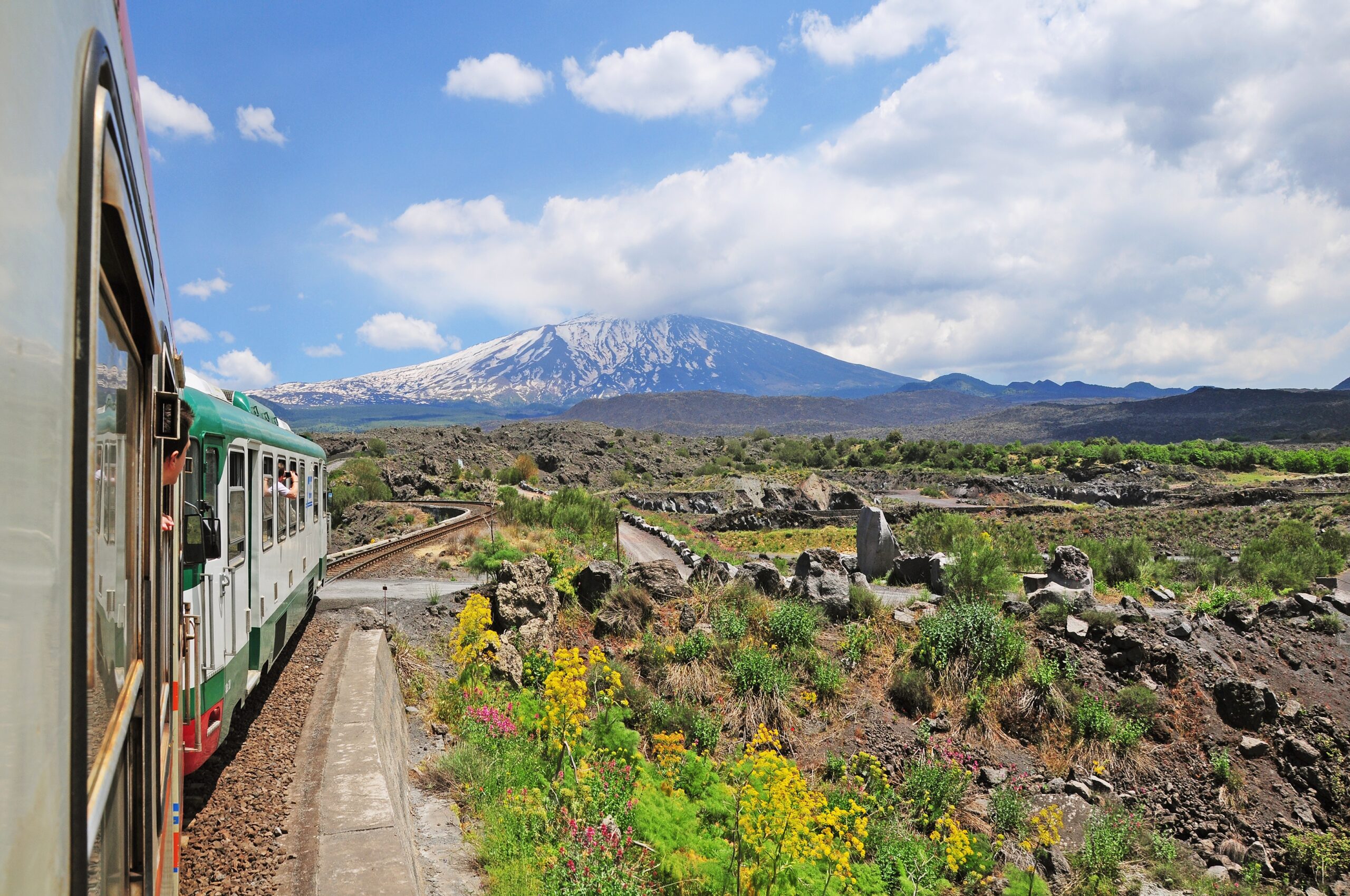
Extraordinary train journeys

Green Spain by tourist train

Poland by train

Serbia’s movie-set landscape

Trails and rails in Luxembourg
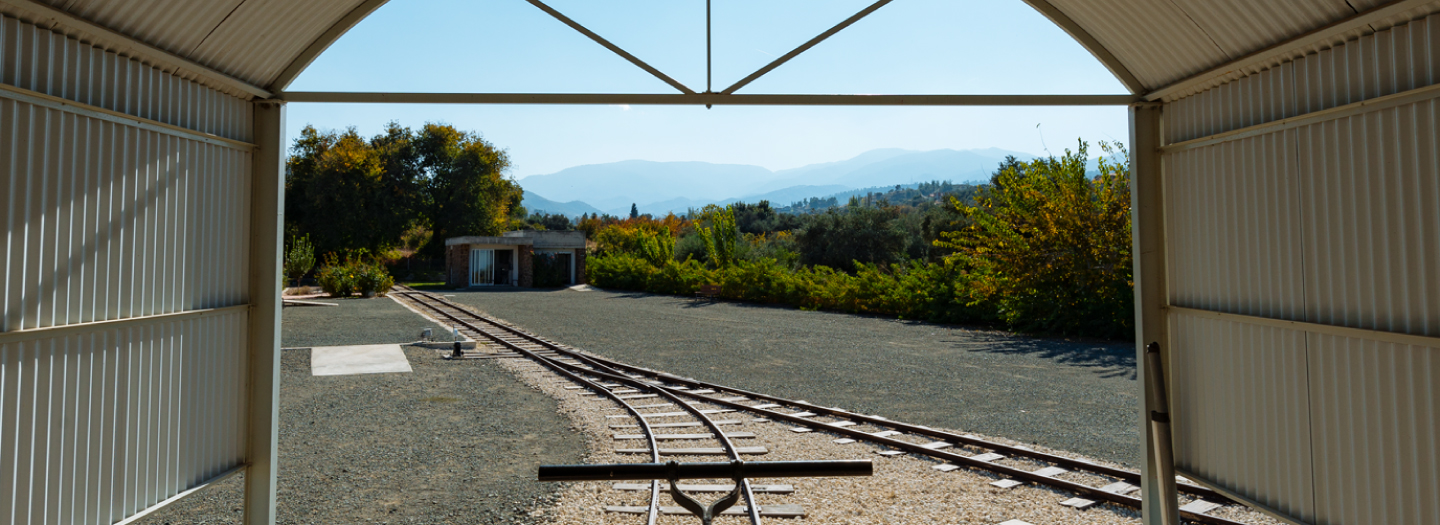
Cyprus’ railway heritage
Tips to plan your travel to europe, traveling around europe, your guide to passenger rights while traveling in europe, the ultimate guide to european currencies, how to stay safe while traveling in europe, want to know more about europe.
Sign up to our newsletter here:
Log in with user name:
Log in with social media:
Get FREE email communications from Fodor's Travel, covering must-see travel destinations, expert trip planning advice, and travel inspiration to fuel your passion.
- Destinations

Europe Travel Guides
Top destinations guides.

- Alsace-Lorraine

- The Dolomites

- Bordeaux and the Wine Country

- The Black Forest

- The Italian Riviera
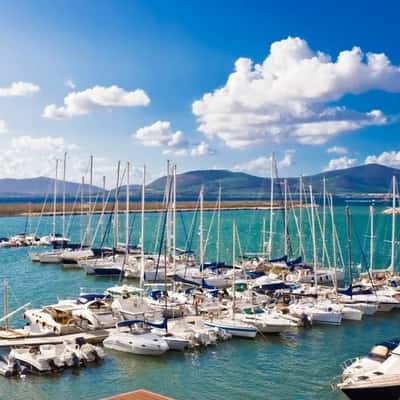
- Canary Islands

- Amalfi Coast
RECOMMENDED FODOR'S VIDEO
All europe destinations.
- Carinthia and Graz
- Eastern Alps
- Innsbruck, Tirol, and Vorarlberg
- Salzkammergut
- Vienna Woods, Lake Neusiedler, and the Danube River
- Antwerp and the Northeast
- Bruges and the Coast
- Ghent and the Leie
- The Meuse and the Ardennes
- Western Wallonia
- Belogradchik
- Black Sea Coast
- Veliko Tarnovo
- Central Dalmatia
- Northern Dalmatia
- Southern Dalmatia
- Zagreb and Environs
- Northern Cyprus
- Petra tou Romiou
- Troodos Mountains
- Day Trips from Prague
- Southern Bohemia
- Western Bohemia
- Faroe Islands
- Funen and the Central Islands
- Side Trips from Copenhagen
- Bath and the Cotswolds
- East Anglia
- The Lake District
- Manchester, Liverpool, and the Peak District
- The Northeast
- The Southeast
- Stratford-upon-Avon and the Heart of England
- The Thames Valley
- The West Country
- The Lakelands
- Mariehamn and the Åland Islands
- Side Trips from Helsinki
- Southwestern Coast and the Ålands
- The Basque Country, Gascony, and Hautes-Pyrenees
- Champagne Country
- The Dordogne
- The French Riviera
- The Loire Valley
- Lyon and the Alps
- Side Trips from Paris
- Toulouse and the Languedoc
- The Bavarian Alps
- The Bodensee
- The Fairy-Tale Road
- Franconia and the German Danube
- Heidelberg and the Neckar Valley
- The Pfalz and Rhine Terrace
- The Rhineland
- The Romantic Road
- Saxony, Saxony-Anhalt and Thuringia
- Schleswig-Holstein and the Baltic Coast
- Attica and Delphi
- The Cyclades
- Epirus and Thessaly
- The Northern Aegean Islands
- The Peloponnese
- Rhodes and the Dodecanese
- The Saronic Gulf Islands
- The Sporades
- Thessaloniki and Central Macedonia
- The Danube Bend
- East Iceland and the Eastfjords
- The Highlands
- North Iceland
- Reykjanes Peninsula and the South Coast (with the Golden Circle)
- Side Trips from Reykjavik
- The South Coast and the South
- West Iceland and Snæfellsnes Peninsula
- Connemara and County Mayo
- County Clare, Galway, and the Aran Islands
- County Cork
- Dublin Environs
- The Midlands
- The Northwest
- The Southwest
- The Bay of Naples
- Capri, Ischia, and Procida
- Cinque Terre
- Emilia–Romagna
- Lombardy and the Lakes
- Piedmont and Valle d'Aosta
- Puglia, Basilicata, and Calabria
- Side Trips from Rome
- Sorrento and the Sorrentine Peninsula
- Umbria and the Marches
- The Veneto and Friuli–Venezia Giulia
- Gauja Nacionalais Parks
- Triesenberg
- Excursions from Klaipėda
- Echternach and Little Switzerland
- Esch-sur-Alzette and the Redlands
- The Luxembourg Ardennes
- Luxembourg City
- Remich and the Moselle
- Side Trips from Luxembourg City
- Ghajn Tuffieha Bay
- Gozo and Comino
- Mdina and Rabat
- Paola and Tarxien
- Sliema and St. Julien's
- Vittoriosa, Senglea, and Cospicua
- Zurrieq and Qrendi
- Kolašin and Biodradska Gora
- Sveti Stefan
- Day Trips from Amsterdam
- The Randstad
- Ballycastle
- Carrickfergus
- Castle Coole
- Castle Ward
- County Down
- Downpatrick
- Dunluce Castle
- Enniskillen
- Florence Court
- Giant's Causeway
- Glens of Antrim
- The Mountains of Mourne
- Northern Norway
- Southern Norway
- Trondheim to the Lofoten Islands
- The Western Fjords
- The Baltic Coast and Pomerania
- Czestochowa
- Excursions from Warsaw
- Malopolska and the Tatras
- The Algarve
- Coimbra and Central Portugal
- Estremadura and the Ribatejo
- Évora and the Alentejo
- Northern Portugal
- Sintra, the Estoril Coast, and the Setúbal Peninsula
- Petropavlovsk
- Side Trips from Moscow
- Side Trips from St. Petersburg
- St. Petersburg
- Aberdeen and the Northeast
- Argyll and the Isles
- The Borders and the Southwest
- Edinburgh and the Lothians
- Fife and Angus
- Inverness and Around the Great Glen
- The Northern Highlands and the Western Isles
- Orkney and Shetland Islands
- Stirling and the Central Highlands
- The Alps and the Soca Valley
- The Karst Region and the Adriatic Coast
- Maribor, Ptuj, and Haloze Hills
- Bilbao and the Basque Country
- Castile–Leon and Castile–La Mancha
- Catalonia, Valencia, and the Costa Blanca
- Costa del Sol and Costa de Almeria
- Extremadura
- Galicia and Asturias
- Ibiza and the Balearic Islands
- The Murcia Coast
- The Pyrenees
- Goteborg (Gothenburg)
- Side Trips from Stockholm
- The South and the Kingdom of Glass
- Swedish Lapland
- Berner Oberland
- Eastern Switzerland
- Fribourg and Neuchâtel
- Luzern and Central Switzerland
- The Black Sea Coast and Lake Van
- Cappadocia and Central Turkey
- The Central and Southern Aegean Coast
- The Sea of Marmara and the North Aegean
- The Turquoise Coast
- Dnepropetrovsk
- Abergavenny
- Aberystwyth
- Anglesey (Ynys Mon)
- Betws-y-Coed
- Cardigan and the Teifi Valley
- Lake Vyrnwy
- Llandrindod Wells
- Machynlleth
- Merthyr Mawr
- North Wales
- South Wales
- St. David's
Related Forum Posts
7 days in tuscany & umbria, southern italy in may, venice to ljublijana by bus or train, adding antwerp to trip itinerary.
- Advertising
- Fodor’s Travel Use of this site indicates your consent to the Terms of Use. Copyright © 2024 by MH Sub I, LLC dba Internet Brands. Fodor’s is a registered trademark of MH Sub I, LLC dba Internet Brands. All rights reserved.
Thank you for your interest!

Love Exploring
Essential Tips for Your Europe Trip, From the Experts
Posted: December 28, 2023 | Last updated: December 28, 2023

Know before you go
Taking a trip to Europe is something of a rite of passage among travel lovers. But whether you’re planning a multi-country tour or just a short stay in one place, there’s a lot that you should – yet might not – know about visiting the world’s second smallest continent. Knowledge is power and we’ve got your back, so here’s what to expect and prepare for.
Click through the gallery for top tips, busted myths, and insider info that will help make your next (or first) Europe trip a breeze…

European countries are not homogeneous
When travelers say they’re “going to Europe,” it can mean they’re making multiple stops across the continent, or just visiting one country. As with other continents, Europe is sometimes perceived as one great homogeneous blob – all gingerbread-house architecture, wartime relics, and gelato stands.
But, made up of more than 40 sovereign states speaking 24 official languages, this continent is endlessly surprising. Did you know that Spain is home to mainland Europe’s only true desert (pictured), or that Bosnia-Herzegovina boasts its largest rainforest?

Forget stereotypes
Cultural stereotypes are something every responsible traveler should leave at the door. They breed idle assumptions that when left unchecked can grow into harmful prejudices and unconscious bias. Common stereotypes like binge-drinking Brits, grumpy Eastern Europeans, and lazy Spaniards are not only massive generalizations, but they are also completely unfair.
So come without preconceptions and just talk to the people you meet along the way before forming an opinion. Travel is one of life’s most effective expanders of the mind, after all.

Not every country uses the euro
The euro (€) is the official currency of several states both in and outside the European Union (EU). Finland is the only country in Scandinavia to have adopted it, while countries such as Switzerland, Hungary, Poland, and Bosnia-Herzegovina have retained their original currency.
Great Britain and Northern Ireland use the pound, while the Republic of Ireland has the euro. Croatia became the most recent country to switch to the euro when it discontinued its use of the kuna in 2023.
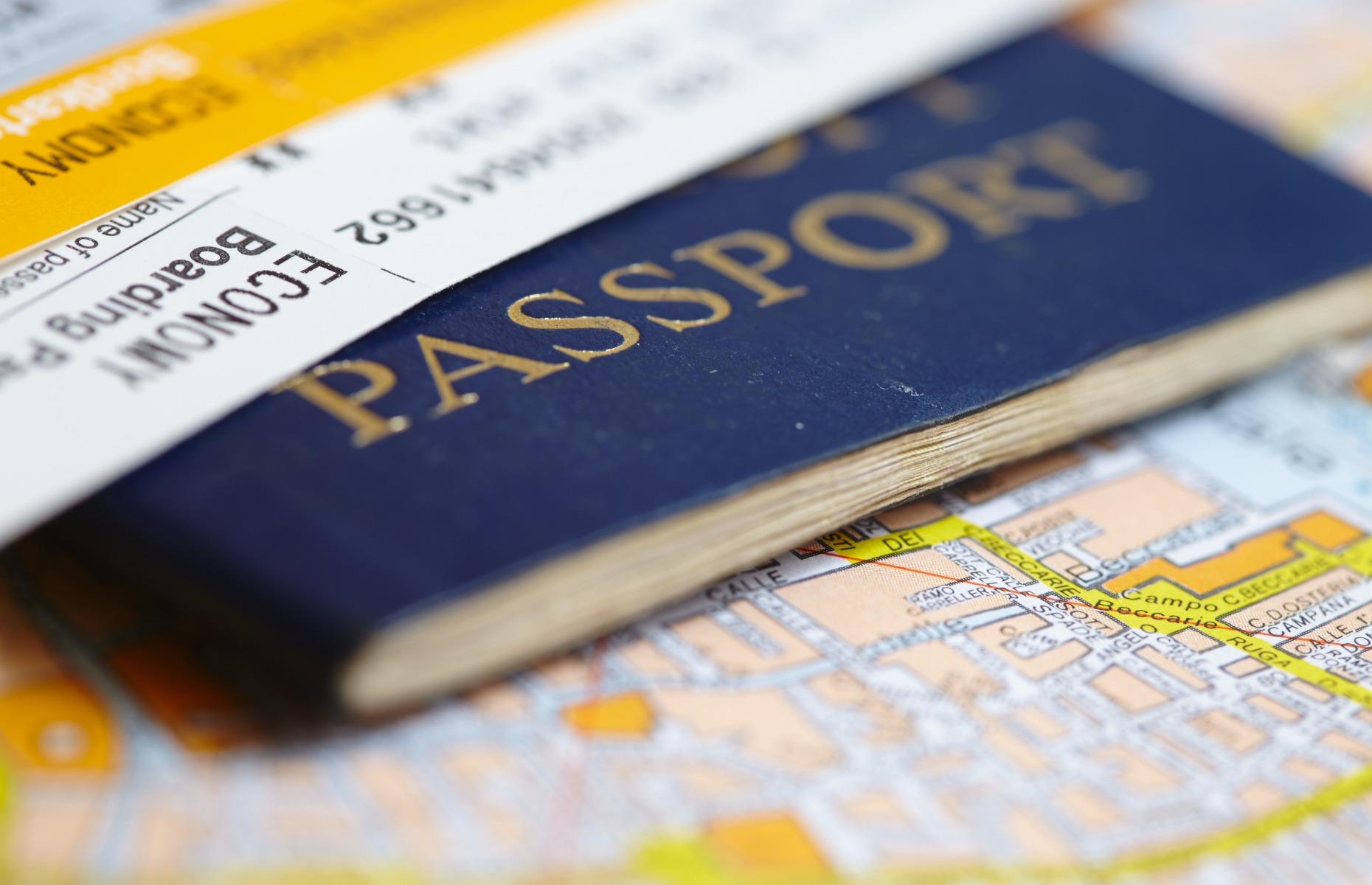
Check when your passport expires
When the UK ‘Brexited’ the EU, the rules on travel between the two estranged areas changed. Now, Brits traveling from home to the EU must have a passport valid for at least three months past their departure date.
The same can be said for nationals of other foreign countries too: Australians and Canadians traveling to Europe should have at least three months of validity left on their passports from the date they intend to leave the continent, while US citizens are advised to have no fewer than six months of passport validity past their last day in Europe.
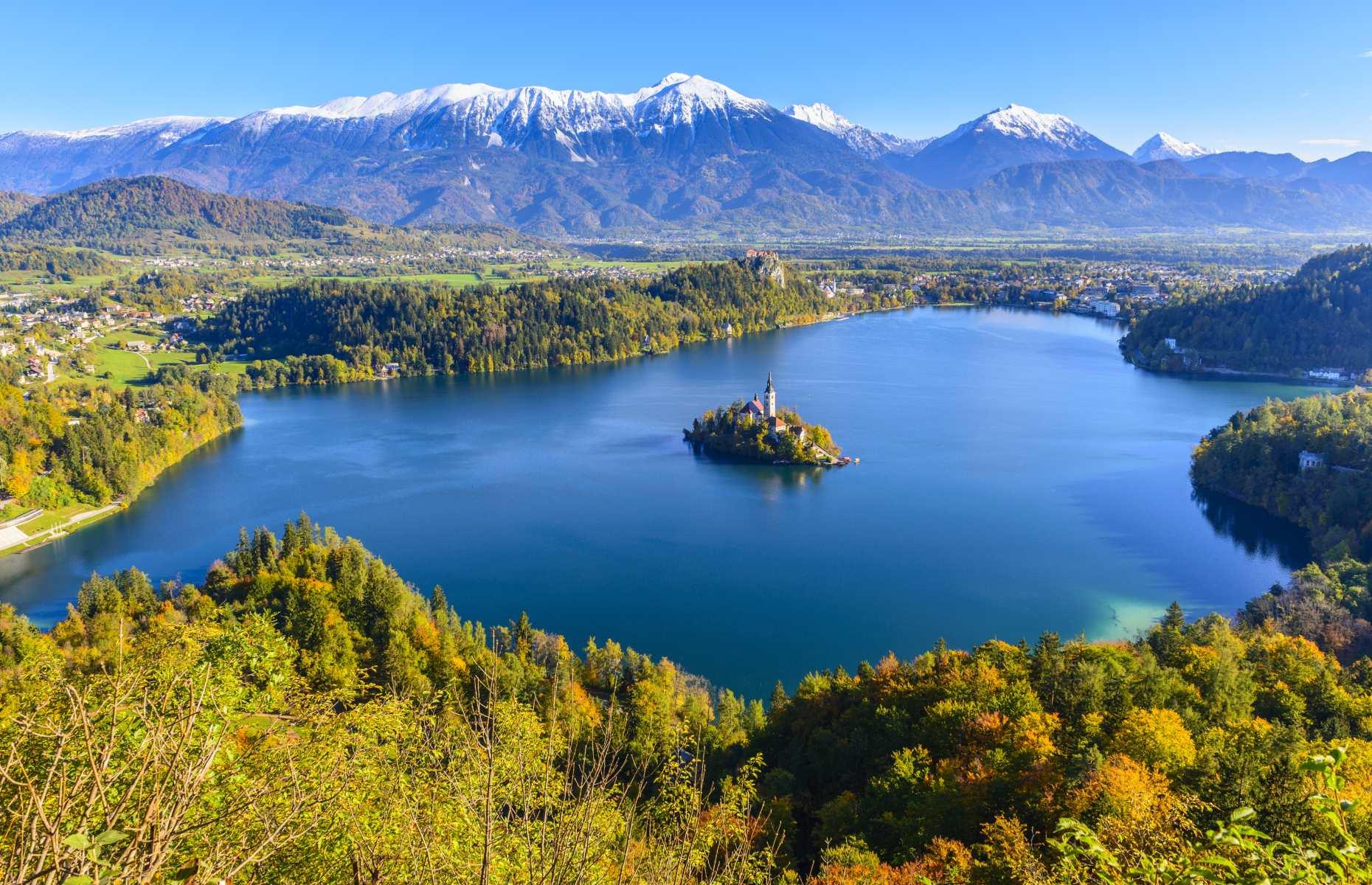
What is the Schengen Area?
The Schengen Area is a coalition of 27 European countries that allow borderless travel between them. Travelers from several countries, including the UK and the US, do not need a visa to visit any Schengen nations and can travel freely in as many countries as they like for up to 90 days within a 180-day period.
While you wait for your Schengen Area travel allowance to refresh, you can also travel in the non-Schengen countries of Bulgaria, Cyprus, and Romania for 90 days within a 180-day window visa-free.
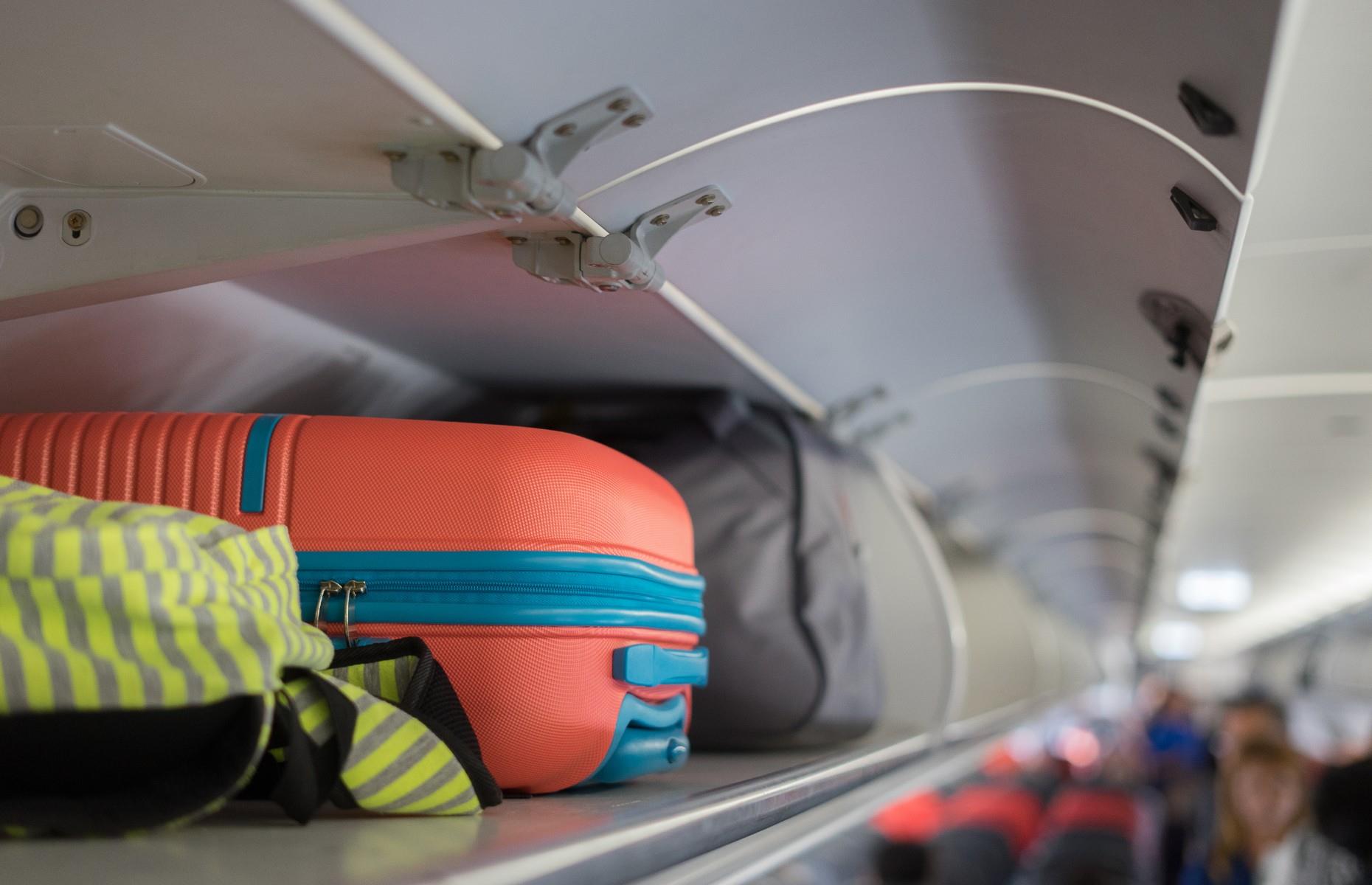
Hand luggage only? One size doesn’t fit all
Frustratingly there is no standard allowance across all airlines when it comes to the size and weight of cabin baggage, which regularly slaps unsuspecting travellers with unwanted extra charges. Your free hand luggage allowance will also vary from carrier to carrier.
British Airways is the most generous – you can bring one 56x45x25cm bag and one 40x30x15cm bag into the cabin with you, whereas budget airlines like Ryanair, easyJet, and Wizz Air are much more stingy. The EU is ultimately looking at eliminating carry-on baggage fees but until then, be sure to do your research.

Trains and buses are (mostly) the best ways to get around
You can avoid a lot of the hand luggage drama entirely by traveling through Europe, as opposed to over it. Overland adventures on the continent have never been easier to plan, with many countries (eg Germany and Spain) implementing affordable ticket schemes for those choosing to travel more sustainably.
Luxembourg’s public transport network has been completely free to use since 2020, while France banned domestic flights in 2023 where the same journey could be completed by train in less than two and a half hours. On the flip side, the UK’s public transport system is notoriously overpriced.

You sometimes need to validate your tickets
Italy has very strict rules about the need for regional train and local bus tickets to be validated before use – and there’s a hefty fine to pay if you don’t. While Trenitalia’s high-speed and intercity trains are ticketless, you’ll need to get physical regional tickets and rail passes date-stamped before departure by the ticket office or a machine like the one pictured here; e-tickets can be validated online.
Ticket validation is gradually being phased out in France, but is still required in some regions. So if you see a ticket-validating machine, use it.
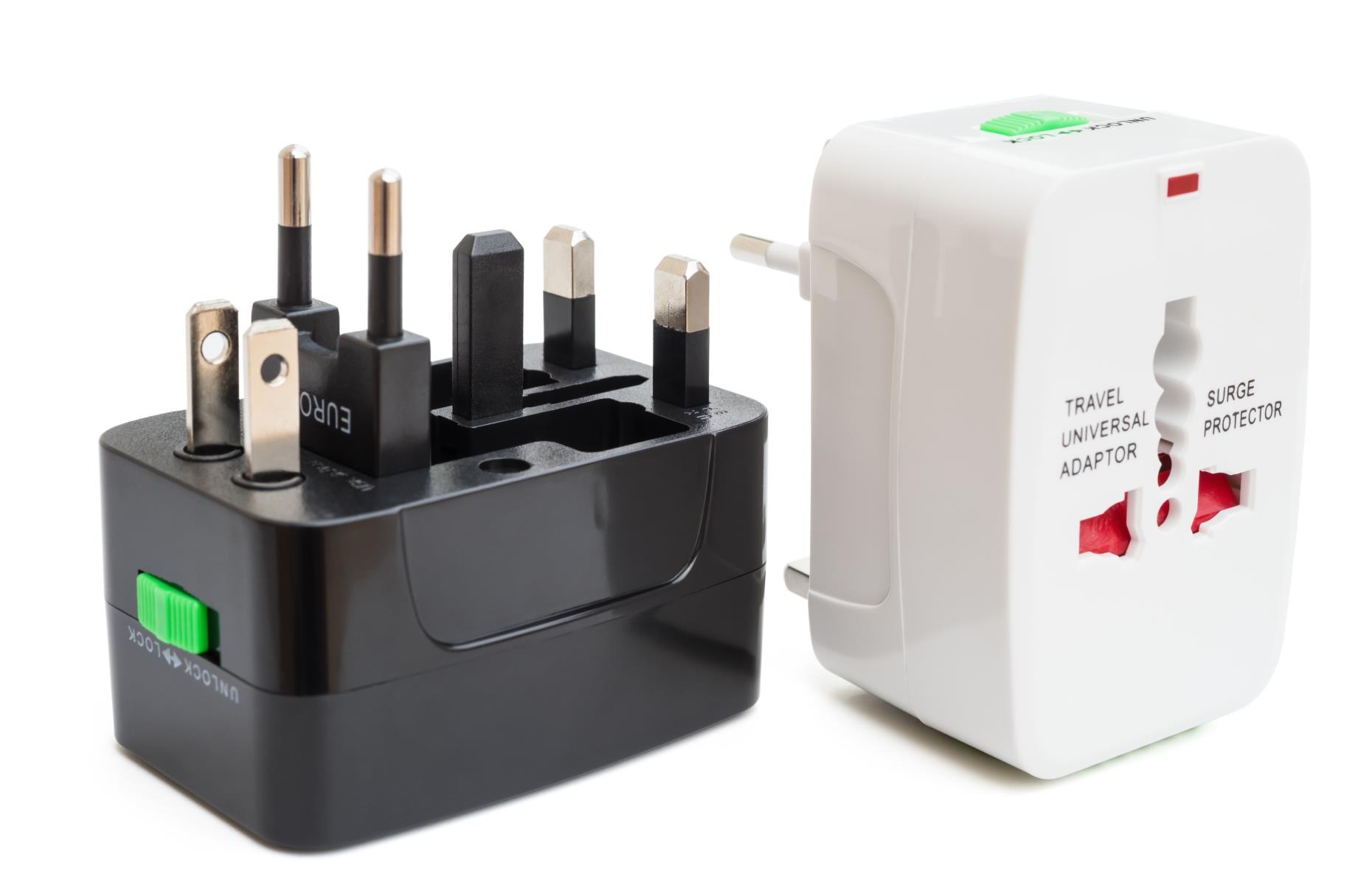
Bring a universal plug adaptor
Don’t get caught out by thinking there’s just one standard kind of power socket for the whole continent. While most countries in mainland Europe have C and F-type sockets, G sockets are more common in the UK, Ireland, the Channel Islands, Cyprus, Gibraltar, and Malta.
Venture north to Denmark and its territories and you could encounter E or K-type sockets. To avoid any inconveniences in your destination, pack a universal adaptor that allows you to hook up USB cables and switch plug types with the press of a button.

Save on your phone usage
If you’re lucky, your cell’s network provider might allow you to use your calls, texts, and data throughout Europe as part of your existing plan. If that’s not the case, consider investing in a data-roaming add-on that could save you money if you travel regularly – purchasing packages as you go can often work out more expensive for less allowance. Otherwise, prepaid SIM cards designed for travelers also cover multiple countries for days and even months at a time.

Carry a bit of cash
Yes, even in today’s mostly cashless society, sometimes cash is king. While it can feel cumbersome and unhygienic to cart around, it’s better to have a safety net of notes and loose change in your bag than running into trouble if the card machine isn’t working in the cafe you’re eating in or if, heaven forbid, you were to lose your bank card or cellphone.
Just remember to keep your money safe, secured, and concealed at all times.

Always pay in the local currency
If you’re withdrawing cash from a European ATM or paying for something on your card while on the continent, always pay in the local currency rather than your own. This will ensure you’re not being fleeced by bad conversion rates that could cost you up to 10% more than if you’d opted for the local legal tender when prompted. Banks like Revolut, Monzo, and Starling offer some of the best exchange rates on the market when using their payment cards or apps abroad.
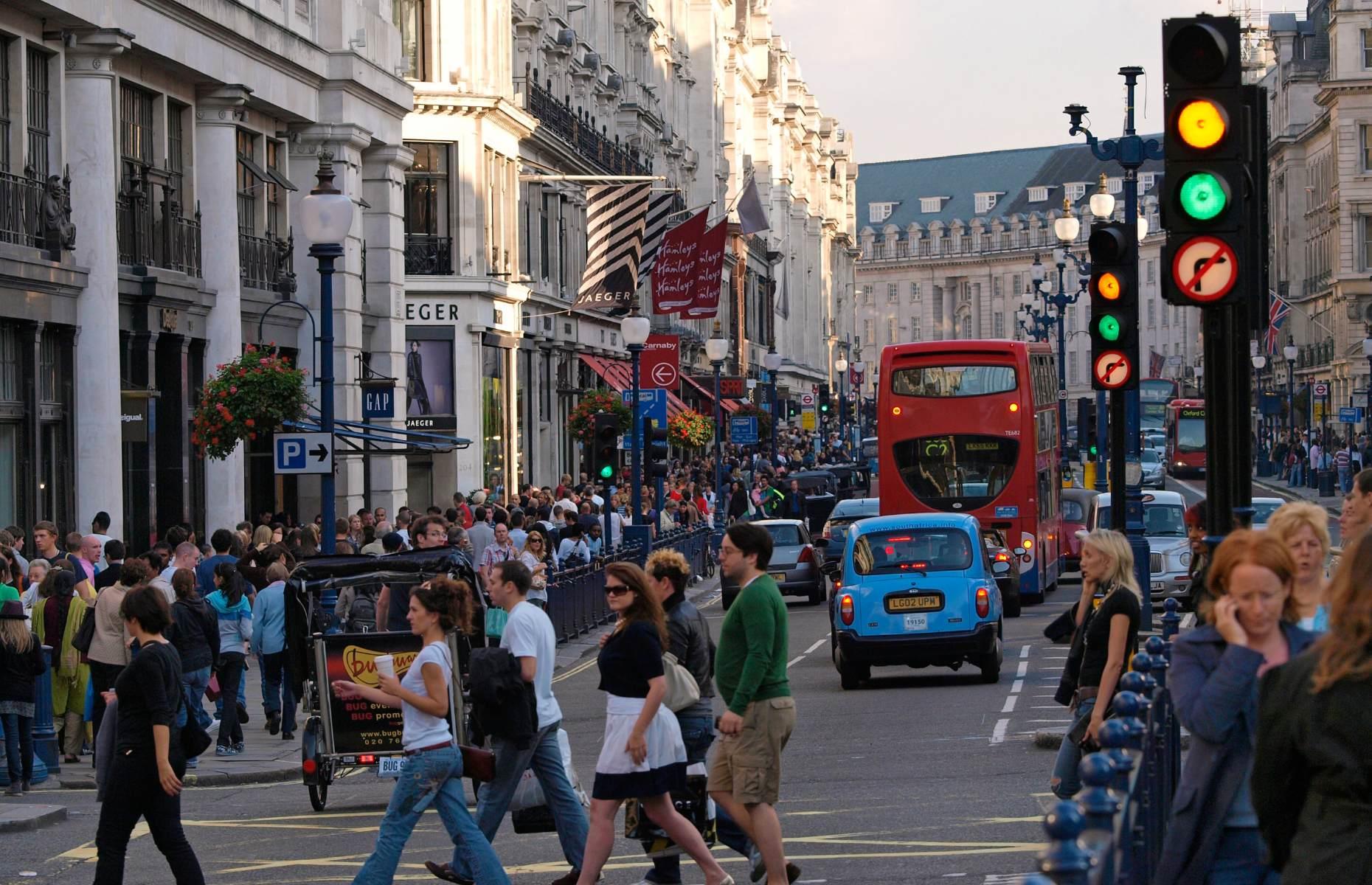
Expect crowds even in the off-season
Even if you’re visiting a European destination between November and March – deemed the off-season – it’s likely that city streets and Insta-famous tourist attractions may still be busier than you might expect. The cooler temperatures, wetter weather and shorter days might be enough to dissuade some people from booking an off-season trip to places like Stockholm, Prague, Edinburgh or London, but you’ll be far from the only one braving it in the name of lower costs.
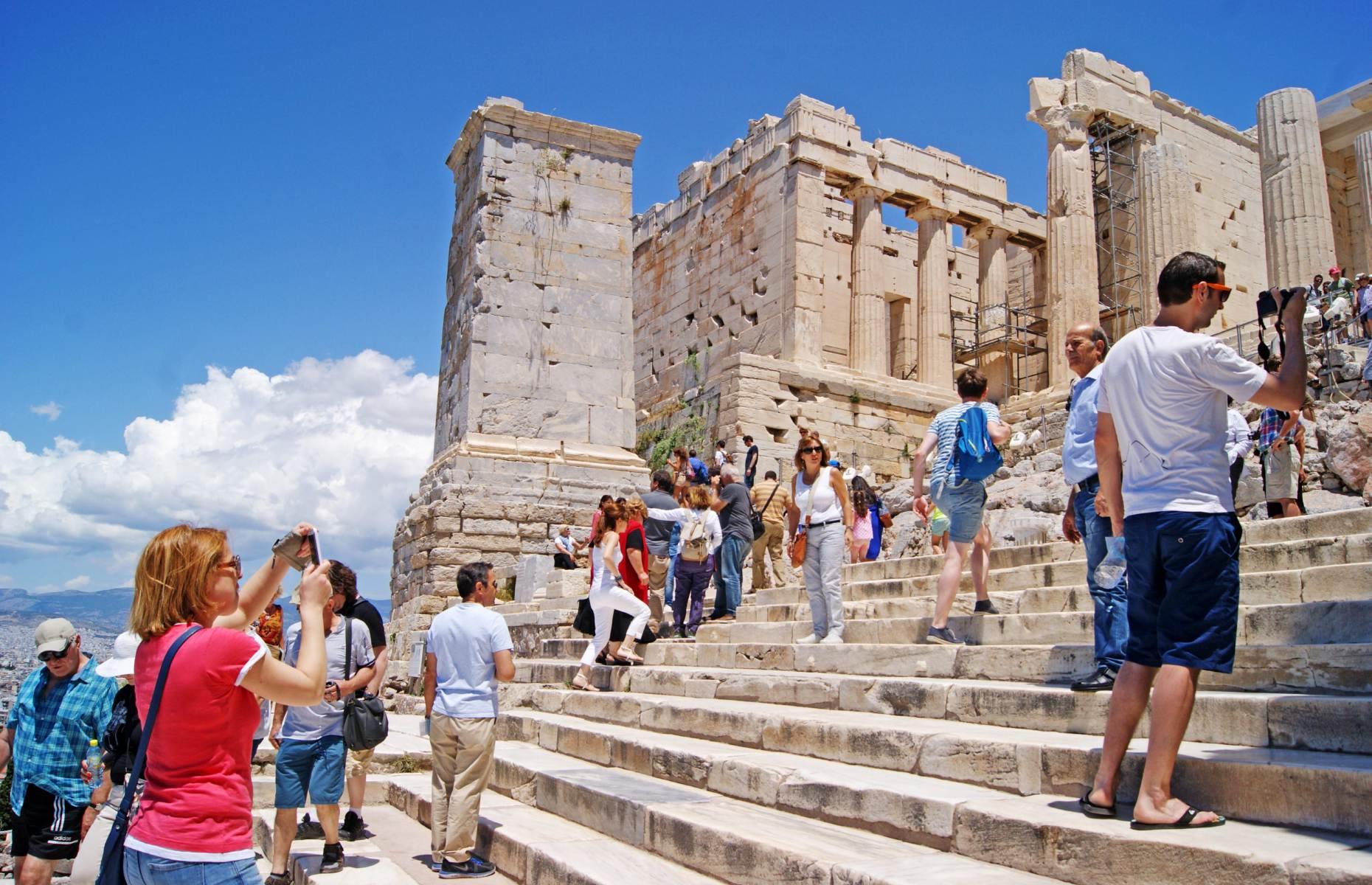
Avoid falling victim to visitor caps
Greece became the latest European country to impose visitor limits on one of its foremost attractions in 2023 when the Acropolis of Athens began capping the number of daily tourists at 20,000. To protect the longevity of the ancient UNESCO site and the comfort of everyone who wants to see it, visitors must book a one-hour entrance slot in advance.
Elsewhere, tourism caps have also been applied on hire cars touring Italy’s Amalfi Coast Drive at busy periods – if your number plate ends in an odd number, you can’t access the road on odd-numbered days, and vice versa.

Pack a comfy pair of walking shoes
It's amazing how quickly your pedometer will tick up while exploring Europe, without you even really having to think about it. Wandering cobbled medieval streets, coast paths, nature trails, and around sprawling museums, you'll surpass that 10,000 daily step count in no time. Be sure then to pack your favorite pair of sneakers or most sturdy hiking boots – shoes that aren't just supportive but breathable, to avoid unwanted travel buddies like blisters and ingrown toenails.
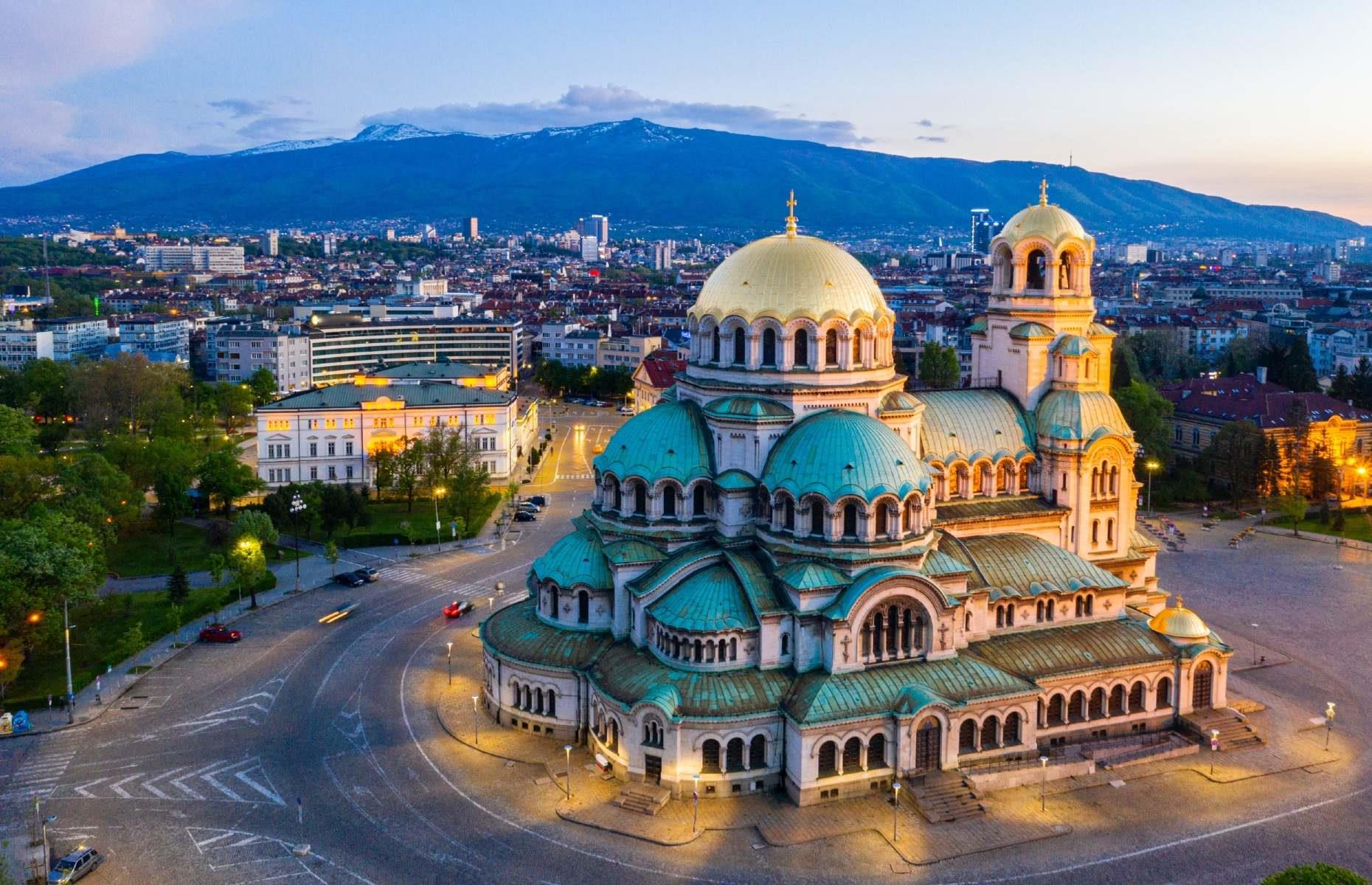
There are countries where your budget will go further
While the term ‘cheap’ is subjective, we think most will agree that paying less than a euro for an espresso is an absolute steal – and almost unheard of. But that's the going rate in Bulgaria, an oft-overlooked nation at the confluence of the Black Sea and the Balkan Peninsula's highest peaks.
Its neighbor Romania is also touted as one of Europe's more affordable destinations, as well as the likes of Estonia, Poland, and Czechia.

Sleeping under the stars isn’t a given
If you’re planning to save money on accommodation by wild camping your way around Europe, you should know that pitching your tent is subject to different rules in different countries and often involves a lot of red tape. In the UK for instance, wild camping is illegal without the landowner’s consent almost everywhere, apart from the majority of Scotland and Dartmoor National Park in England’s southwest. Sweden, Norway, and Finland have right-to-roam laws that allow camping freely in nature, provided you leave no trace.
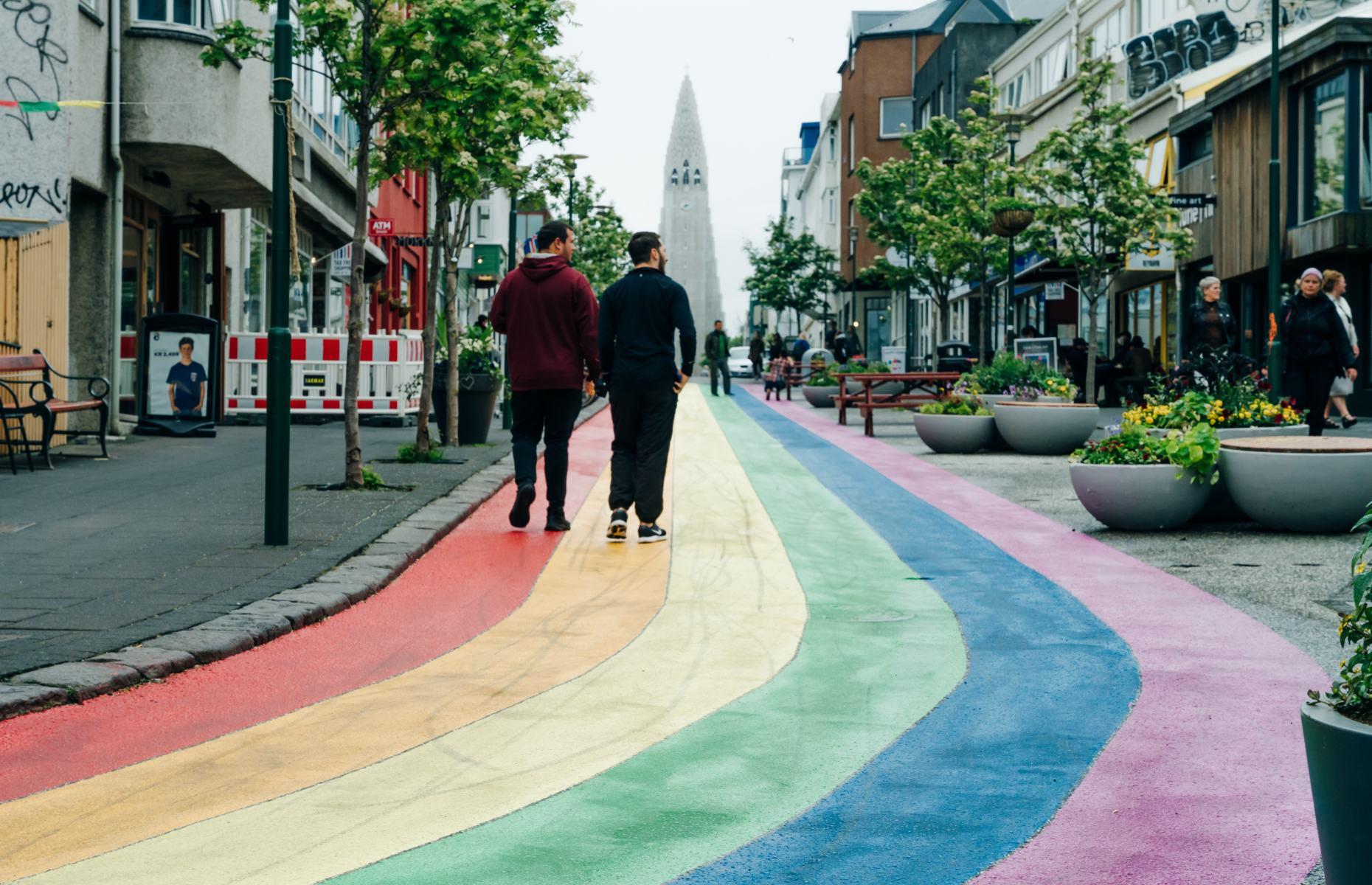
These are the countries most supportive of the LGBTQ+ community
Though attitudes towards the LGBTQ+ community have become more accepting in recent years across the continent, there are countries that are considerably more inclusive and celebratory than others. At the time of writing, ILGA-Europe (the European Region of the International Lesbian, Gay, Bisexual, Trans, and Intersex Association) ranked Malta, Belgium, Denmark, Spain, and Iceland as the top five European countries where people of all sexualities and gender identities should feel safe.
At the bottom of the table, Armenia, Turkey, and Azerbaijan rank lowest for LGBTQ+ tolerance.

These are some of Europe’s most accessible cities
Persons with disabilities, elderly people, and families with children all might need to consider the accessibility of a city before visiting. And looking at those that have placed either first, second, or third in the Access City Award is a good starting point: Stockholm, Lyon, Berlin, Warsaw, Milan, Luxembourg (pictured), Ljubljana, Rotterdam, and Salzburg have all been recognized in the past.
If you require elevators or ramps to get around, you might want to skip London – only 92 Tube stations out of the 272 in the metro network provide step-free access from street to platform.

Table for one?
If there's one thing solo travelers universally dread, it's dining alone. In reality, no one bats an eye when you say “mesa para uno,” but what if you can’t even get a table in the first place? In August 2023, Lonely Planet reported that solo diners were being denied seats at restaurants with outdoor terraces in Barcelona, with larger groups taking priority.
But worry not, there are plenty of amazing restaurants that do welcome solo customers, such as BENZiNA in the lively Sant Antoni neighborhood. Wherever you travel solo in Europe, it's worth noting that some restaurants won't take reservations for one, so prepare to be flexible.

Businesses might shut down for certain days and siestas
Looking to eat out when you're traveling around Europe? You might find it easier to make a reservation on some days than others. While not all restaurants shut down on Sundays and Mondays as a rule, you might notice that many do. So leave yourself enough time in the planning process to account for a bit of extra research.
Shops will often close early (if not completely) on Sundays too, while in typically warmer countries like Spain, Italy, and Greece, businesses may also pause operations during afternoon siesta time, especially in more rural communities.

Know when you’re not wanted
Overtourism has become a major blight in some of Europe’s cities, whose fatal flaw is their aesthetic beauty and party-loving nightlife districts. But enough is enough, says Amsterdam, which will increase its tourist tax in 2024 in line with restrictions the city recently placed on cruise ships.
The hike will mean Amsterdam breaking its own record for the highest tourist tax in Europe – maybe even the world. Spanish destinations like Seville, Mallorca, and Barcelona are also clamping down on rowdy visitors eliciting antisocial behavior.
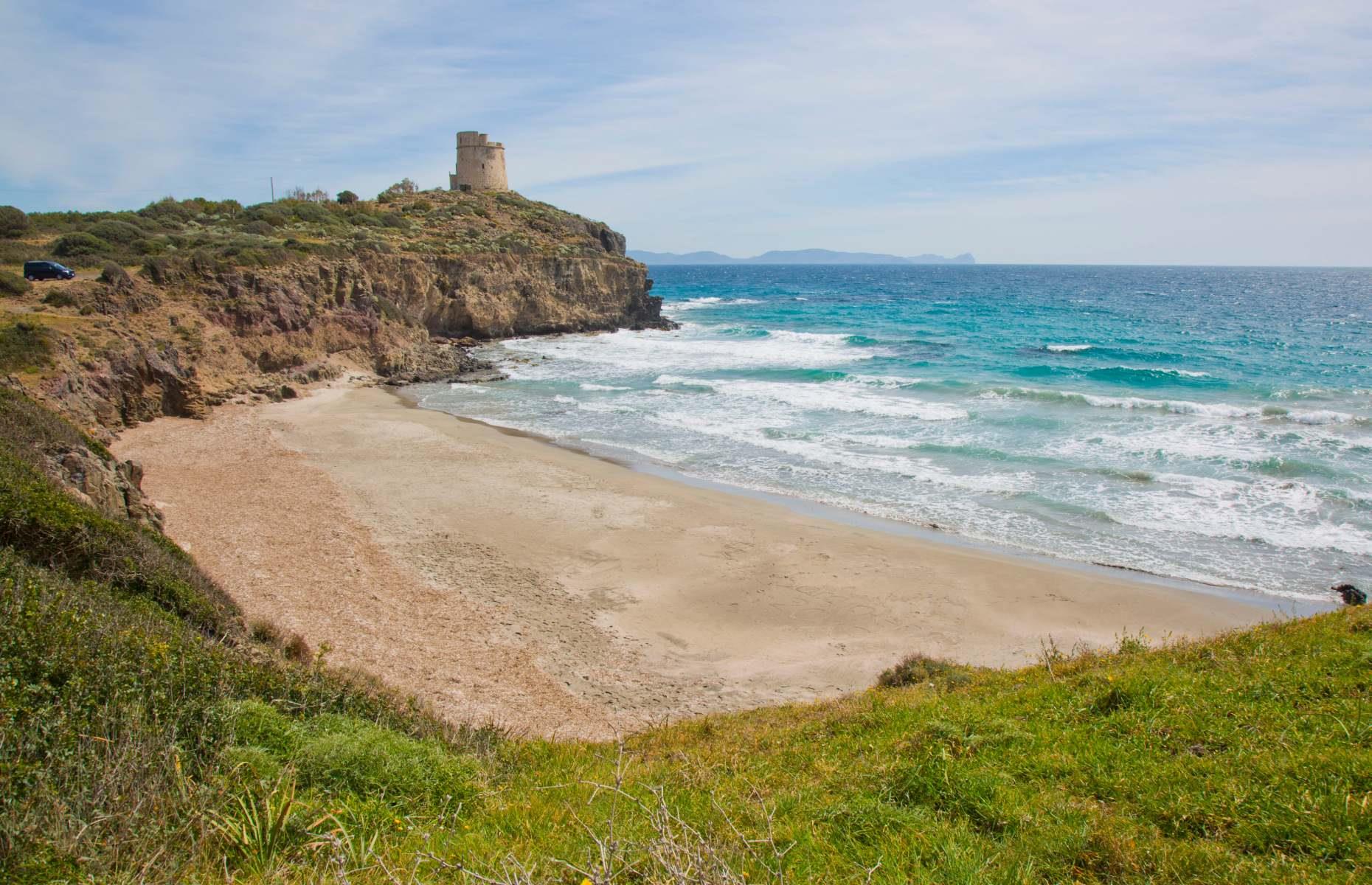
You can’t even eat ice cream on this Italian beach
Italy is one of the more vocal countries when it comes to making rules to deter irresponsible tourism and pollution. In the summer of 2023, it was reported that beachgoers at Sant’Antioco in Sardinia could be slapped with a €500 ($546) fine for eating food of any kind on the beach.
Milan has also recently been cracking down on eating, banning late-night/early-morning takeout, while consuming food on the streets of Florence's historic center is also prohibited between set times. In Rome, tourists could be fined for sitting on the iconic Spanish Steps or wading in the Trevi Fountain.
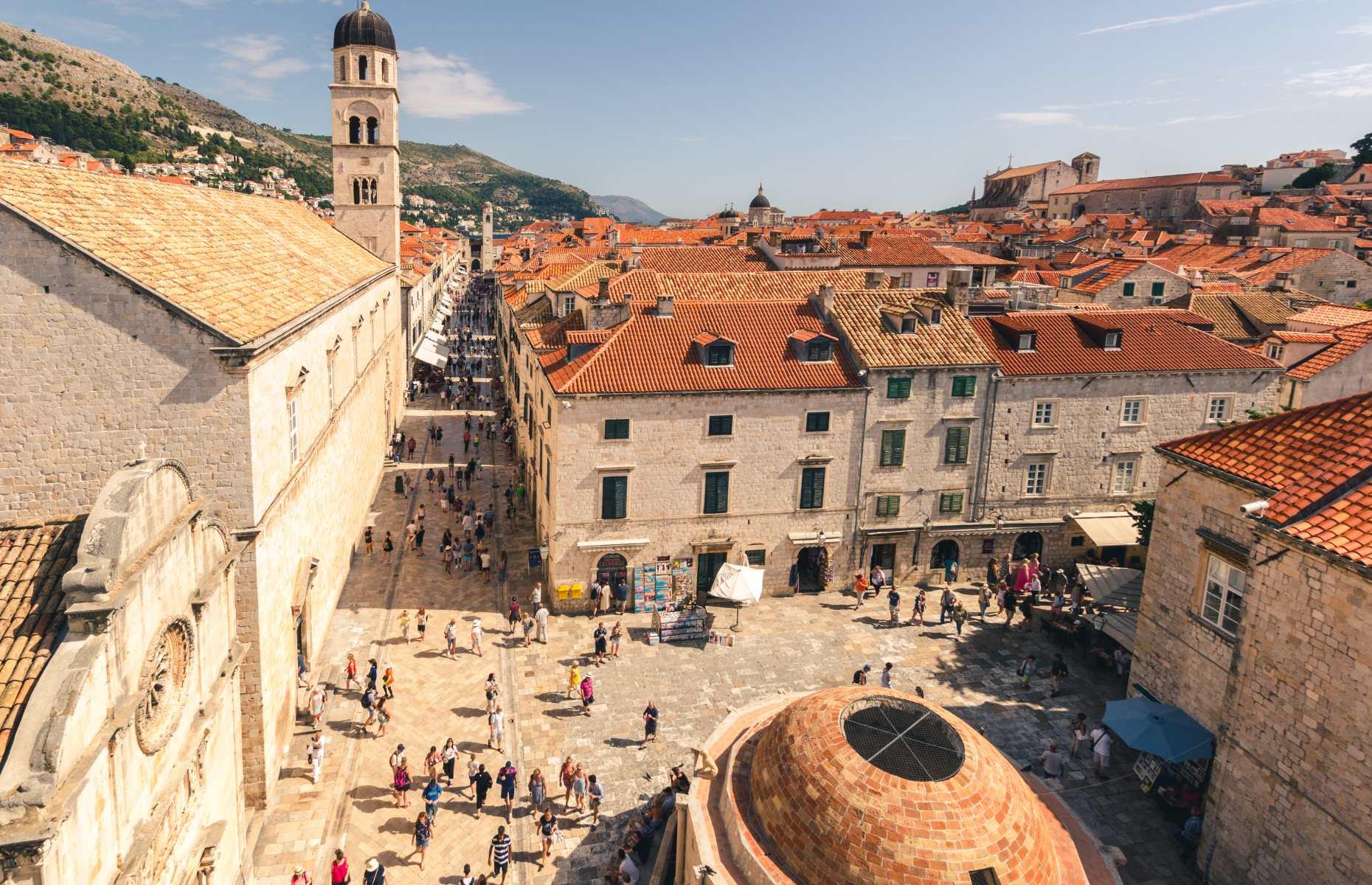
Don’t bring wheelie suitcases to this historic city
Elsewhere, ‘Pearl of the Adriatic’ Dubrovnik is urging travelers to respect the city, having launched a tourism campaign in 2023 encouraging people to carry their suitcases through the ancient old town instead of raking them across the battered cobbles. This comes after UNESCO has previously threatened to strip Dubrovnik of its World Heritage Site status due to its problems with mass tourism.
While the word about wheeling suitcases through the city’s historic center isn’t a concrete ban, visitors should still be mindful of the impact they make on any destination they travel to.

There’s more than meets the eye
While Europe’s most talked-about places are popular for a reason and shouldn’t necessarily be dropped from your itinerary, there is far more to this little continent than what you see on social media. For instance, Scotland isn’t all just moody castles and rugged highlands – it has Caribbean-like beaches, like the one pictured here on the Isle of Harris.
You’ll be vastly rewarded for venturing beyond Croatia’s Dalmatian Coast and Iceland’s Golden Circle, and considering the countries you don’t see documented as much, such as Kosovo, Albania, and Lithuania.
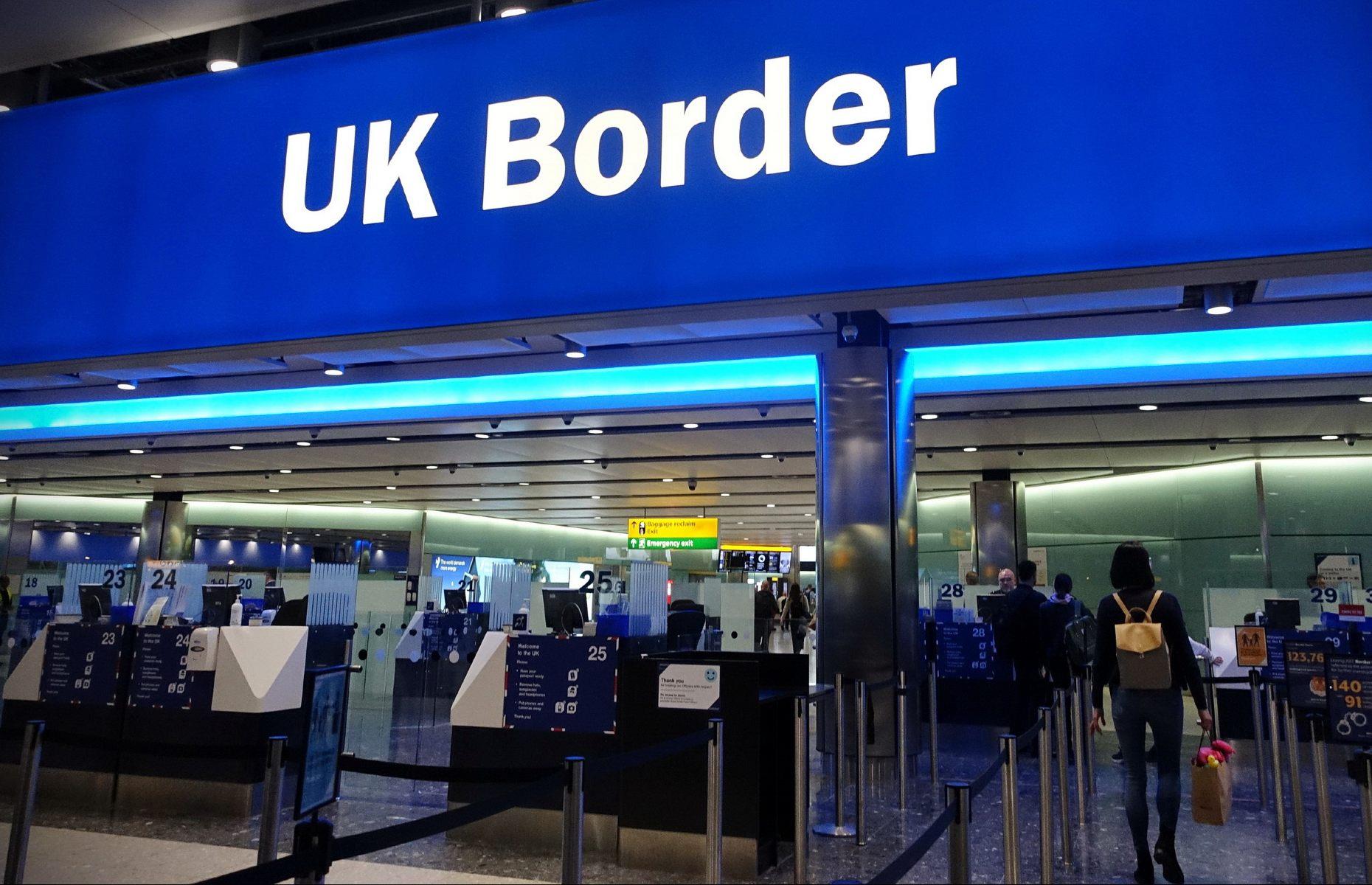
Visiting the UK is about to get more expensive
As part of ongoing plans to digitize its borders, the UK is introducing a new Electronic Travel Authorisation (ETA) document that will be required for visa-free international visitors to England, Scotland, Wales, and Northern Ireland. ETAs cost £10 ($13) and are already mandatory for Qatari passport holders, with Bahrain, Jordan, Kuwait, Oman, Saudi Arabia, and the UAE joining the scheme from February 2024.
More countries, including the 27 European Union member states, the USA, Canada, and Australia, are set to join later in 2024. More on the ETA process can be found in our detailed explainer .
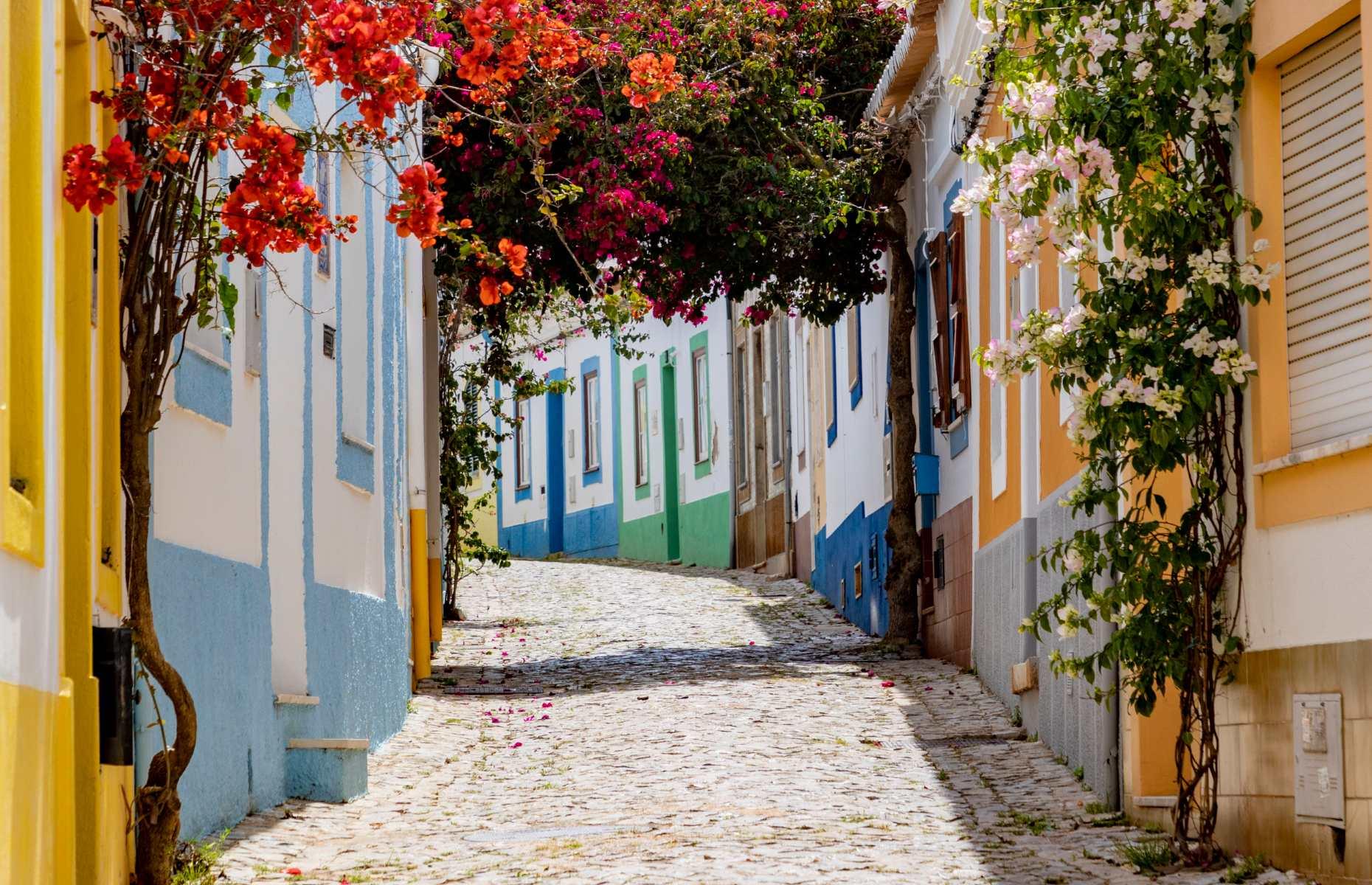
You’ll soon need extra authorisation to visit other countries too
Visa-exempt international travelers to 30 other European countries will also need to apply for additional travel authorization within a couple of years. The ETIAS (European Travel Information and Authorisation System) scheme is similar to the UK’s ETA and will be required for nationals from these listed countries to visit all 27 countries in the Schengen Area, plus Bulgaria, Cyprus, and Romania.
The new visa waiver program is set to come into effect from spring 2025.
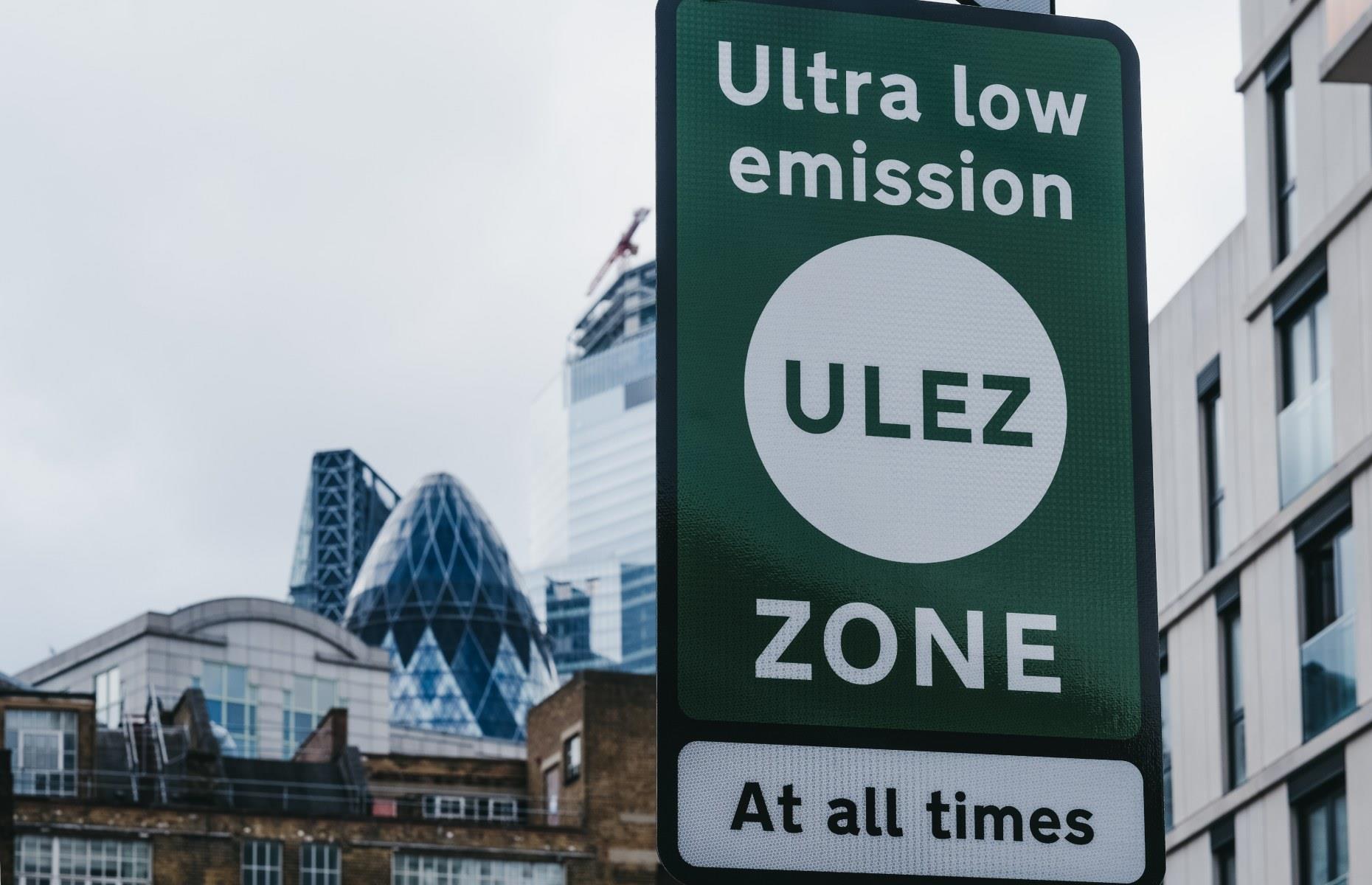
Dodge city centres if you’re planning a road trip
In a bid to reduce the continent’s carbon footprint, more and more low emissions zones are cropping up all over Europe and placing restrictions on petrol and diesel vehicles passing through major cities such as London, Paris, and Madrid. Not only does driving a car in these zones result in huge charges to compensate for the environmental impact of the journey, but it can also mean you’re stuck in traffic jams that eat into the enjoyment of your trip.
While hiring a car is required to visit more rural, remote, and coastal areas, you shouldn’t need one to get around cities.
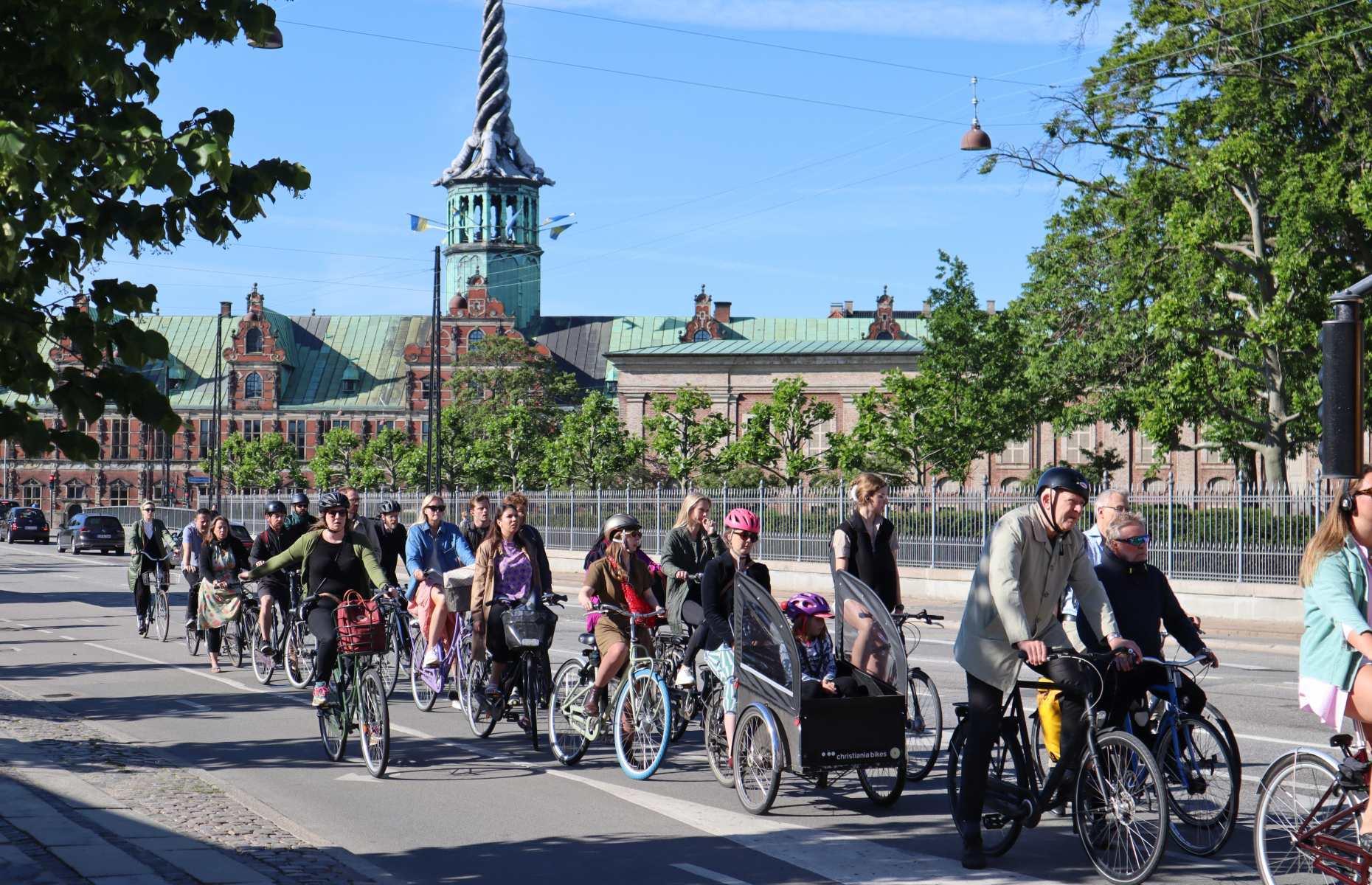
It’s not just Amsterdam that loves a bike
While the Dutch capital might be the poster-child for seeing the world on two wheels, it's not the only European city encouraging people to get on their bikes. Copenhagen (pictured) is another incredibly cycle-friendly city, where great bike bridges, explorative routes, designated lanes, and hire schemes have all been created.
If you are planning to cycle when you come to Europe, make sure to familiarise yourself with the road laws for cyclists in each of your destinations, as these can vary from country to country.

Should you really be worried about bedbugs?
Social media ran riot in October 2023 with fear-mongering reports of bedbugs infesting the Paris metro, hotels, and cinemas, sending Parisians and travelers into a panic about getting bitten and taking the little blighters home with them. But despite the frenzy, health officers and dermatologists have said that the French capital’s bedbug problem is no worse than in other cities around the world. So while they’re a nuisance, they shouldn’t put you off traveling.
Now discover the fascinating secrets of Europe's most eerie abandoned places,,,
More for You
Megan Fox Signs With UTA
29 common human foods you may not realize are poisonous to your dog
Army fires commander of Germany-based air defense unit
Donald Trump Loses High-Profile Lawyer in Two Cases
19 Things People Treat As Safe That Actually Are Pretty Dangerous
Bake Brownies With This Secret Ingredient For Extra Fudgy Goodness
Jason Kelce shares update about his ‘stolen’ Super Bowl ring
A woman said her tattoos got her rejected for a job, but experts say personality is far more important
"GMA" Fans Congratulate Robin Roberts as She Announces Major Career Achievement
Average US annual salary by age revealed – see how you compare
Houthis Claim Responsibility in US Cargo, Naval Ship Attack
Here’s Why There Are 10 Hot Dogs in a Pack, But Only 8 Buns
Peyton Manning takes aim at Jets over Zach Wilson's failed tenure: 'It drives me crazy'
Tesla announces mass layoffs across three US states
Trump World rocked by Arizona fake elector indictments as Trump's legal peril snowballs
Drew Barrymore Launched a Brand New Shade In Her Kitchenware Line, and It’s Perfect for Any Space
A homeless woman got an apartment. Then came conflicts with neighbors.
I’m a Bank Teller: 3 Times You Should Never Ask For $100 Bills at the Bank
10 most ‘overpriced’ tourist attractions in the world – and three are in the US
We Ordered 7 Fast-Food Breakfast Sandwiches to Find the Best One
I've visited over 50 European cities. Here are the 5 I can't wait to return to.
- After visiting over 50 European cities , I'm often asked which places have been my favorites.
- However, I've found that each city I've been to has offered something different.
- A few of my favorite places to visit include Barcelona and Ljubljana, Slovenia.

It's looking like 2024 is a good time to travel to Europe , especially if you want to avoid extra paperwork and fees.
European Union (EU) authorities have been working on a system that makes it mandatory for many travelers, including Americans, to obtain a visa-like document in order to visit most countries in the EU.
Although the requirement was meant to be put in place this year, it's since been delayed to 2025 — so you may want to book that European trip sooner rather than later.
As someone who's visited over 50 European cities, I can help you narrow down your options. Here are the five cities in Europe I absolutely loved and can't wait to return to.
Barcelona is my favorite city in the world.
Barcelona is, dare I say, my favorite city in the world. Its unique architecture is reason enough to visit, but Spain also offers some of the best cuisine around.
Barcelona truly offers something for everyone, from parks and beaches to nightclubs and cafés.
When I visited Bunkers del Carmel, a popular lookout spot that provides stunning views of Barcelona, I felt a true sense of community. Here, I found people simply drinking wine and enjoying the views together.
Porto, Portugal, is the perfect place to watch the sunset.
I've found that Porto is often overlooked for Portugal's more popular city, Lisbon. When I visited Porto, however, I spent my days sitting by the waterfront, drinking port wine, and eating amazing Portuguese food.
Seeing the sunset here is a right of passage — I recommend catching one at Jardim do Morro, a garden overlooking the city.
Edinburgh, Scotland, is easy to explore on foot.
When I visited Edinburgh, I felt like I was on the set of a Harry Potter film . The medieval architecture is unlike anything I've seen before, and it's easy to explore the city on foot.
The food scene did not disappoint, and I learned that Scottish cuisine is much more than just haggis. I recommend checking out restaurants like Oink and The Bon Vivant.
Ljubljana, Slovenia, is full of natural beauty.
Ljubljana, Slovenia, is one of the most aesthetically-pleasing cities I've visited. Its natural beauty is unmatched, and it's very easy to get around from the city center.
In my opinion, a trip to Ljubljana isn't complete without a visit to Lake Bled, where travelers can enjoy turquoise waters and gorgeous mountains.
The city also has an award-winning food scene , with multiple Michelin stars to show for it.
Visiting Colmar, France, makes me feel like I'm in a Disney movie.
Colmar, located in the Alsace region of France, feels like a Disney movie come to life. I've visited the famous Christmas markets in the region, but the area has so much to offer.
Aside from Christmas festivities, Alsace is also known for its wine. In my opinion, the Alsace wine route is an underrated travel destination, as it's often outshined by more popular areas like Paris and the South of France.
Whether it's your first or fifth time in France, I recommend adding Colmar to your list of cities to visit.
- Main content
- Search Please fill out this field.
- Manage Your Subscription
- Give a Gift Subscription
- Sweepstakes
- Island Vacations
This Might Be the Most Photogenic Island in Greece — With a Moon-like Landscape, Gorgeous Sea Caves, and Some of the Bluest Water You've Ever Seen
Here’s your ultimate guide to Milos, the low-key Cycladic island that became an Instagram sensation.
:max_bytes(150000):strip_icc():format(webp)/_DSC6553edrcrop-e747cdc2832449cc81d81c6152dc6d92.jpg)
Best Hotels and Resorts
Best things to do.
- Best Shopping
Best Restaurants
Best time to visit, how to get there, areas to visit, how to get around.
Maico Presente/Getty Images
With its winning trifecta of sandy beaches, boutique hotels, and unpretentious tavernas, the Greek island of Milos seduces couples, water lovers, and gastronomes alike. There's no denying the Cycladic isle, where the famed Venus de Milo marble statue was unearthed by a farmer in 1820, is breathlessly romantic. Otherworldly landscapes sculpted by wind and sea shot to fame via Instagram in recent years, transforming the once low-profile island into a sought-after hot spot.
Rich in minerals and precious metals, Milos has been mined since the Neolithic era, starting with obsidian. Its volcanic origins explain the kaleidoscope of colors gracing the rugged cliffs and coastlines. But tourism wasn’t taken seriously here until recently. Today, Milos features prominently among Travel + Leisure ’s World’s Best Award-winning destinations . Travelers are drawn to natural phenomena like the bone-white cliffs of former pirate lair Kleftiko and Sikia sea cave with azure waters ideal for snorkeling. Top of the list for travelers are two beaches: Papafragas and the lunar-like Sarakiniko. And let’s not forget the traditional technicolor boathouses.
"Milos offers the cultural connection many of today’s travelers are seeking," Mina Agnos , a T+L A-List advisor and founder of Travelive , said. It's ideal for those looking for a “laid-back vacation focused on culture, beaches, food, yachting, and relaxation,” she added. Foodie experiences, island tours, and boat charters are especially popular, but with limited hotel inventory, early booking is key, notes Agnos.
Here’s how to plan the perfect island escape to Milos, Greece.
Top 5 Can’t Miss
- Explore the moonscape-like beach of Sarakiniko. The bravest dive into a cobalt Aegean below.
- Stroll around the small fishing village of Klima, where traditional boathouses come in all shades of the rainbow.
- Take a boat tour of Kleftiko and Sykia sea cave, best seen from a private yacht charter.
- Catch the sunset from a church courtyard in the island capital of Plaka.
- Chow down on delicious, farm-to-table food at O! Hamos!, Milos’ best-loved taverna.
Melian Boutique Hotel & Spa
Honeymooners flock to Melian Boutique Hotel & Spa , set on manicured grounds on the island’s northeastern tip. According to Agnos, “the little oasis” is a consistent winner with clients — not only for its personalized attention, but also for its waterfront location in Pollonia and romantic design, which includes four-poster brass beds.
Milos Breeze Boutique Hotel
A family-owned property with warm service, Milos Breeze Boutique Hotel is a firm favorite among travelers. “It really conveys the feeling of the island and makes people feel like they’re being welcomed into somebody’s home,” said Agnos. Plus, its elevated location lends an air of seclusion and delivers panoramic views of Pollonia.
Domes White Coast Milos
Situated on the northern coast, Domes White Coast Milos is “a little more remote,” but worth the extra effort to reach for the high-end service, according to Agnos. A member of upscale Greek hotel brand Domes Resorts, the adults-only property has 30 white suites with uninterrupted sea views, and Sarakiniko is just a seven-minute drive away.
Courtesy of Skinopi Lodge
Skinopi Lodge
With seven, secluded, stone-built villas perched on a scrubby hillside above the island’s deep natural harbor, this sublime retreat was fashioned for the wild at heart. Surrounded by olive trees, thyme, and lavender, Skinopi Lodge offers a contemporary take on traditional syrmata. Even better, a private swimming spot lies just few steps away.
White Pebble Suites
A dream come true for its three Greek-Australian female founders, White Pebble Suites throws a curveball at classic Cycladic architecture. Sinuous lines flow between the 12 cream-hued suites of this design-savvy couple favorite in Pollonia. Earthy textiles, polished cement, and wicker accents make for a soothing blend.
Cavan Images/Getty Images
Visit an otherworldly beach.
Formed from volcanic pumice sculpted by the wind and sea, Sarakiniko’s lunar-like appearance, contrasting with cobalt waters, is surreal. Only the strongest swimmers should consider cliff diving into the sea, which can become rough when northerlies blow through. Kids can explore old mining caves and marvel at a shipwreck washed ashore.
See unique boathouses.
Check out Milos’ traditional boathouses, known as syrmata, where fishermen would store their wooden boats for the winter. Painted in vivid red, blue, green, or yellow shades, many have been converted into ultra-minimalist holiday dwellings. The fishing village of Klima is well-known for its syrmata, but minuscule Firopotamos is equally appealing.
Explore by boat.
“Milos is a great place to charter a sailboat, yacht, or RIB [rigid inflatable boat] because there are so many places only accessible by sea,” said Agnos. Your trusty captain will transport you to the towering limestone cliffs of Kleftiko — once a pirate hideout — Sikia sea cave, or off-radar Polyegos isle to swim in ultramarine waters.
Go on an off-road excursion.
Milos’ western flank is so untamed that it’s off-limits to rental cars. Instead, take an off-road guided tour . Highlights include a visit to an inactive volcano, bird-watching at the Achivadolimni wetlands, and a hike through an abandoned manganese mine. End your day with a refreshing dip at a remote beach.
Uncover geological wonders.
You don’t have to be a science expert to enjoy a tour unearthing Milos’ geological wonders, according to Agnos. You’ll visit the Milos Mining Museum , salt pans, and a sunken crater, among other highlights. Perhaps the most evocative sight is the abandoned sulphur mines, replete with rusted-out wagons and ghostly buildings.
Best Shopping
f9photos/Getty Images
Pore over a fascinating array of sand exhibits and pick up memorabilia made with sand, wood, and glass from Milos Sand Gallery. At Totem, freshen up your wardrobe with a breezy cotton dress or colorful sun hat. Meanwhile, Pliatsiko’s one-of-a-kind items such as cross-stitch embroidered earrings and macramé necklaces are hard to resist.
Fashion boutique Vanilla carries resort wear by Greek designers, including bold print dresses and flowing caftans. Foodies should make room in their suitcase for delectable local goodies like sundried tomato paste, available at Ark of Tastes. Tip: Don’t leave without sampling the watermelon pie.
Westend61/Getty Images
This wildly popular taverna, which sources raw ingredients from the family farm and local producers, doesn't accept bookings, but it’s worth waiting in line. Choose standout dishes from a whimsical handwritten menu, including slow-cooked wild goat with lemon, mustard, and marjoram and braised chickpeas with curry, cumin, and red peppers.
Situated in the traditional village of Trypiti, Barriello has cemented its reputation as Milos’ most innovative dining venue. Chef-owner Takis Loukakis sources ingredients from his organic farm, serving dishes such as lamb picanha with black garlic, eggplant, and miso as well as vegan fare like king oyster mushroom carpaccio.
A spectacular setting for lunch or a sunset dinner, Klima’s sole restaurant is known for serving some of the best seafood on the island. Kritharoto (orzo) with shrimp and lobster spaghetti are among the highlights at Astakas, but if it’s grilled fish you’re after, take your pick from the day’s catch.
Situated on the water in the fishing settlement of Mandrakia, old-school taverna Medusa is a choice lunch and sunset dinner spot, so it’s always busy. Watch fishermen untangle nets and potter about their wooden caiques as you dine. Don’t miss the grilled eel with fava, fried calamari, and pitarakia (a local cheese pie).
Alevromilos
Chef Vassilis Papikinos showcases Milos’ wealth of produce through Cycladic cuisine that marries comfort and creativity. At his restaurant Alevromilos in Parasporos, he also blends in Italian influences, crafting dishes like skordolazana (handmade tagliatelle with a garlic sauce). For dessert, fresh local figs are served with xynomizithra cheese and honey.
Gatsi/Getty Images
Agnos suggests visiting Milos between mid-May and early October. “Seasonality is less of a factor than it used to be,” she said. “More clients are traveling in the shoulder season.” July and August are peak tourist months, so expect the island to be bustling with fellow visitors and cruise passengers. Summer is also the hottest time of year, though cooling northerly winds can take the edge off. While the Aegean waters are still rather cool for swimming in May, you may well have beaches almost completely to yourself. June is one of the best months to visit, with long, languid days and comfortable temperatures. Meanwhile, September is proving increasingly attractive for many travelers, followed by October, when the island winds down and prepares to close shop for the season.
The quickest way to reach Milos is by plane. Flights from Athens International Airport (Eleftherios Venizelos) to Milos operate daily and take about 45 minutes. Alternatively, take the ferry from Piraeus. A fast catamaran takes around three hours and 25 minutes to reach the island. Milos also features on cruise line itineraries, including those of The Ritz-Carlton Yacht Collection , Ponant , SeaDream Yacht Club , and Celestyal Cruises .
Aleh Varanishcha/Getty Images
Head up to Milos’ hilltop capital Plaka, where the maze-like alleyways and whitewashed homes are characteristically Cycladic. The ideal time to visit is just before sunset, which is best viewed from the courtyard of Panagia Korfiatissa church. Arrive early to nab a good spot. Agnos suggests “visiting the town’s little shops, jewelry boutiques, and galleries.”
Spend a day roaming around Pollonia village. Take shade beneath tamarisk trees on the sandy beach and watch fishing caiques rhythmically bob on the water. Pay a visit to the Kostantakis Winery and sample cave-aged wines. When dinnertime rolls around, take your pick from the plentiful dining options lining the town jetty.
Jump in your rental and take the ferry from Pollonia to neighboring Kimolos island. Make your way to the Goupa-Kara settlement and walk among picture-perfect boathouses. Cool off in the cyan waters of Prassa Beach, then head up to the main town of Horio to stroll along cobblestoned paths, pausing for meze at a taverna.
Rental Car: Book a rental car well in advance, particularly if you're visiting during peak season. “I recommend a car rental on Milos. For people comfortable with driving, it’s the best way to get around. Otherwise, have a driver on call,” said Agnos. Tip: Stick to paved and gravel roads, which can be narrow, and rely more on road signs than Google Maps.
Taxi: Silver taxis are available at the airport and there is a cab rank near the port in Adamas. They may cost more if booked via a hotel. Prices vary, ranging from around 15 euros from Adamas to Plaka and about 30 euros from the airport to Pollonia.
Bus: Milos has a small yet relatively comfortable bus fleet . Routes connect the airport with Adamas. From Adamas, you can reach Pollonia, Plaka, Sarakiniko, and Papafragas, among other destinations. Tickets cost two euros.
National Geographic content straight to your inbox—sign up for our popular newsletters here

A guide to Bad Ischl, the Alps' first European Capital of Culture
Sitting between baroque Salzburg and Austria’s alps, Bad Ischl, the 2024 European Capital of Culture combines the appeal of both.
Every summer day at 6am, 19th-century empress Sisi left her holiday hunting lodge in the Austrian resort of Bad Ischl to hike up Jainzen, the forested mountain looming just behind. The average ascent is around an hour, but they say it took the tall, tattooed wife of Austro-Hungarian Emperor Franz Joseph I just 40 minutes to reach the peak.
With the spare time, she might ride one of her 50 horses, exercise on wooden machines she designed for her home gym, scoff violet pastries or smoke in her lavish gardens. Over a century since Sisi’s death, this town east of Salzburg remains a summer playground among wellness enthusiasts and anyone with two poles to hike with.
It’s a gateway to the Alpine lakes and mountains of Salzkammergut , a region whose name translates to ‘salt domain’, a nod to a local salt-mining tradition that dates back 7,000 years. It’s partly thanks to this history and pastoral charm that the entire region was anointed one of three 2024 European Capitals of Culture, with Bad Ischl the banner town — the first rural, Alpine destination to wear the mantle.

In the centre, Zauner Café serves glossy iced gateaux, steps from the villa where 19th-century composer Anton Bruckner penned his symphonies. A 15th-century church steeple still presides over the cobbled square, lined with lederhosen shops. However, this year, a defunct brewery is coming back to life as a gallery for Japanese artist Motoi Yamamoto, who creates mosaics in salt, and contemporary weavers are reinvigorating a textile mill in Ebensee, 20 minutes away by car, spinning old tales into new art. Some of the 150 or so projects in the calendar are likely to become permanent, like the takeover of the former restaurant at Bad Ischl station by star chef Christoph Krauli Held.
The other forgotten attraction to be revived for the festivities is the vintage cog Schafberg Railway . At just over 3.5 miles in length, the line from Saint Wolfgang, another village in the region, heads around 4,000ft up Schafberg mountain. From its peak, the landscape unfurls to the hazy horizon: Bad Ischl to the east, the white-capped Alps to the south and, all around, the region’s 76 glacial lakes, pure and sapphire-blue.
Austrians head to these lakes to experience clean living — and white-tablecloth dining from another era. In St Wolfgang, where some women still wear dirndls when grocery shopping, the top table is lakeside at Landhaus zu Appesbach : opt for the venison, served with brioche dumplings and Burgundermacher pinot. Walk the meal off around the village, where a 12th-century church attracts Catholics. A different sort of pilgrim will head for the shore to swim by moonlight, perhaps rewarding themselves with small-batch gin from a 24-hour vending machine next to See-Distillerie .

Visitors are often surprised by modern anachronisms like the gin machine. Another one can be found on tiny Fuschlsee, the next lake over, where the rambling 600-year-old Schloss Fuschl castle has been nipped and tucked into a suave Rosewood hotel , opening in May.
Locals cram into the next-door fishery for plates of wood-smoked char supplied by the lake’s sole licensed fisherman; those in the know hit the shop before the 6pm closing to stock up for a sunset picnic. Others hop on wooden water taxis for the slow, silent drift to Fuschl town and scramble up mountains such as Ellmaustein or steeper Schober to watch the view reinvent itself in golds and pinks.
A 20-minute drive away is the new Kulmspitz observation tower high above Mondsee. A drive around this lake distills the region to its essential ingredients: gingerbread cottages, pilgrimage chapels, misty waterfalls and, at Schwarzindien, a warm swimming cove to bathe in. If that’s not sufficiently cultural, Bad Ischl is always less than an hour’s drive away — though Sisi would have walked it, of course.
FREE BONUS ISSUE
Related topics.
- CULTURAL TOURISM
You May Also Like

The 8 best walking shoes for men

The best deals on backpacks from REI’s clearance sale

The 9 best walking shoes for women

The hiking gear you shouldn’t leave home without

How to start a garden from scratch
- Environment
- Perpetual Planet
- History & Culture
History & Culture
- History Magazine
- Mind, Body, Wonder
- Terms of Use
- Privacy Policy
- Your US State Privacy Rights
- Children's Online Privacy Policy
- Interest-Based Ads
- About Nielsen Measurement
- Do Not Sell or Share My Personal Information
- Nat Geo Home
- Attend a Live Event
- Book a Trip
- Inspire Your Kids
- Shop Nat Geo
- Visit the D.C. Museum
- Learn About Our Impact
- Support Our Mission
- Advertise With Us
- Customer Service
- Renew Subscription
- Manage Your Subscription
- Work at Nat Geo
- Sign Up for Our Newsletters
- Contribute to Protect the Planet
Copyright © 1996-2015 National Geographic Society Copyright © 2015-2024 National Geographic Partners, LLC. All rights reserved
Heathrow Border Force, Gatwick catering woes and French ATC: The travel strikes hitting Europe in April and May

Editor's Note
We always hope your travel will be trouble-free, but there are strikes and other disruptions across Europe to look out for in the coming weeks.
If you plan to travel during these dates and need advice, read our guide to insurance policies and strike coverage . Additionally, find out what you may be entitled to in terms of compensation if your flight is delayed or otherwise affected.
Here are the strikes to be aware of in the U.K. and Europe.
Related: The best credit cards for trip cancellation and interruption insurance — and what it actually covers
Heathrow Border Force and refueling worker strikes
When: april 29-may 2, may 3-18 and may 4-6.
First, it was on, then it was off. Now, it's back on again: Border Force workers — the staff members who carry out immigration controls and passport checks — based at London's Heathrow Airport (LHR) are set to walk out between April 29 and May 2. The four-day strike action has the potential to cause serious disruption to international flights.
In addition to those dates, there will be a "work to rule" strike between May 3 and 18, when workers will only carry out essential tasks.
The strike involves members of the Public and Commercial Services Union, with 90% of its members voting in favor of the walkouts. The strike is over disputes regarding the U.K. government's planned changes to schedules and shift patterns.
Adding further woe at Heathrow, about 50 refueling workers will also stage a 72-hour strike to protest benefit cuts between May 4 and 6.
Catering workers for EasyJet and Tui at Gatwick Airport
When: april 26-29, may 3-6 and may 10-13.
Around 100 Dnata catering staff, including drivers and warehouse workers, will walk out on three consecutive weekends in April and May. The walkouts will affect services on EasyJet and Tui Airways flights from London Gatwick Airport (LGW).
The strikes — which involve about 100 workers — are due to take place April 26-29, May 3-6 and May 10-13.
Related: You are entitled to a refund for your canceled flight — even if the airline says you aren't
Air traffic controller strike in France
Air traffic controllers at French airports are threatening to strike April 25. While the strike could be averted, the clock is ticking; the staff only has until April 23 to call off the strike. If the strike goes ahead, it could disrupt up to 70% of flights arriving at the country's major airports and passing through French airspace.
France transport strike notice
When: feb. 5 to sept. 9.
Staff members employed by the state-owned Ile-de-France bus and metro network commenced a seven-month strike notice period in early February over pay. If they don't come to an agreement during this period, the strikes could likely take place during the 2024 Paris Olympics.
Bottom line
One thing worth remembering about strikes is that nothing is certain, and it's always possible that unions and employers will reach a deal.
However, the current economy can be challenging. Workers are struggling through the deepening cost of living, and travel companies are desperate to appease shareholders. The pressures on both sides of the fence seem unlikely to evaporate anytime soon.
The chances of more strikes across the travel sector are high. Keep an eye on these dates and plan accordingly.
Related reading:
- Key travel tips you need to know — whether you're a first-time or frequent traveler
- Best travel credit cards
- Where to go in 2024: The 16 best places to travel
- 6 real-life strategies you can use when your flight is canceled or delayed
- 8 of the best credit cards for general travel purchases
- 13 must-have items the TPG team can't travel without
Europe's travel strikes: Flight and train disruption you can expect in April and May
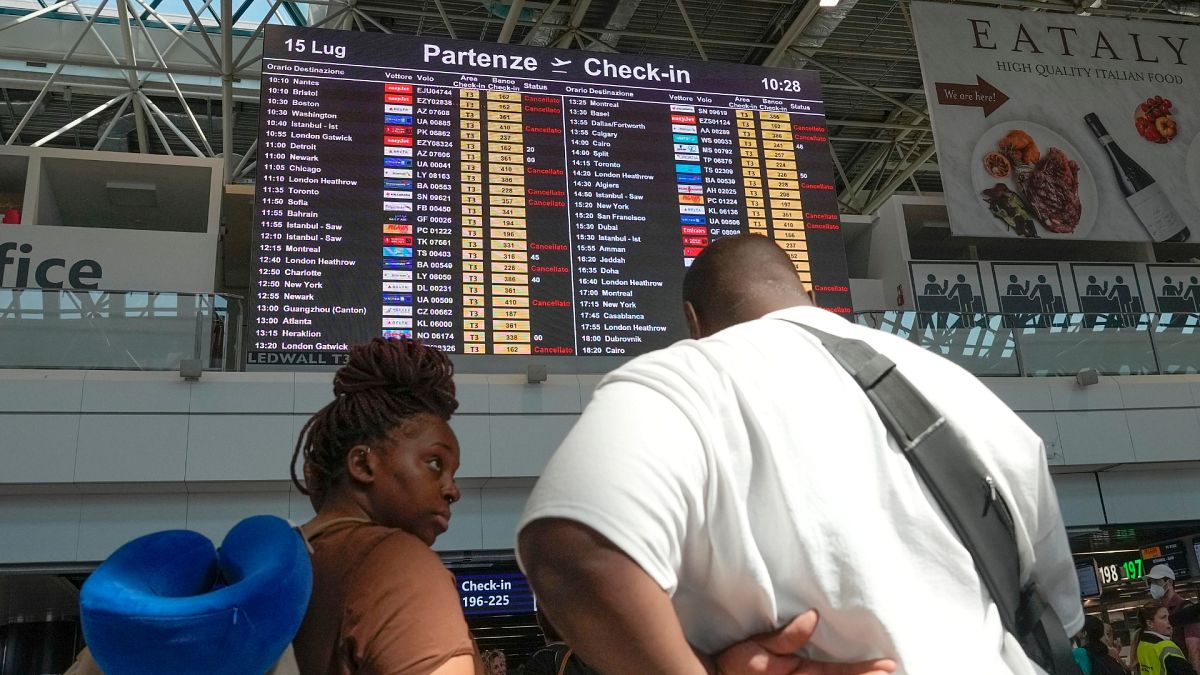
Our guide is updated as soon as a new European strike is announced.
Strikes are a regular occurrence in Europe, as employees withhold their labour to fight for better pay and conditions.
Walkouts are sometimes planned months ahead but others are announced last minute, showing that it always pays to check before you travel.
Luckily, we have gathered all of the strike information together below.
Read on to find out where and when are walkouts taking place.
If your flight or train is cancelled or delayed, you will be entitled to a new ticket or compensation. Read our guide for the full details.
- Germany strikes: Cancelled flights and trains cause travel chaos across the country
- Cancelled flight? EU and UK consumer rights and what you’re entitled to
UK: Heathrow Border Force worker strikes in April and May
Border Force workers at London's Heathrow Airport plan to walk out from 29 April to 2 May over plans to lay off staff.
This could cause major disruption for international flights. A smaller scale 'work to rule' strike between 3-18 May could cause further disruption.
Heathrow flights could also be grounded on 4-6 May as 50 refuelling workers stage a 72-hour strike over cuts to their benefits.
Gatwick Airport: Catering workers to strike on easyJet and TUI flights
Passengers on easyJet and TUI flights departing from London's Gatwick Airport will be left hungry as Dnata catering workers go on strike.
Around 100 workers, including HGV drivers and warehouse workers, will strike from 26-29 April , 3-6 May and 10-13 May . Strike action will intensify if the dispute over pay is not resolved, the Unite union has threatened.
Train strikes in April and May
While there is no national train strike planned in the UK, various localised action is planned for April.
London Underground workers will walk out on 26 April with last minute station closures possible, and disruption continuing into Saturday morning. An overtime ban from 29 April to 5 May could cause further station closures.
Members of train drivers' union ASLEF are also set to strike on 8 May , as well as taking part in an overtime ban from 6-11 May, which is likely to mean cancellations on some lines.
Impacted services include Avanti West Coast, Chiltern Railways, CrossCountry, East Midlands Railway, Great Western Railway and West Midlands Trains.
- UK passport holders warned to check expiry date after hundreds stopped from flying
- Refunds and compensation: Everything you are entitled to if your flight is delayed or cancelled
Belgium: Strikes threatened at Charleroi Airport
Brussels' Charleroi Airport has issued a strike warning that lasts until the end of April.
Catering staff and baggage handlers are expected to walk out at the start of May if their concerns over working conditions are not addressed.
France: Air traffic controllers cancel strike
SNCTA, the largest union representing air traffic controllers in France, has dropped plans for a 24-hour strike on Thursday.
However, the deal came too late to roll back cancellations ordered by France's DGAC civil aviation authority, meaning many flights will still be grounded on 25 April .
It is thought that it could affect up to 75 per cent of flights at Paris Orly and other major airports.
Over 300 Ryanair flights across Europe could also remain cancelled on Thursday due to the strike threat, with members of the smaller UNSA-INCA and Usac-Cgt unions still likely to go ahead with the walkout.
Could strikes hit Paris Olympics?
CGT-RATP union members announced a seven-month strike notice from 5 February to 9 September that could hit the Ile-de-France bus and metro network - including during this summer's Olympic Games.
However, the French Senate adopted a bill on 9 April to allow the state to ban transport strikes for set periods each year to avoid disruption during major events like Paris 2024. It also calls for more advance warning of strikes and increased minimum service obligations.
The bill faces opposition and must be adopted by the French National Assembly before it becomes law.
Workers at the state-owned public transport company say they are walking out over pay.
- ‘The kids now prefer trains to planes’: How I took my family on a 7-day rail adventure around Europe
Germany: Threat of various strikes ends
On 25 March, Deutsche Bahn reached an agreement with Germany’s GDL train drivers' union, bringing an end to five months of negotiations and strikes.
The deal means that GDL will abstain from strikes until at least February 2026.
German union Verdi has also called off strikes at various German airports after reaching a pay deal.
If you know of a big strike happening in your country that we have missed, we'd love to hear from you via Twitter .
You might also like

German train drivers strike coincides with Lufthansa cabin crew walkou

Amsterdam flight turns back after maggots fall on passengers
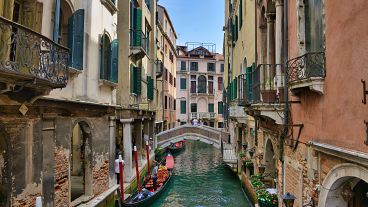
Venice entry fee: Here's when and how much you'll have to pay in 2024
Where to fly on a budget this summer
Airfare experts share their forecasts for summer vacation destinations that won’t break your budget.

This summer is shaping up to be another scorcher , and the demand for summer travel is piping hot, too. If early 2024 trends are any indication of what’s to come, “it’s looking to be busier than 2023,” said Katy Nastro, spokesperson for the flight booking site Going . Recent airport passenger volume numbers have regularly exceeded last year and pre-pandemic levels.
Jeff Klee, CEO of CheapAir.com , says airline capacity has rebounded from pandemic complications, but strong travel demand means summer flight prices can be high, depending on when you’re hoping to go. Flying in June, July or early August will be more expensive than later in the season, according to the company’s summer forecast .
“And it’s not just the airfare,” Klee said in an email. “Expensive hotel rates and crowds everywhere make Western Europe tricky for the summer.”
Despite the price tag, “people are going to go,” said Melanie Fish, the head of global public relations for all Expedia Brands, including Vrbo, Expedia and Hotels.com . “When we look at searches for destinations, they are definitely up year over year.”
For popular destinations like Europe , Klee and Fish say to push trips later into August, September or even October. Not only will prices soften, but you’ll alleviate some of the strain of overtourism .
“My number one tip is go ahead and take that summer vacation, but maybe hold on to take that big, big trip in September,” Fish said.
According to Expedia’s summer 2024 travel outlook , we’re currently in the sweet spot for shopping for early summer flights at the best rates, as Fish says lower fares tend to pop up 21 to 60 days out. It doesn’t hurt to start your search even earlier, setting up price alerts to flag when airfare drops. If you can swing it, look to fly on a Monday for international trips or a Tuesday for domestic trips to save up to 15 percent on fares, Fish added.
It’s not impossible to find good deals on airfare, whether you’re looking for a tropical beach trip , a mountain adventure or a vibrant city. Here are places that are trending cheaper — and the destinations you’ll want to avoid.
Go to Mexico
Sun, surf, culture, chilaquiles — Mexico is always a good idea , but particularly so this summer. With the opening of the new airport in Tulum , U.S. airlines have been adding gobs of new flights to Mexico, particularly to beach regions. “We’ve seen a healthy amount of deals down to Mexico resort areas like Cancún,” Nastro said.
Laura Lindsay, global travel trends expert at Skyscanner , says three Mexican cities — Cancún, San José del Cabo and Puerto Vallarta — are among the top 10 destinations offering travelers the best bang for their buck in 2024.
To escape the summer heat, Phyllis Stoller, president of the Women’s Travel Group , recommends high-altitude destinations like Mexico City or Ixtapan de la Sal, a town near Mexico City with thermal springs.
Avoid European port cities
If you’re considering a visit to a popular European city that’s also a cruise hub, beware. Not only will you be battling the usual summer crowds, you’ll be joined by thousands of day-trippers flooding into the ports — meaning Barcelona, Venice , Athens and Santorini.
Sandra Weinacht, who co-owns the tour company Inside Europe Travel Experiences , says you can avoid some of the madness in these hot spots by staying in neighborhoods away from the typical tourist zones. You can also visit top sites in the late afternoon or evening, after cruise travelers have returned to their ships.
Better yet, wait to visit until the shoulder season
Go to Colorado
Epic hiking, breathtaking nature and more craft beer than you could ever try in a lifetime: The Centennial State is a domestic gem. Ashlee Collins of Inspirato , a luxury travel and lifestyle subscription service, says Vail is popular among members this summer. Not only is the ski resort beautiful sans snow, it’s drivable for many, cutting a significant cost for travelers.
Airfare to Colorado is looking more reasonable than other domestic vacation hubs. Nastro recently spotted a Miami-to-Denver, round-trip fare over the July Fourth holiday for just $199. She says an average round trip from major U.S. cities is running between $173 and $250, but those prices are expected to climb upward of $350 the closer we get to summer.
Avoid places at risk for wildfires
Wildfires have become an unfortunate fixture of summers in the Northern Hemisphere. Last year’s fires in Europe — including those in Cyprus and Greece — were among the worst so far this century, the European Commission reported .
Stoller says fire risk has been a factor in her summer travel planning; she nixed a New England cruise after remembering how bad smoke was last year because of the fires in Canada . “None of us can predict everything, but that would be something I would be aware of,” she said.
Extreme heat is also an issue. Last July, Southern Europe experienced excessively high temperatures from a “heat dome.”
“There’s a concern about heat,” Stoller said. “Last summer was really painful.”
Go to the Caribbean
The Caribbean has its peak tourist season during the winter, when Americans flock to warmer waters. That means summer trips to the region tend to be quieter and cheaper.
“You can go under $300 to pretty much all of the islands: Puerto Rico, Jamaica, Aruba, Dominican Republic,” said Lindsay Schwimer, a consumer travel expert at Hopper . She’s seen similar price point flights to Colombia.
Lindsay of Skyscanner also said Puerto Rico and the Bahamas offer some of the most affordable flights from the United States this summer.
Avoid Paris
Unless you’re going for the Olympics , skip the French capital this summer.
“Paris is always a top destination in the summer, but this summer … it’s going to be on another level,” said Madison Pietrowski, head of U.S. brand at GetYourGuide .
Not only are hotel prices high, “we’re seeing that some of the top attractions like the Louvre have raised their ticket prices,” Pietrowski said.
Nastro says the crowds are going to be “bananas” during the Games, and not just in Paris. Olympic travelers are likely to add on other French destinations to their trip, like Nice — which will host soccer games — or the Côte d’Azur, which already gets popular in the summertime.
Even if you try to get ahead of the rush by visiting before the July 26 start date, you may still have some Olympics-related headaches in the French capital. As the city races to finish prep, “you might find that there’s going to be eyesores and scaffolding and loud noises early in the morning,” Nastro said.
Go to rural Europe
Interest in Western Europe has not slowed down, and Americans are expected to surge back en masse this summer. If you’d like to avoid them, put rural European destinations on your radar.
Weinacht is bullish on Spain’s Rioja region , the Basque countryside and the central Italian region of Umbria, which borders Tuscany but does not see the same levels of tourism. She’s also a fan of Carinthia, the least-populated state of Austria. “It is castle- and lake-dotted, doesn’t get too hot, and oh, the food and stories the cities and villages can tell,” Weinacht said in an email.
Weinacht says she’s been getting more requests from Americans for trips to her homeland, Germany. The country is easy to navigate with its high-speed trains, and offers a mix of small and big cities spread across powerhouse wine regions, UNESCO World Heritage sites and many food festivals . According to Skyscanner, airlines in the United States have been increasing their flights to Germany — namely, Frankfurt, an international business hub — meaning you may be able to find more deals.
Avoid Sicily and Amalfi
If your dream Italian destination has been featured on TV lately, that’s a red flag. The last season of “The White Lotus” spurred an interest in already popular Sicily ; the same is happening to the Amalfi Coast thanks to the new Netflix miniseries “Ripley.”
“They’re really going to be the most expensive and they’re going to be pretty crowded for the summer,” Schwimer said.
Where to go
Our favorite destinations: These 12 destinations are at the top of our wish list for where to go this year, without crowds. In 2023, we explored an Alaskan bear paradise, Brooklyn’s famous pizzerias and a hidden gem in Italy, among other highlights .
Travel like a local: Residents share their favorite places in our top city guides: New Orleans , Rome , Tokyo and Mexico City .
National parks: This comprehensive guide has details on all 63 U.S. national parks. For a deep dive into five of the most well-known, you can listen to the Field Trip podcast . Then explore tips from locals for visiting Yosemite , Glacier and Everglades .
Tales from the road: Dolly Parton has opened a new resort at her theme park complex in Tennessee, while “Fixer Upper” stars Chip and Joanna Gaines have a new hotel in Waco . Road-trippers may be just as excited to see the cartoon beaver at Buc-ee’s , and bargain-hunters should consider a stop at the Unclaimed Baggage store in Scottsboro, Ala.

More From Forbes
Mother’s day gift guide 2024: the best dresses for traveling moms.
- Share to Facebook
- Share to Twitter
- Share to Linkedin
Free People's Oasis Midi Dress is ideal for moms heading to Taylor Swift's Eras concert or pretty ... [+] much amywhere.
Elevate her travel style game with these gorgeous dresses that look as good as they feel. In fact, they’re so comfortable, they may replace her old sweats and tees.
Whether she’s dressing for long days of sightseeing, evenings at trendy restaurants or Taylor Swift’s Eras concert, she’ll love these options that pack easily and ensure she looks great.
Free People Bayside Mini
Short and sweet, this versatile dress can be styled so many different ways. Thanks to its billowy silhouette, she’ll feel great whether she’s wearing it as is, with leggings or tossed over a swimsuit. Part of Free People’s free-est collection, it’s lightweight with lots of interesting detailing. Available in a variety of colors, it’s likely to accompany her on every trip. Price: $68
Lilly Pulitzer Jannie V-Neck Cotton Dress
This pretty in pink mini is resort wear at its best, boasting both style and substance. Soft and oh so comfortable, it radiates Lilly Pulitzer’s signature Palm Beach chic and will immediately make her smile. Plus, the lovely toile print is also available in child sizes for Mommy and Me matching. Price: $118
Cozy Earth Midi Dress
She’ll feel as comfy in this bamboo dress as she does in Cozy Earth’s iconic sheets. The midi length can take her from flight to night and can easily be dressed up or down. Available in three neutrals, it’s got a flattering fit, side slits for easy movement and, because Cozy Earth knows what a woman really wants, pockets. This dress is likely to become her travel staple. Price: $195
Apple iPhone 16: Unique All-New Design Promised In New Report
Meet the fintech billionaire making a fortune rewarding home renters, huawei s pura 70 ultra beats iphone with pioneering new feature, free people in your dreams maxi.
Free People In Your Dreams Maxi Dress
No one does boho better than Free People and this one’s for the Folklore / Evermore moms heading to Europe to see Taylor Swift this summer. Featuring layers and tiers of ties and ruffles, it’s available in seven colors and is willowy and comfortable for twirling and dancing. Price: $128
Garnet Hill Marina Crepe Dress
Relaxed yet super flattering, this flowy dress is bound to garner lots of compliments wherever she travels. It’s got a casual vibe, with its drop waist and pockets, yet is sophisticated enough for a night out. Luckily, it comes in a handful of pretty prints – which is great because she may never want to take it off. Price: $169
Quince 100% European Linen Short Sleeve Swing Dress
Perfect for summer sightseeing, this relaxed dress is so pretty, with a breezy yet sophisticated silhouette. It’s made of certified OEKO-TEX 100% eco-friendly linen so it’s lightweight and breathable and it travels surprisingly well. It comes in four colors and features thoughtful details like functional buttons and pockets. And, because it’s from Quince, you know the quality is unparalleled for the price. Price: $59.90
Kenny Flowers The Sunshine State Tunic Dress
Getting dressed is as easy as a day at the beach with this tropical tunic dress from the vacation fashion experts at Kenny Flowers. Lightweight, with a flirty silhouette, beautiful trim detailing and a cheery pelican print, it can be worn as a cover up by the pool or on its own anywhere for effortless style. Price: $168
Rails Aureta Dress
Juicy in Papaya, this gauzy number is as refreshing as an icy sorbet. California-based Rails is all about versatility, quality and comfort – all of which make this flirty little dress a traveler’s dream. A featured piece in the brand’s Eco Collection, she can rest assured it’s as sustainable as it is stylish. Price: $228
- Editorial Standards
- Reprints & Permissions

IMAGES
VIDEO
COMMENTS
3. Check Europe Travel Visa Requirements. Americans traveling to Europe won't need a Visa to travel to most countries on the continent. Europe travel visas are a little complicated, but you can learn more about them here. If you're looking to stay in Europe for more than 90 days, read this. Beginning in 2023, US citizens and citizens of other previously non-visa countries coming to the EU ...
An important must-know for all first time visitors to Europe is that border-free travel doesn't exist across the continent (as is commonly believed). Rather, border-free travel apples only between countries in the Schengen Area, this group of 27 countries (accurate as of 2023): Austria. Belgium. Croatia.
8. Stay Longer in One Place. Staying in one place longer can allow you to experience the city or neighborhood like a local. Making friends with locals, finding local restaurants restaurants and venturing off the beaten path, can make for exciting travel stories and often the most memorable experiences.
Travel information for Europe's best destinations across 25+ countries. Explore Europe with Rick Steves' travel guide to the best destinations and recommended sights, things to do, tips, and videos along with much more travel information.
Woke up at sunrise in Florence to get a crowd free photo! One of my top Europe travel tips is to get on an early schedule. The earlier you are up, the fewer the crowds, especially in prominent iconic places like The Duomo in Florence or Milan, the Trevi Fountain, the Acropolis, the Eiffel Tower, and Buckingham Palace.
Learn from a couple who has spent over 1.5 years traveling in Europe and living in Lisbon. Get tips on hotels, restaurants, transportation, sightseeing, packing, and more.
Learn how to plan a trip to Europe in 10 simple steps, from getting your documents in order to booking your accommodations. Find tips on budget, destination, itinerary, transportation, and more.
Explore Europe's natural beauty, epic history and dazzling diversity with Lonely Planet's expert guidance. Find attractions, articles, guidebooks and activities for your next trip to Europe.
Europe Travel Guide. Destinations. Rome. The world's greatest outdoor museum. Paris. Have the best trip imaginable in the City of Lights. Barcelona. Just don't confuse it with Spain. Florence.
Get support from our local experts forstress-free planning & worry-free travels. Plan your visit to Europe: find out where to go and what to do in Europe with Rough Guides. Read about itineraries, activities, places to stay and travel essentials and get inspiration from the blog in the best guide to Europe.
Europe. A Grand Tour of Europe is an iconic trip for a reason: The continent packs an incredible amount of diversity into a relatively small space. Feast on pasta and gelato in Italy, chase the Northern Lights in Scandinavia, and island hop in Greece. Or step off-the-beaten-path to see Romania's haunting castles and the Baltics' charming seaside.
Step 11: Purchase travel insurance. Don't forget to purchase travel insurance before jetting off to Europe! While Europe is generally a perfectly safe place to travel, the reality is that traveling in general opens you up to vulnerabilities that you simply don't have at home. READ NEXT.
Learn how to plan your trip to Europe with this comprehensive guide. Find out the best things to see and do, typical costs, money-saving tips, where to stay, how to get around, and more.
US Department of State's travel site Info on foreign-entry requirements, travel warnings, and more; TripAdvisor and Booking.com Traveler reviews, and hotel prices and availability; Via Michelin Maps and route planner; Deutsche Bahn Train schedules for anywhere in Europe (see my tips for using it); Rome2Rio Compiles different transportation options from one destination to another
Learning from the following rookie mistakes ahead of your trip will minimize the stress of traveling, while also saving you time and money. Getty Images. 1. Taking a Cab. Nope, not even from the ...
Southern Europe: Southern Europe is made up of all the countries close to the Mediterranean Sea. Spain, Italy, Malta, Greece, Croatia, Bosnia and Herzegovina, and Montenegro are some of the most visited destinations in the region. It's known for its incredible sailing, natural wonders, and ancient history. And the food and wine!
Solo Female Travel in Europe. Your ultimate guide to taking on the continent. Extraordinary train journeys. Green Spain by tourist train. Poland by train. Serbia's movie-set landscape. Trails and rails in Luxembourg. Cyprus' railway heritage. View all Tips to plan your travel to Europe. Traveling around Europe. Tips to communicate in Europe ...
3) Mallorca (Spain) As you travel in Europe, you'll find many gems. The sunny Balearic island of Mallorca is one of them. With its Gothic cathedral, historic old town and seaside bicycle path, the island's capital of Palma de Mallorca is a great base to stay for at least a few days.
Get information on Europe Travel Guide - Expert Picks for your Vacation hotels, restaurants, entertainment, shopping, sightseeing, and activities. Read the Fodor's reviews, or post your own.
Rick Steves' travel tips help maximize your time and money spent in Europe and beyond. Travel Tips topics include packing, planning, safety, tourist scams, transportation, money, sleeping, and much more.
The Schengen Area is a coalition of 27 European countries that allow borderless travel between them. Travelers from several countries, including the UK and the US, do not need a visa to visit any ...
Apr 18, 2024, 8:07 AM PDT. I've traveled to over 50 cities in Europe. Dasha Kofman. After visiting over 50 European cities, I'm often asked which places have been my favorites. However, I've found ...
The quickest way to reach Milos is by plane. Flights from Athens International Airport (Eleftherios Venizelos) to Milos operate daily and take about 45 minutes. Alternatively, take the ferry from ...
A guide to Bad Ischl, the Alps' first European Capital of Culture. Sitting between baroque Salzburg and Austria's alps, Bad Ischl, the 2024 European Capital of Culture combines the appeal of both.
Rick Steves is America's leading authority on European travel. Plan your own trip or take one of Rick's value-packed European tours and vacations. Everything you need is here. Go! My Account. Tour ... Travel Tips. Find tips on everything from itinerary planning and packing to transportation, eating, and sleeping.
Key travel tips you need to know — whether you're a first-time or frequent traveler; Best travel credit cards; Where to go in 2024: The 16 best places to travel; 6 real-life strategies you can use when your flight is canceled or delayed; 8 of the best credit cards for general travel purchases; 13 must-have items the TPG team can't travel without
Passengers on easyJet and TUI flights departing from London's Gatwick Airport will be left hungry as Dnata catering workers go on strike. Around 100 workers, including HGV drivers and warehouse ...
Nastro recently spotted a Miami-to-Denver, round-trip fare over the July Fourth holiday for just $199. She says an average round trip from major U.S. cities is running between $173 and $250, but ...
Lilly Pulitzer. This pretty in pink mini is resort wear at its best, boasting both style and substance. Soft and oh so comfortable, it radiates Lilly Pulitzer's signature Palm Beach chic and ...